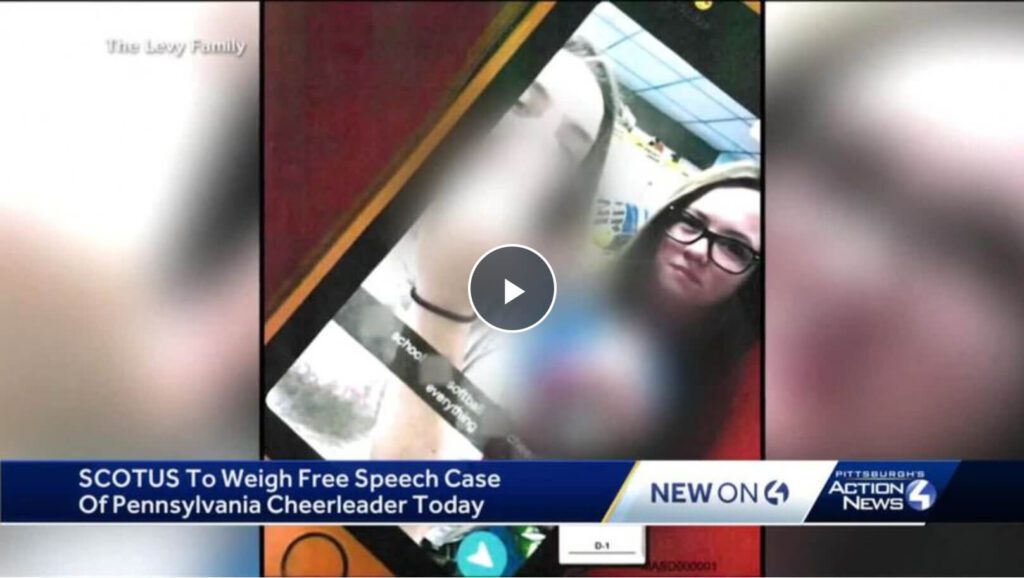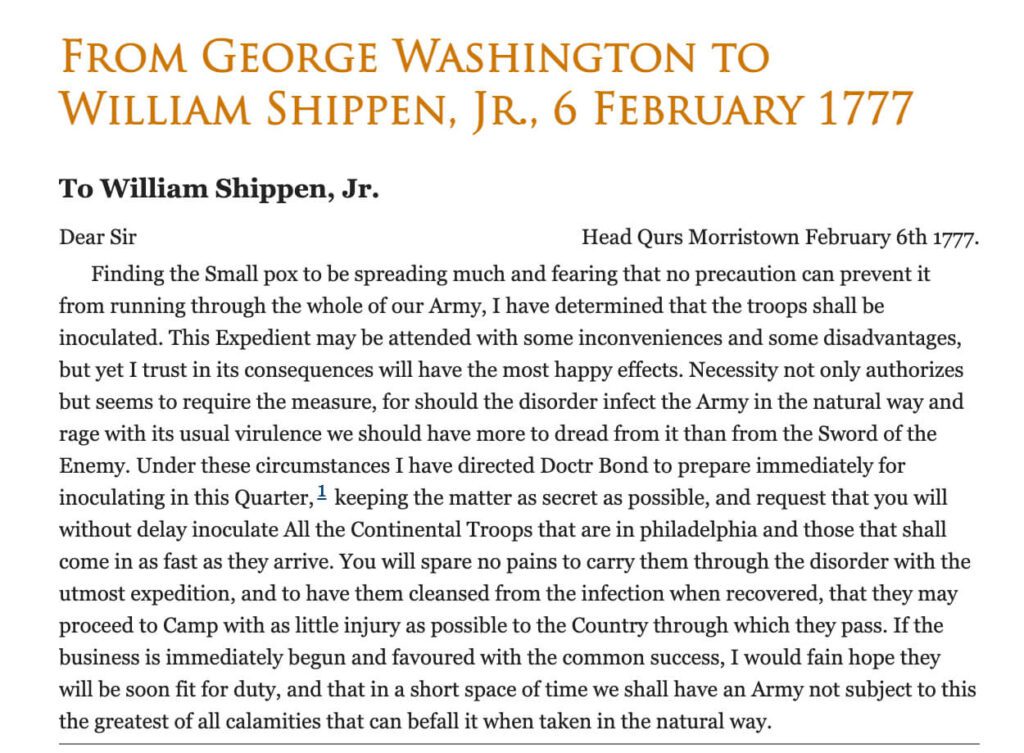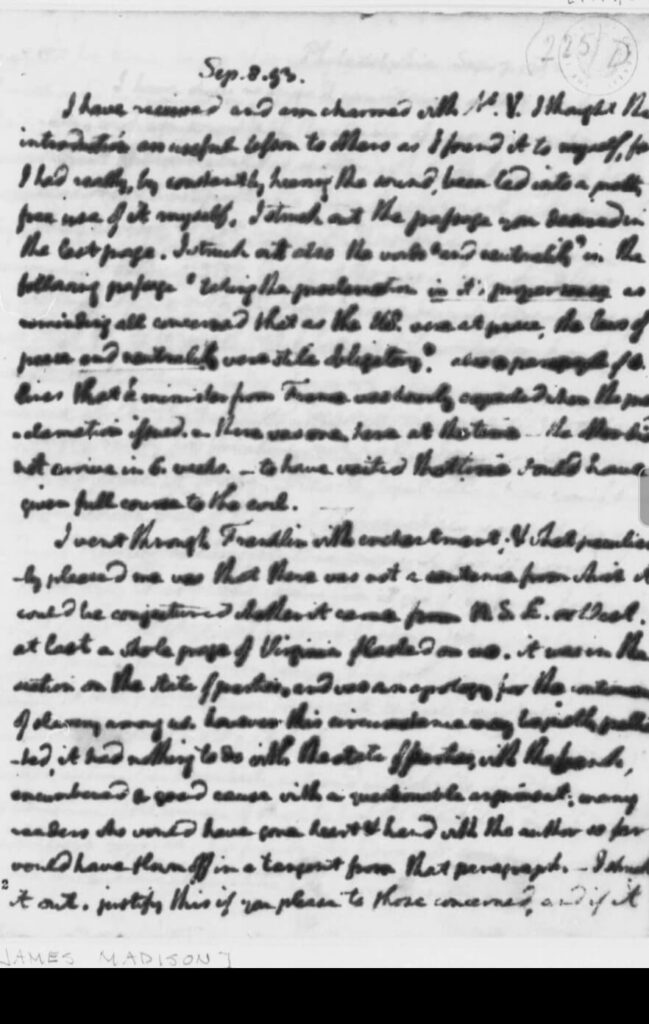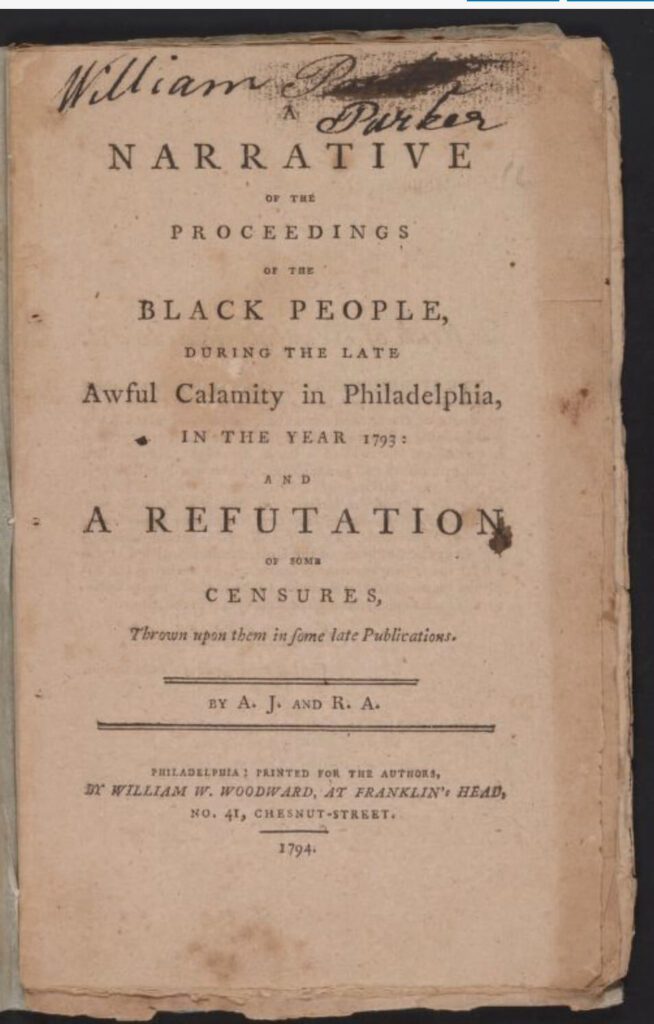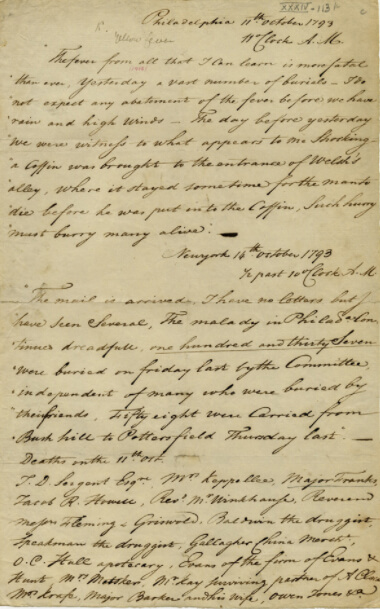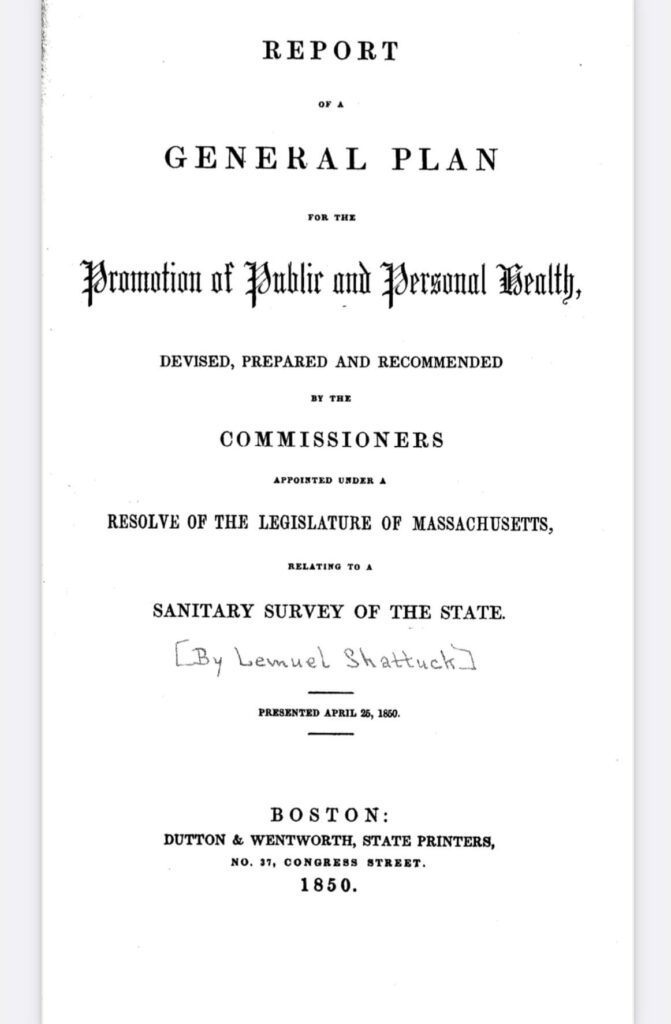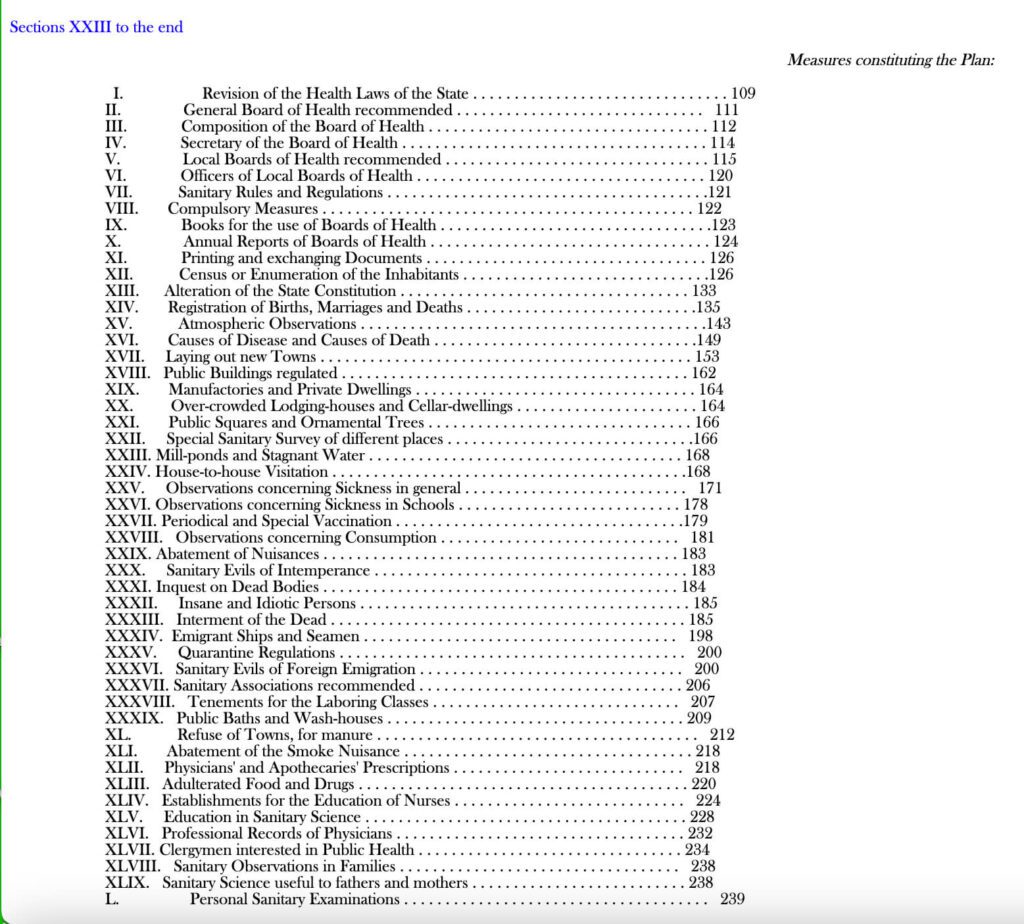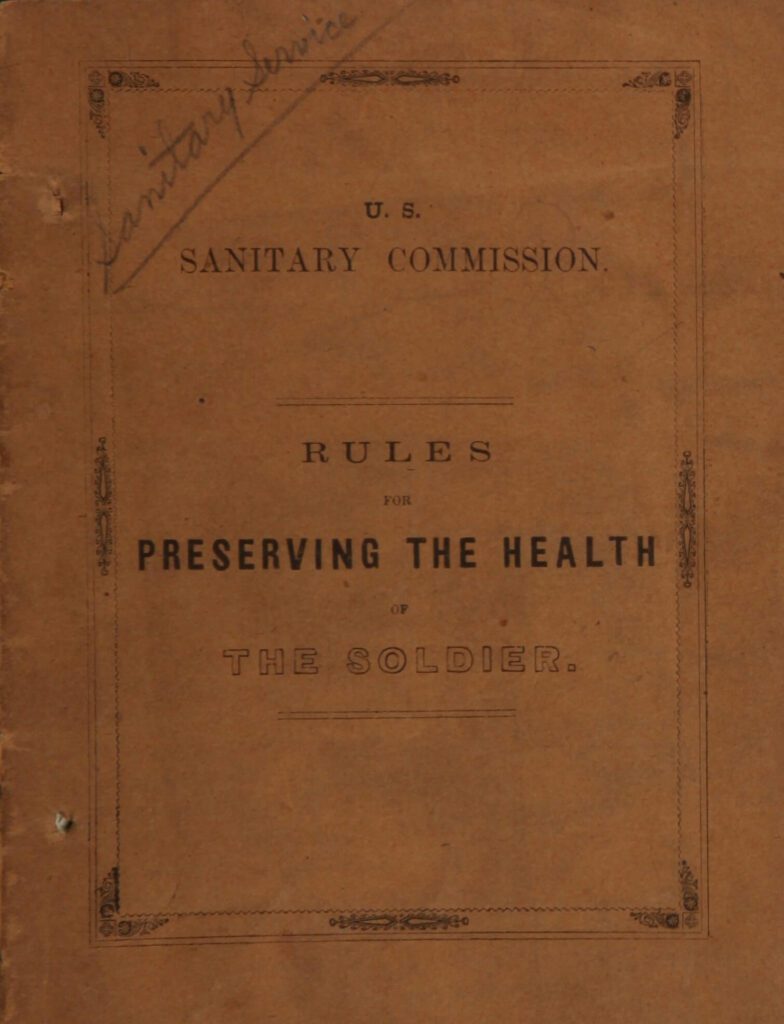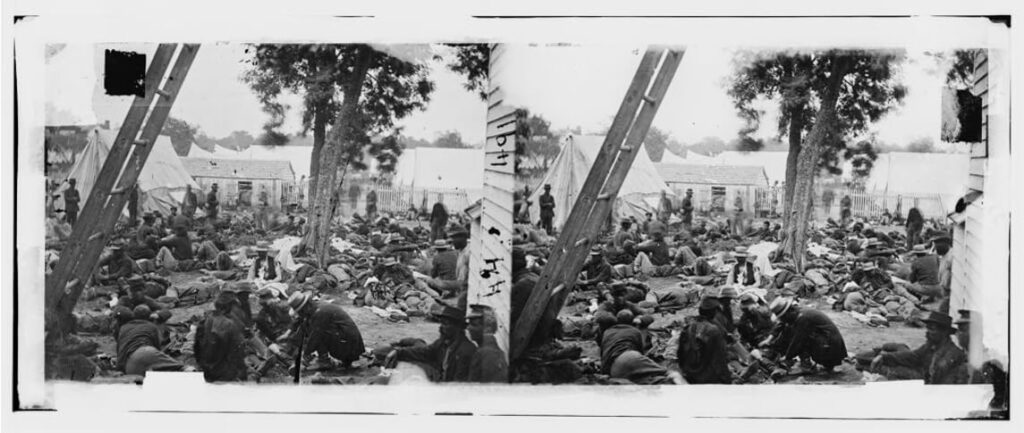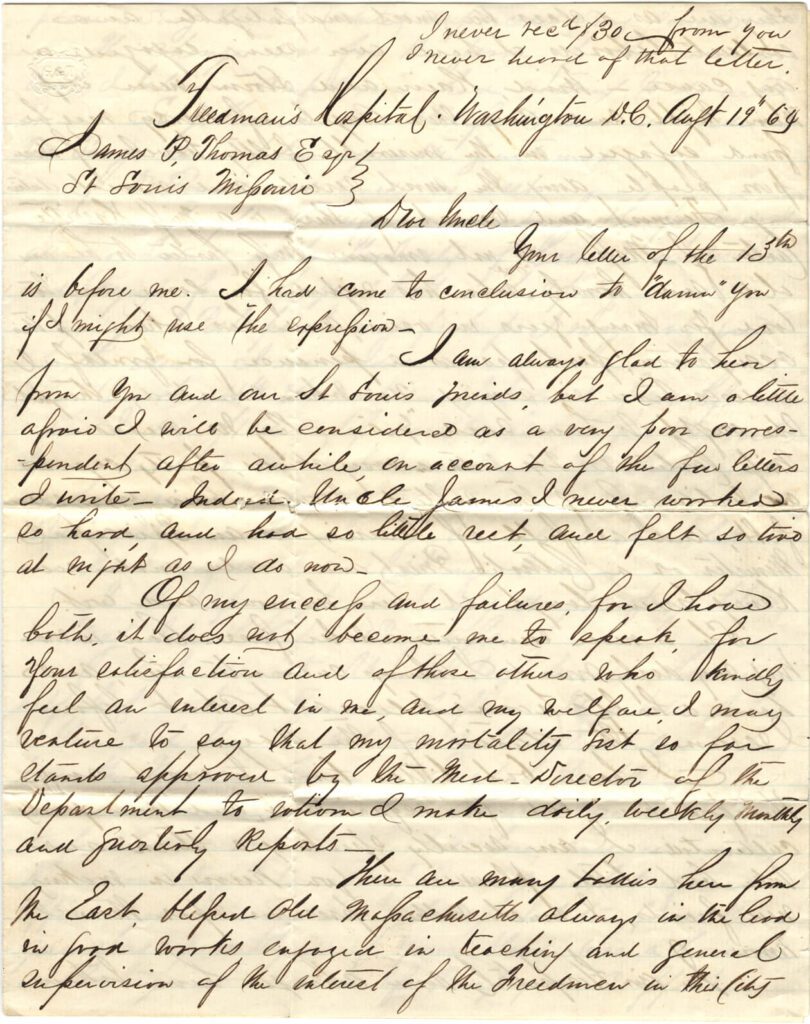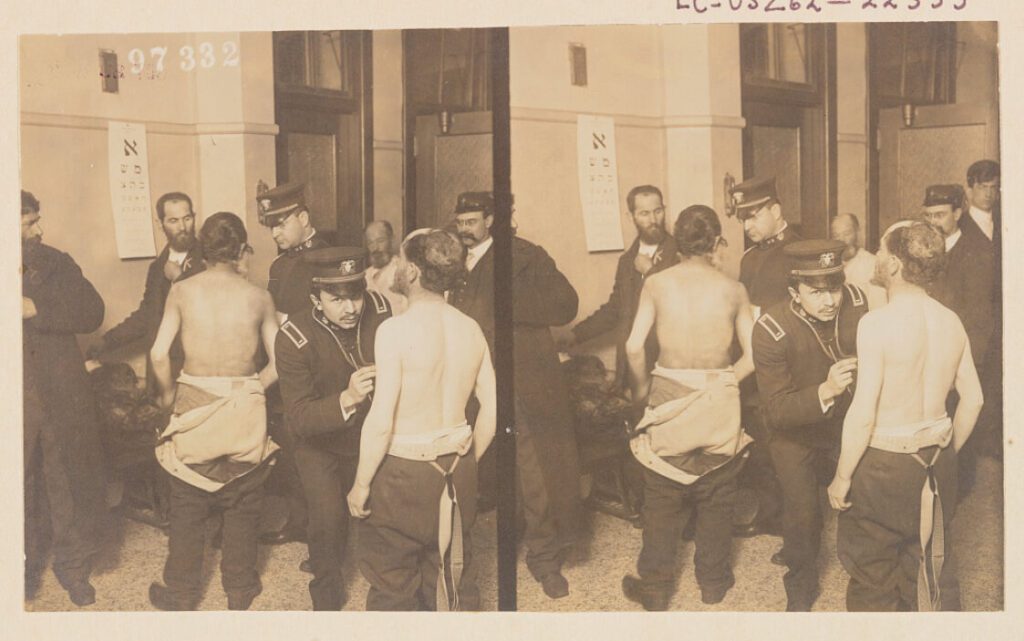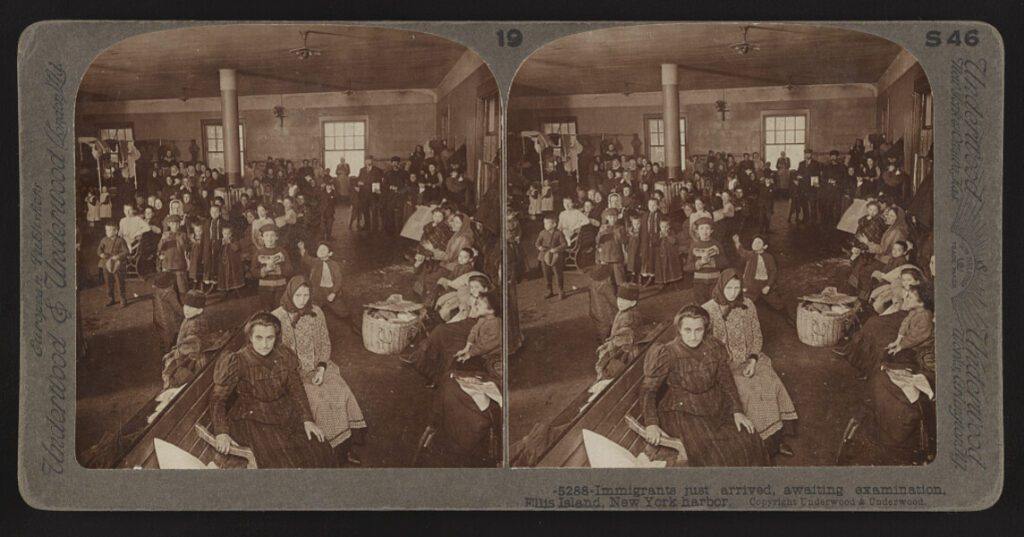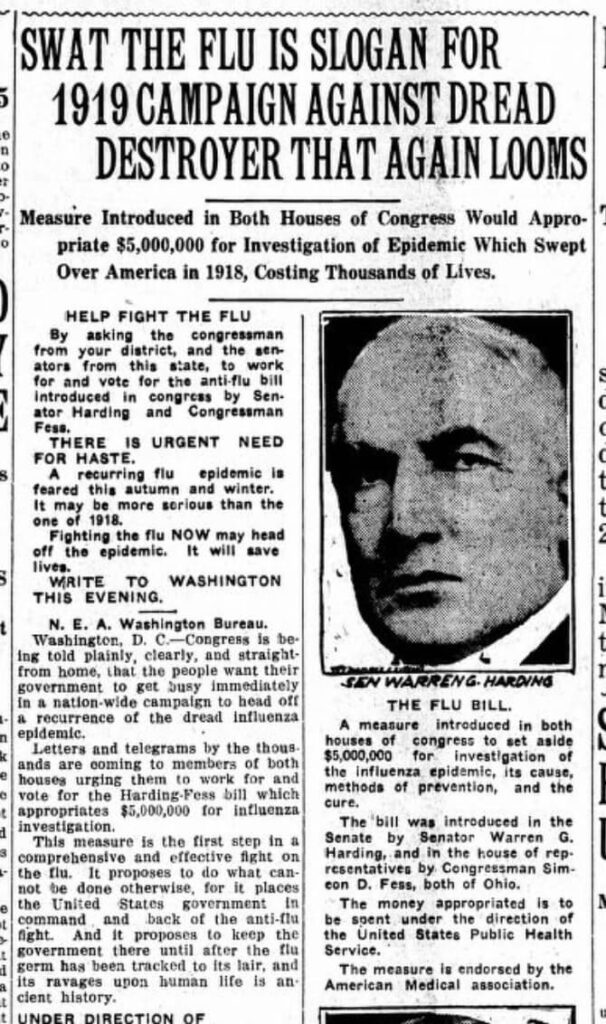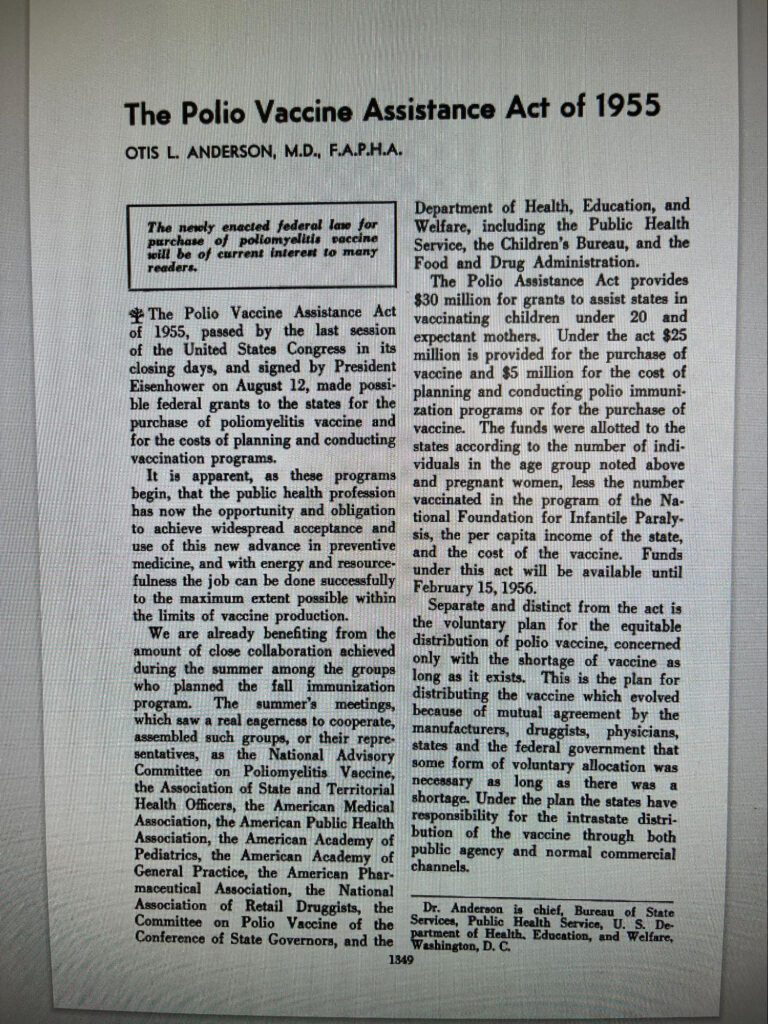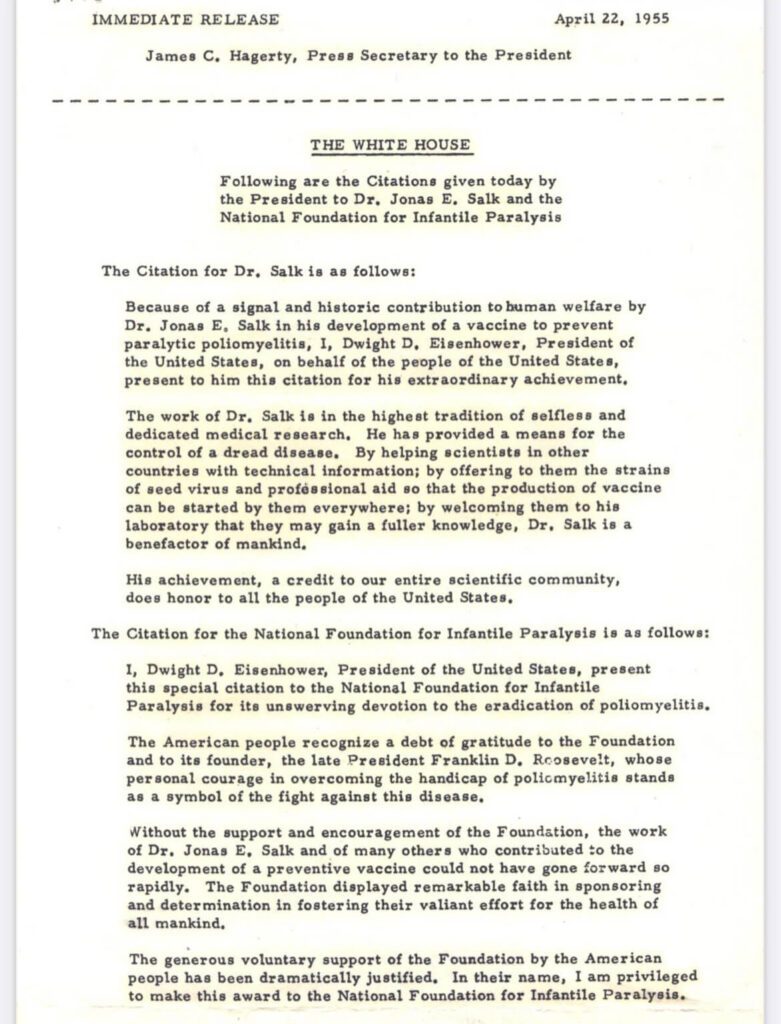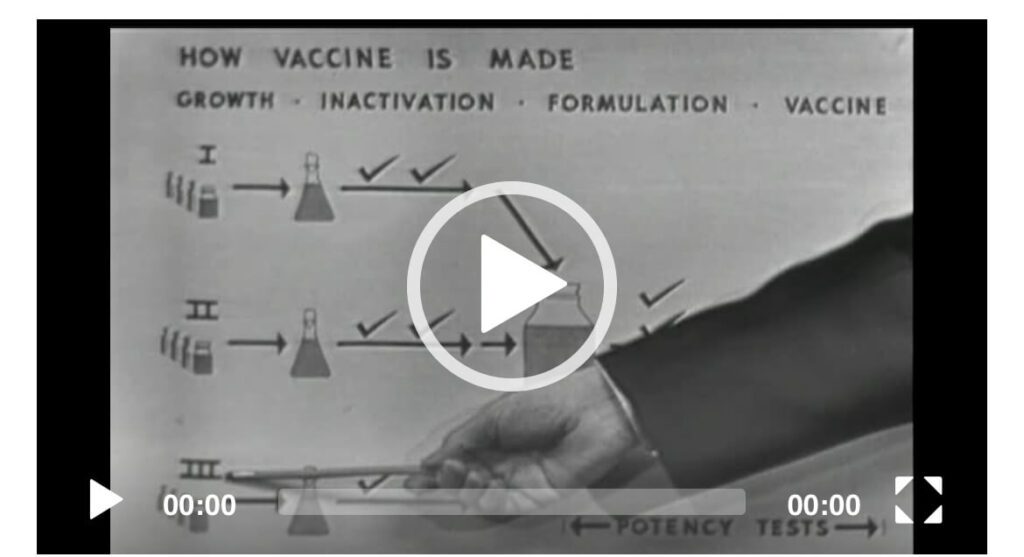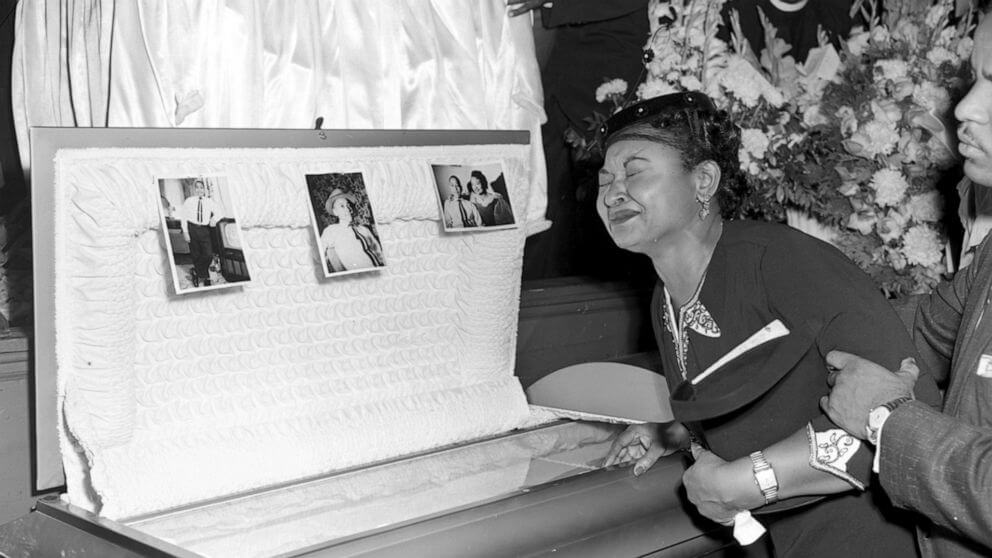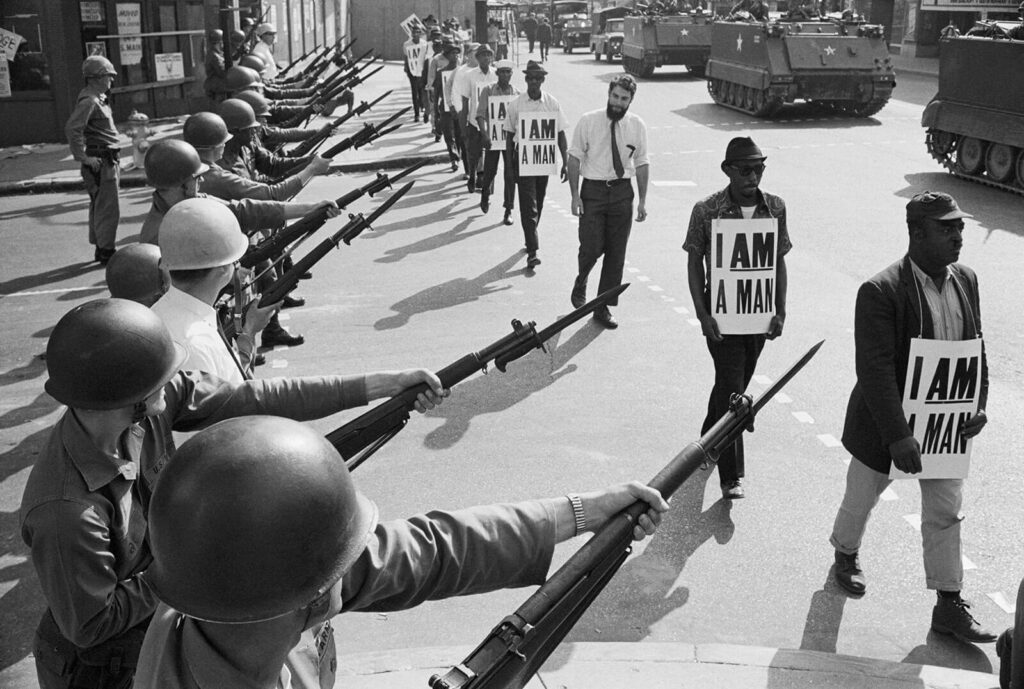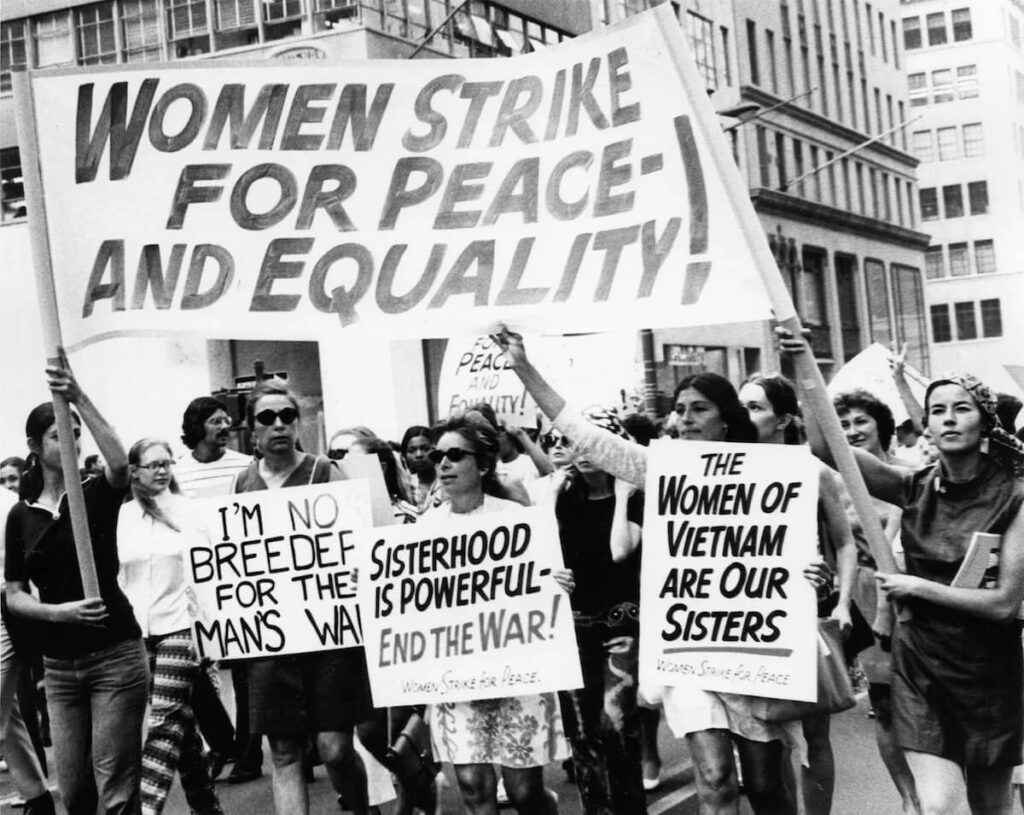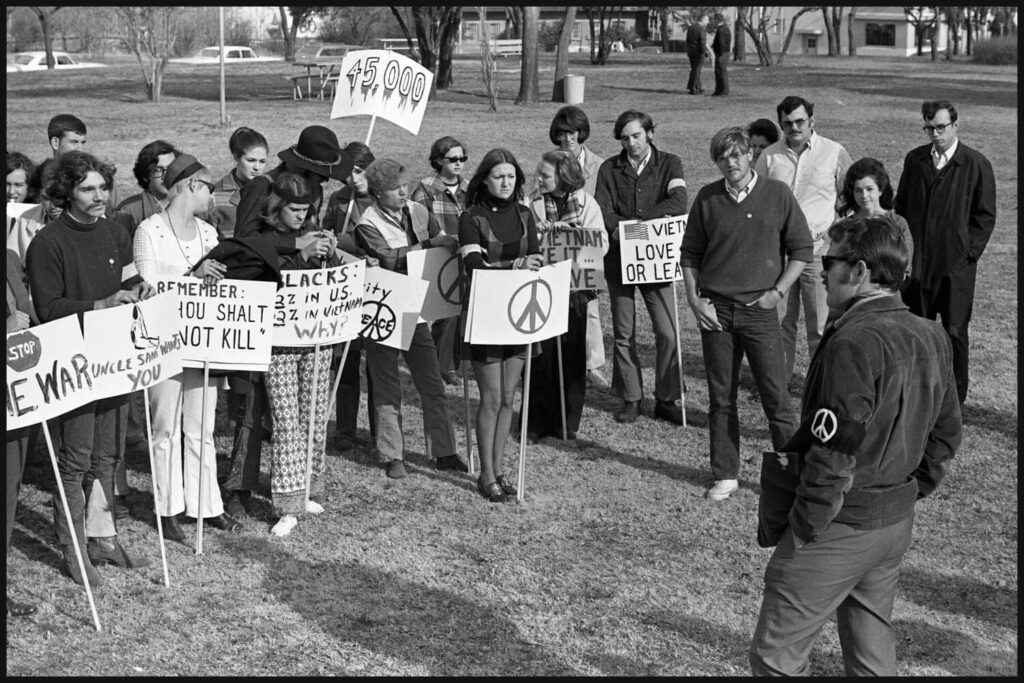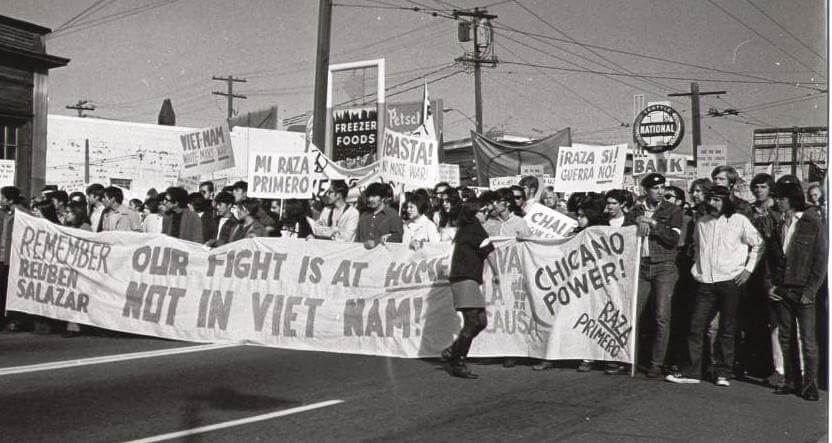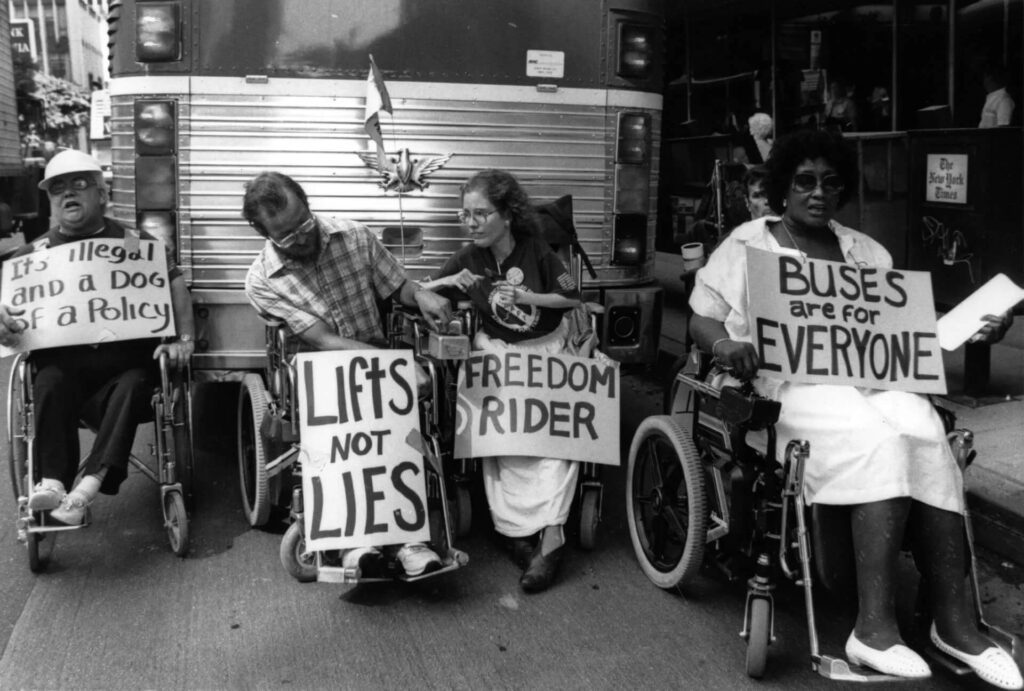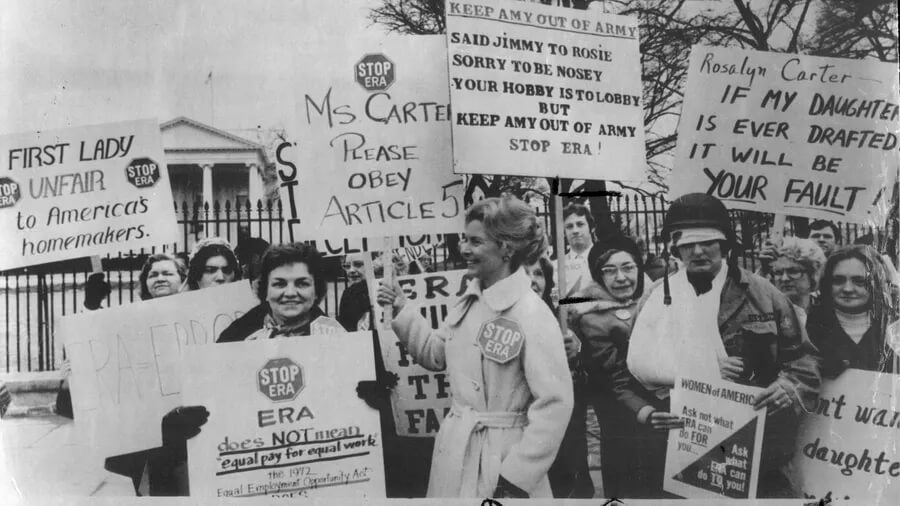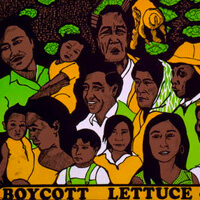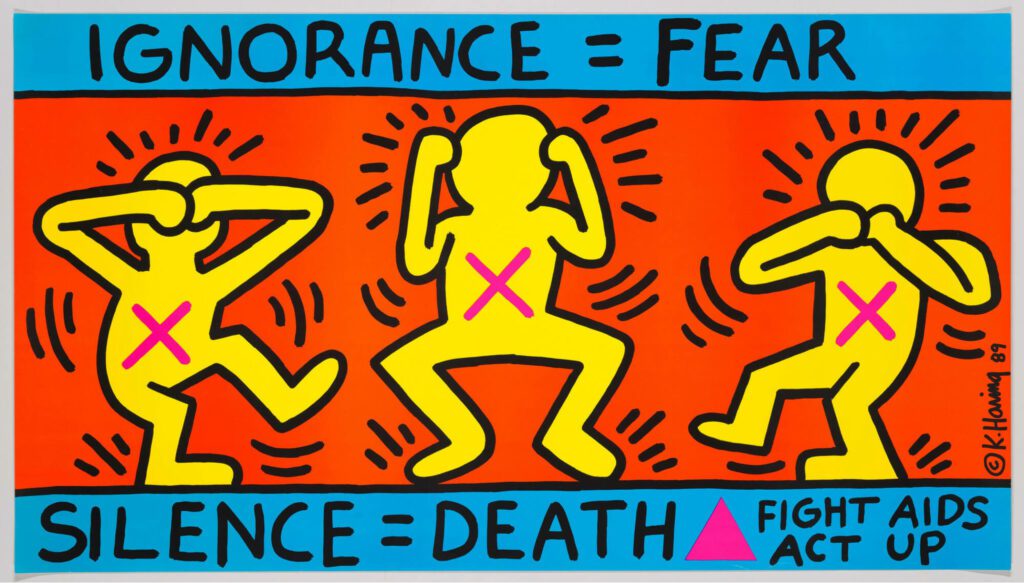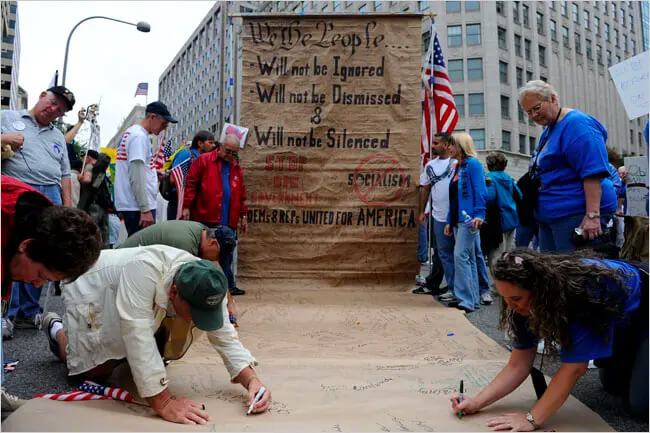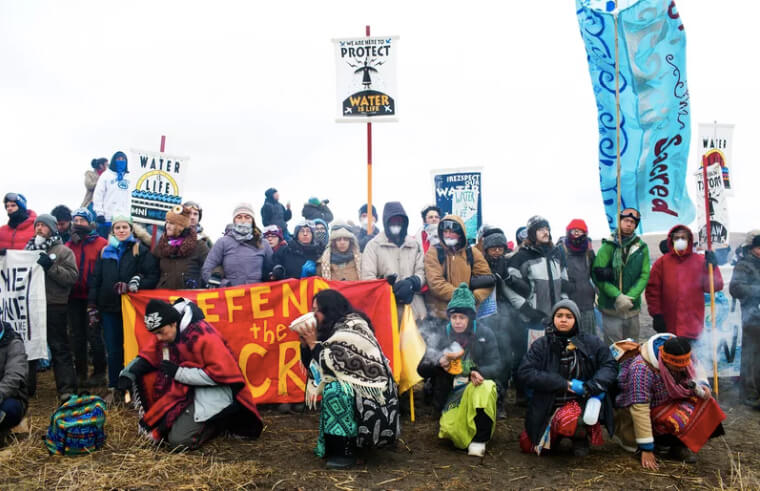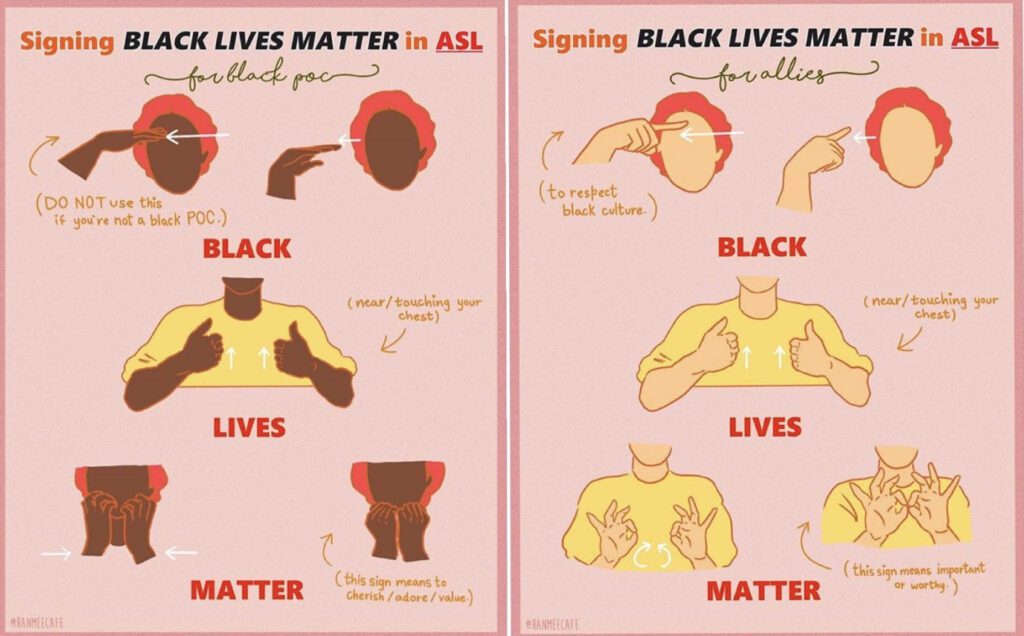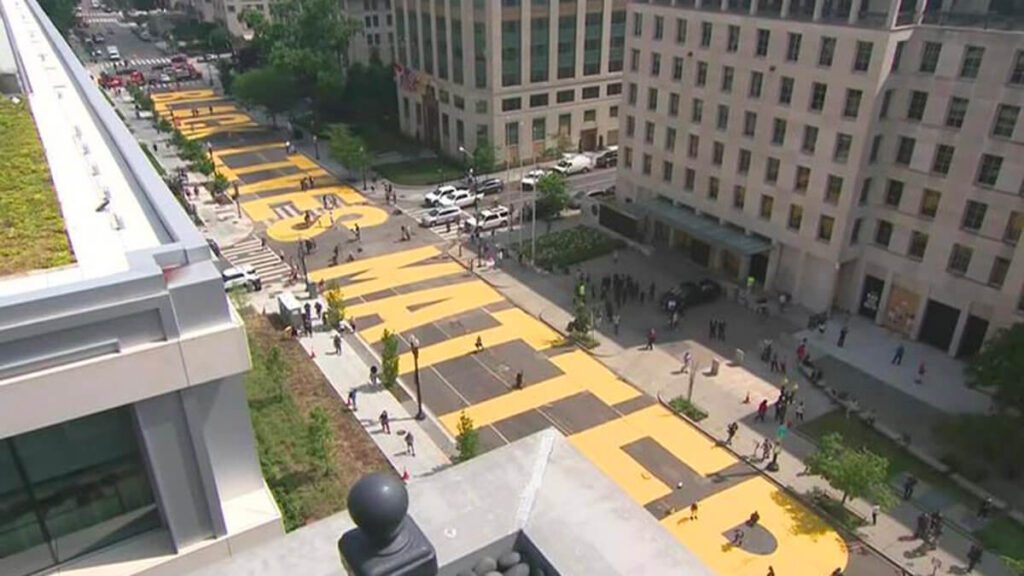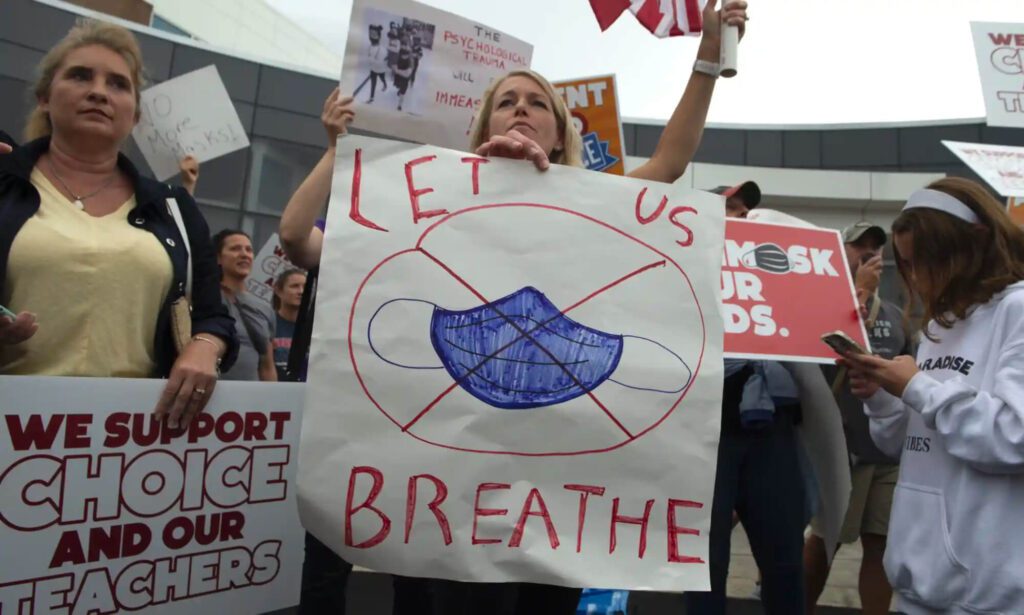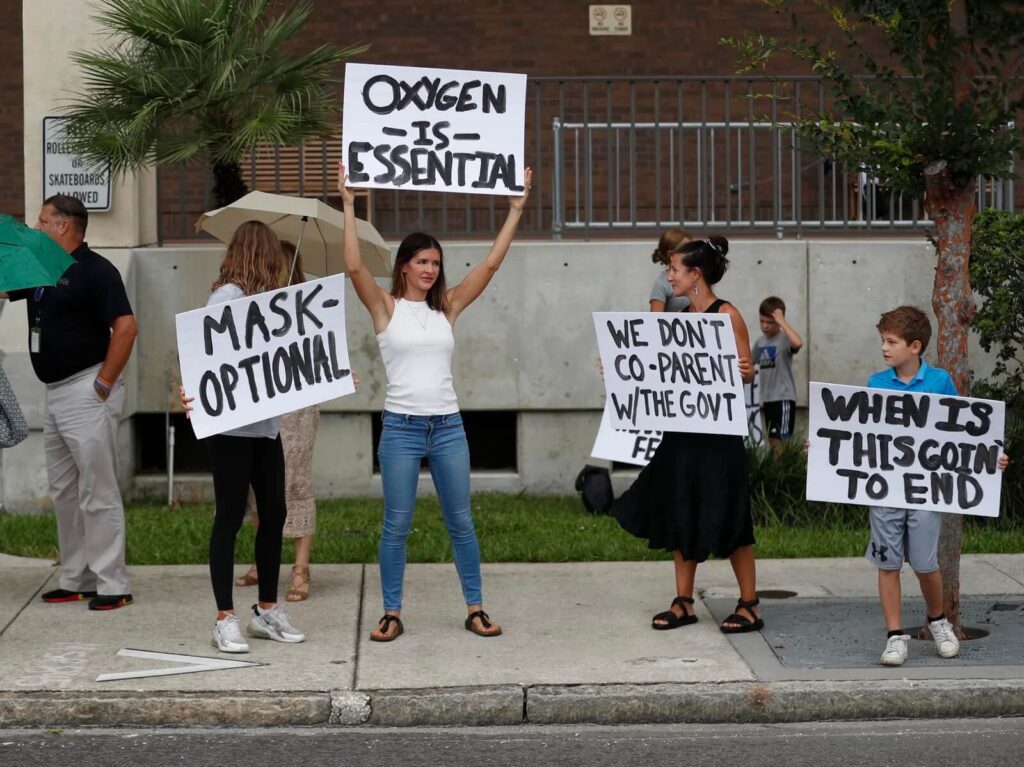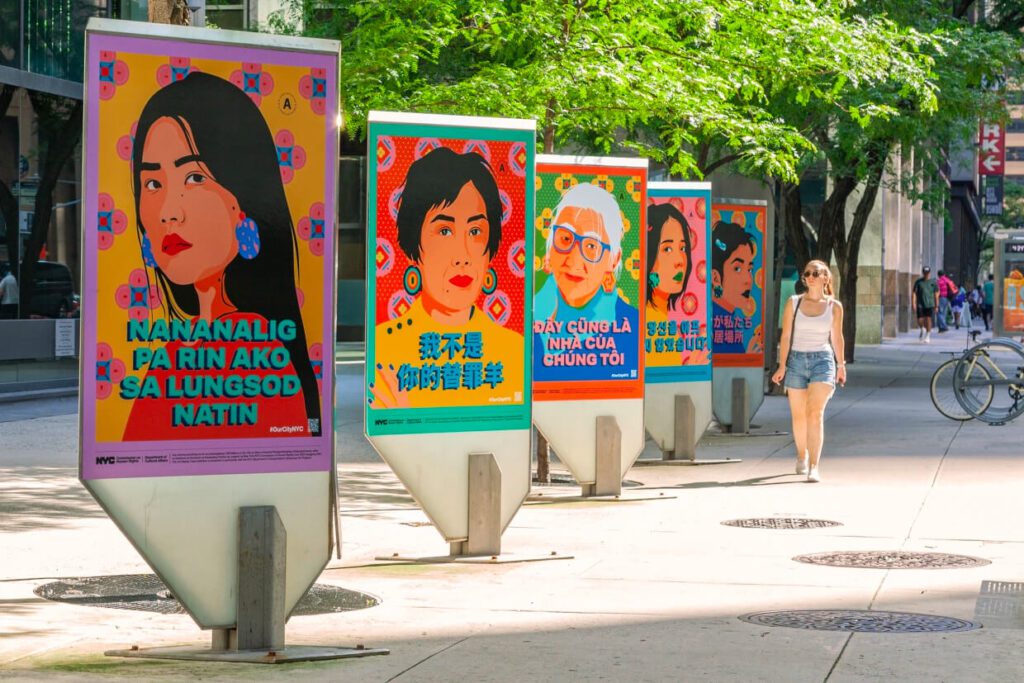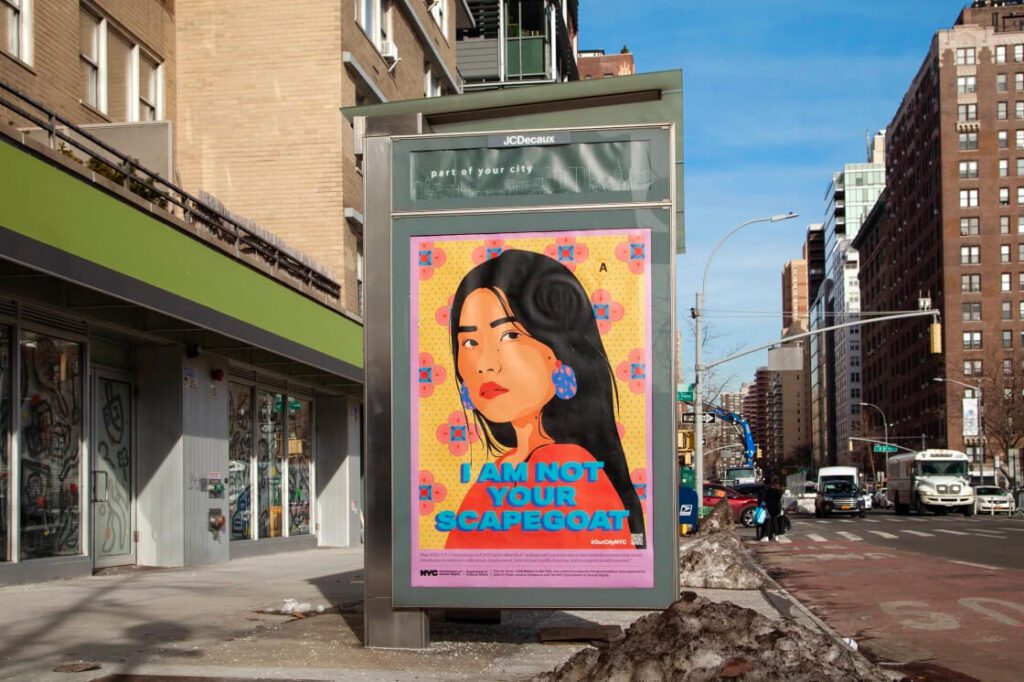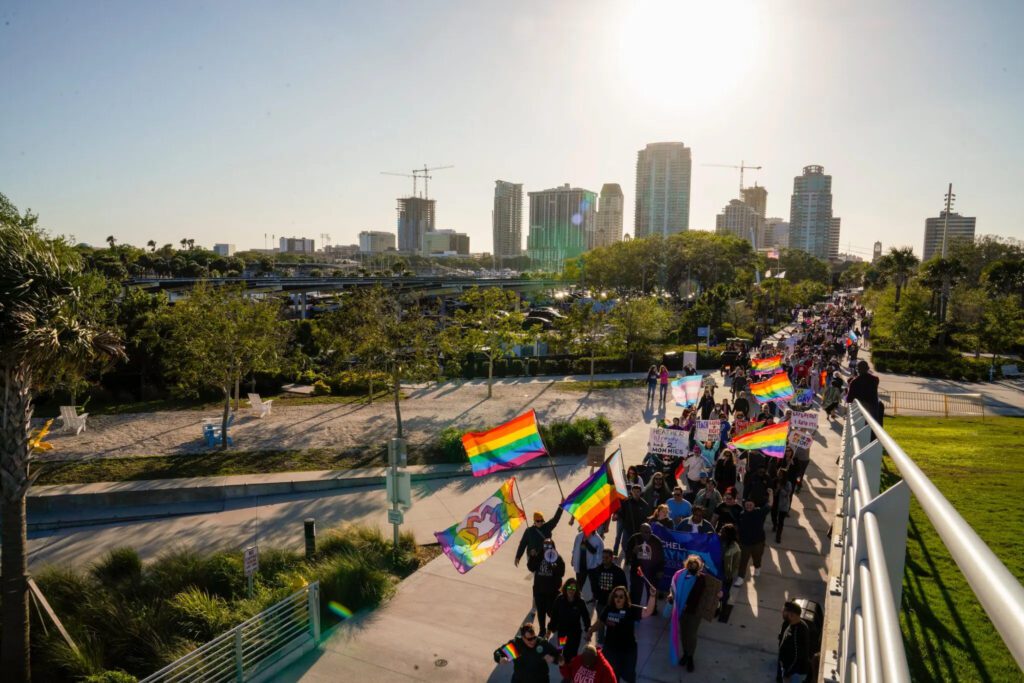The curated resources linked below are an initial sample of the resources coming from a collaborative and rigorous review process with the EAD Content Curation Task Force.
 Reset All
Reset All
The promises of equal rights in the Declaration of Independence and of political peoplehood in the Constitution were not granted to Black women throughout much of American history. Black women were brought to the colonies violently in the slave trade, or born into slavery in North America. Most were deprived of all freedoms as enslaved people. Black women were first entirely denied access to education, and then to equal access. They were disenfranchised, even when Black men and white women were ultimately granted the right to vote. Nonetheless, the voices of Black women resonate throughout American history in letters, speeches, personal narratives, court cases, journalism, higher institutions of learning, and political leadership. In all eras of American history, Black women use their voices to fight for the rights they were denied and to dismantle the legal, political, and philosophical barriers that stood in their way.
This Spotlight Kit features the voices of Black women who paved the way for the election of Kamala Harris as the nation’s first Black and Asian American Vice President and Ketanji Brown Jackson as the first Black woman on the Supreme Court.
The resources in this spotlight kit are intended for classroom use, and are shared here under a CC-BY-SA license. Teachers, please review the copyright and fair use guidelines.

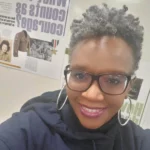

The Roadmap




















- Primary Resources by Era/Date1773 (1)1781 (1)1833 (1)1851 (1)1848 (1)1891 (1)1892 (1)1898 (1)1915 (1)1920 (1)1955 (2)1962 (1)1964 (1)1968 (2)1970 (1)1971 (1)2001 (1)
- All 19 Primary ResourcesPhillis Wheatley by an unidentified artist, Engraving on paper (1773)National Portrait Gallery, Smithsonian Institution
The National Portrait Gallery describes the singular achievement of Phillis Wheatley: “In 1773, Phillis Wheatley accomplished something that no other woman of her status had done. When her book of poetry, Poems on Various Subjects, Religious and Moral, appeared, she became the first American slave, the first person of African descent, and only the third colonial American woman to have her work published.”
CitePrintShare“Phillis Wheatley: Her Life, Poetry, and Legacy | National Portrait Gallery.” National Portrait Gallery, https://npg.si.edu/blog/phillis-wheatley-her-life-poetry-and-legacy.
Brom & Bett vs. J. Ashley Esq. (1781)“Mumbet,” who later took the name Elizabeth Freeman, was an enslaved woman given by one man, Pieter Hogeboom, to another, Colonel John Ashley, when Ashley married Hogeboom’s daughter in Massachusetts.
Mumbet sued for her freedom in 1781. “According to historian Arthur Zilversmit the people of Berkshire County then adopted Mumbet’s cause to test the constitutionality of slavery following the passage of the new state constitution. ‘Brom and Bett’ were the first enslaved African Americans to be set free under the new Massachusetts State Constitution of 1780.”
Court Records, Berkshire County Courthouse Great Barrington, Massachusetts Inferior Court of Common Pleas May 28, 1781 Volume 4A, page 55, NumberBrom & Bett vs. J. Ashley Esq.
“…After a full hearing of this case the evidence therein being produced, the same case is committed to the Jury Jonathan Holcom Foreman and his fellows who being duly sworn return this verdict that in this case the Jury find that the aforesaid Brom & Bett are not and were not at the time of the purchase of the original writ the legal Negro servants of him the said John Ashley during their life and [assess] thirty shillings damages wherefore it is considered by the Court Adjudged and determined that the said Brom & Bett are not, nor were they at the time of the purchase of the original writ the legal Negro of the said John Ashley during life, and that the said Brom & Bett do recover against the said John Ashley the sum of thirty shillings lawful silver Money, Damages…”
CitePrintShare“Mumbet Court Records – Elizabeth Freeman.” Elizabeth Freeman, https://elizabethfreeman.mumbet.com/who-is-mumbet/mumbet-court-records/.
Maria W. Stewart, “An Address at the African Masonic Hall” (1833)Maria W. Stewart, “An Address at the African Masonic Hall” (1833)Transcript...Our condition as a people has been low for hundreds of years, and it will continue to be so, unless, by the true piety and virtue we strive, to regain that which we have lost. White Americans, by their prudence, economy and exertions, have sprung up and become one of the most flourishing nations in the world, distinguished for their knowledge of the arts and sciences, for their polite literature. Whilst our minds are vacant and starving for want of knowledge, theirs are filled to overflowing. Most of our color have been taught to stand in fear of the white man from their earliest infancy, to work as soon as they could walk, and call ‘master’ before they scarce could lisp the name of mother. Continual fear and laborious servitude have in some degree lessened in us that natural force and energy which belong to man; or else, in defiance of opposition, our men, before this would have nobly and boldly contended for their rights. But give the man of color an equal opportunity with the white, from the cradle to manhood, and from manhood to the grave, and you would discover the dignified statesman, the man of science, and the philosopher. But there is no such opportunity for the sons of Africa, and I fear that our powerful ones are fully determined that there never shall be. Forbid, ye Powers on High, that it should any longer be said that our men possess no force. 0 ye sons of Africa, when will your voices be heard in our legislative halls, in defiance of your enemies, contending for equal rights and liberty?
According to the National Park Service’s biography of Maria Stewart, “Abolitionist and women's rights advocate Maria W. Stewart was one of the first women of any race to speak in public in the United States. She was also the first Black American woman to write and publish a political manifesto. Her calls for Black people to resist slavery, oppression, and exploitation were radical. Stewart's thinking and speaking style influenced Frederick Douglass, Sojourner Truth, and Frances Ellen Watkins Harper.”
CitePrintShare“(1833) Maria W. Stewart, "An Address at the African Masonic Hall" •.” Blackpast, 24 October 2011, https://www.blackpast.org/african-american-history/1833-maria-w-stewart-address-african-masonic-hall/.
“Maria W. Stewart (U.S.” National Park Service, 16 January 2023, https://www.nps.gov/people/maria-w-stewart.htm.
The Anti-Slavery Bugle, Sojourner Truth at the Women’s Rights Convention (1851)Born into slavery in New York in 1797, Sojourner Truth (originally Isabella Bomfree) escaped to an abolitionist family that helped her secure her freedom. An activist for abolitionism, civil and women’s rights, Truth fought against sexism in the abolitionist movement and racism in the women’s movement. The original “Ain’t I A Woman” speech by Sojourner Truth was transcribed by Marius Robinson, a journalist who was in the audience at the Woman's Rights Convention in Akron, Ohio, on May 29, 1851.
“One of the most unique and interesting speeches at the convention was made by Sojourner Truth, an emancipated slave….she came forward to the platform and addressing the President said with great simplicity:‘...I want to say a few words about this matter. I am a woman’s rights. I have as much muscle as any man, and can do as much work as any man. I have plowed and reaped and husked and chopped and mowed, and can any man do more than that? I am as strong as any man that is now. As for intellect, all I can say is, if woman have a pint and man a quart–why can’t she have her little pint full? You need not be afraid to give us our rights for fear we will take too much, –for we can’t take more than our pint’ll hold. The poor men seem to be all in confusion, and don’t know what to do. Why children, if you have woman’s rights and you give it to her and you will feel better….’”
CitePrintShareAnti-slavery bugle. (New-Lisbon, Ohio), 21 June 1851. Chronicling America: Historic American Newspapers. Lib. of Congress. https://chroniclingamerica.loc.gov/lccn/sn83035487/1851-06-21/ed-1/seq-4/
Susie King Taylor: Reminiscences of My Life in Camp with the 33d United States Colored Troops Late 1st S. C. VolunteersSusie King Taylor escaped slavery, became a teacher at age 14, and served as a Civil War nurse for more than four years, working alongside Clara Barton. Taylor was the only Black woman to publish a memoir of her Civil War experiences.
[In Camp Saxton, 1863]“I taught a great many of the comrades in Company E to read and write, when they were off duty. Nearly all were anxious to learn. My husband taught some also when it was convenient for him. I was very happy to know my efforts were successful in camp, and also felt grateful for the appreciation of my services. I gave my services willingly for four years and three months without receiving a dollar. I was glad, however, to be allowed to go with the regiment, to care for the sick and afflicted comrades.” (21)
“While the fighting was on, a friend, Lizzie Lancaster, and I stopped at several of the rebel homes, and after talking with some of the women and children we asked them if they had any food. They claimed to have only some hard-tack, and evidently did not care to give us anything to eat, but this was not surprising. They were bitterly against our people and had no mercy or sympathy for us.
The second day, our boys were reinforced by a regiment of white soldiers, a Maine regiment, and by cavalry, and had quite a fight. On the third day, Edward Herron, who was a fine gunner on the steamer John Adams, came on shore, bringing a small cannon, which the men pulled along for more than five miles. This cannon was the only piece for shelling. On coming upon the enemy, all secured their places, and they had a lively fight, which lasted several hours, and our boys were nearly captured by the Confederates; but the Union boys carried out all their plans that day, and succeeded in driving the enemy back. After this skirmish, every afternoon between four and five o'clock the Confederate General Finegan would send a flag of truce to Colonel Higginson, warning him to send all women and children out of the city, and threatening to bombard it if this was not done.” (23-24)
“I learned to handle a musket very well while in the regiment, and could shoot straight and often hit the target. I assisted in cleaning the guns and used to fire them off, to see if the cartridges were dry, before cleaning and reloading, each day. I thought this great fun. I was also able to take a gun all apart, and put it together again.” (27)
CitePrintShareReminiscences of My Life in Camp with the 33d United States Colored Troops Late 1st S. C. Volunteers: Electronic Edition. Taylor, Susie King, b. 1848 https://docsouth.unc.edu/neh/taylorsu/tayhttps://www.gutenberg.org/files/14975/14975-h/14975-h.htmlorsu.html
Frances E.W. Harper, Sketches of Southern Life (1891)Born free in Maryland in 1825, Frances E.W. Harper spent her life as a poet, an abolitionist, and a champion of women’s rights. She also helped enslaved people escape through the Underground Railroad, and she published several novels in addition to her poetry. Like many of the women featured in this Spotlight Kit, her writing explored the intersectionality of race, class, and gender.
AUNT CHLOE (excerpt)
I remember, well remember, That dark and dreadful day, When they whispered to me, “Chloe, Your children’s sold away!”It seemed as if a bullet Had shot me through and through, And I felt as if my heart-strings Was breaking right in two.
And I says to cousin Milly, “There must be some mistake; Where’s Mistus?” “In the great house crying— Crying like her heart would break.
“And the lawyer’s there with Mistus; Says he’s come to ’ministrate, ’Cause when master died he just left Heap of debt on the estate.
“And I thought ’twould do you good To bid your boys good-bye— To kiss them both and shake their hands, And have a hearty cry.
“Oh! Chloe, I knows how you feel, ’Cause I’se been through it all; I thought my poor old heart would break, When master sold my Saul.”
CitePrintShareHarper, Frances Ellen Watkins. “Sketches of Southern Life.” The Project Gutenberg eBook of Sketches of Southern Life, by Frances E. Watkins Harper, www.gutenberg.org/cache/epub/69249/pg69249-images.html.
Southern Horrors: Lynch Law in All Its Phases, Ida B. Wells-Barnett (1892)Southern Horrors: Lynch Law in All Its Phases, Ida B. Wells-Barnett (1892)TranscriptFrom this exposition of the race issue in lynch law, the whole matter is explained by the well-known opposition growing out of slavery to the progress of the race. This is crystalized in the oft-repeated slogan: ‘This is a white man's country and the white man must rule.’ The South resented giving the Afro-American his freedom, the ballot box and the Civil Rights Law. The raids of the Ku-Klux and White Liners to subvert reconstruction government, the Hamburg and Ellerton, S.C., the Copiah County, Miss., and the Layfayette Parish, La., massacres were excused as the natural resentment of intelligence against government by ignorance….
One by one the Southern States have legally(?) disfranchised the Afro-American, and since the repeal of the Civil Rights Bill nearly every Southern State has passed separate car laws with a penalty against their infringement. The race regardless of advancement is penned into filthy, stifling partitions cut off from smoking cars. All this while, although the political cause has been removed, the butcheries of black men at Barnwell, S.C., Carrolton, Miss., Waycross, Ga., and Memphis, Tenn., have gone on; also the flaying alive of a man in Kentucky, the burning of one in Arkansas, the hanging of a fifteen-year-old girl in Louisiana, a woman in Jackson, Tenn., and one in Hollendale, Miss., until the dark and bloody record of the South shows 728 Afro-Americans lynched during the past eight years. Not fifty of these were for political causes; the rest were for all manner of accusations from that of rape of white women, to the case of the boy Will Lewis who was hanged at Tullahoma, Tenn., last year for being drunk and ‘sassy’ to white folks.
These statistics compiled by the Chicago Tribune were given the first of this year (1892). Since then, not less than one hundred and fifty have been known to have met violent death at the hands of cruel bloodthirsty mobs during the past nine months.
Ida B. Wells-Barnett was an outspoken activist for many causes. In 1884, she sued a train company for wrongfully removing her from a first-class train for which she had purchased a ticket. Throughout the 1880s and 1890s, she used her work as a journalist to investigate and expose the lynching of Black men and women, including the publication of this document. She also fought for women’s suffrage, even marching with the movement over the objections of some white participants who did not want Black women to participate.
CitePrintShare“Southern Horrors: Lynch Law in All Its Phases.” The Project Gutenberg eBook of Southern Horrors: Lynch Law In All Its Phases, by Ida B. Wells-Barnett., www.gutenberg.org/files/14975/14975-h/14975-h.htm.
General Affidavit of Harriet Tubman Davis regarding payment for services rendered during the Civil War (1898)According to the National Women’s History Museum and historian Debra Michals, “Harriet Tubman was enslaved, escaped, and helped others gain their freedom as a ‘conductor’ of the Underground Railroad. Tubman also served as a scout, spy, guerrilla soldier, and nurse for the Union Army during the Civil War. She is considered the first African American woman to serve in the military.” In this document, Tubman petitioned for back pay for her services to the military, ultimately securing a pension of $8 a month as the widow of a Union soldier and $20 for her service. When she died, she was buried with military honors.
CitePrintSharePage 1 of General Affidavit of Harriet Tubman Davis regarding payment for services rendered during the Civil War, c. 1898, RG 233, Records of the U.S. House of Representatives, National Archives https://www.archives.gov/legislative/features/claim-of-harriet-tubman
Michals, Debra. “Harriet Tubman Biography.” National Women's History Museum, https://www.womenshistory.org/education-resources/biographies/harriet-tubman.
Woman Suffrage and the 15th Amendment, Mary Church Terrell in The Crisis (1915)The Crisis was the official magazine of the NAACP, and this issue from 1915 was dedicated to the issue of women’s suffrage. Mary Church Terrell’s activism began with her involvement in Ida B. Wells-Barnett’s anti-lynching movement, following the death by lynching of a friend in Memphis. As the founder of the National Association for Colored Women (NACW), she fought for Black women’s suffrage specifically (and for women’s suffrage broadly) as the key to ultimate equality.
CitePrintShare“The Crisis, Vol. 10, No. 4.” Brown University Library, library.brown.edu/pdfs/128895937640750.pdf.
“A Philosophy of Education for Negro Girls” Mary McLeod Bethune (1920)Literary and Industrial Training School for Negro Girls, Daytona FL (1920)Transcript...If there is to be any distinctive difference between the education of the Negro girl and the Negro boy, it should be that of consideration for the unique responsibility of this girl in the world today. The challenge to the Negro home is one which dares the Negro to develop initiative to solve his own problem, to work out his own problems, to work out his difficulties in a superior fashion, and to finally come into his right as an American Citizen, because he is tolerated. This is the moral responsibility of the education of the Negro girl; It must become a part of her thinking; her activities must lead her into such endeavors early in her educational life; this training must be inculcated into the school curricula so that the result may be a natural expression — born into her children. Such is the natural endowment which her education must make it possible for her to bequeath to the future of the Negro race.
The education of the Negro girl must embrace a larger appreciation for good citizenship in the home. Our girls must be taught cleanliness, beauty and thoughtfulness and their application in making home life possible. For proper home life provides the proper atmosphere for life everywhere else. The ideas of home must not forever be talked about; they must be living factors built into the everyday educational experiences of our girls.
Negro girls must receive also a peculiar appreciation for the expression of the creative self. They must be taught to realize their responsibility to find ways whereby the home and the schoolroom may encourage our youth to be creative; to develop to the fullest extent the inner urges that make them distinctive and that will lead them to be worthy contributors to the life of the little worlds in which they will live. This in itself will do more to remove the walls of inter-racial prejudice and build up intra-racial confidence and pride than many of our educational tools and devices.
Mary McLeod-Bethune was one of seventeen children, raised in part working in the fields of the plantation where her parents had been formerly enslaved. She became a prominent educator. The school for girls, pictured and described here, ultimately merged with the all-male Cookman Institute and in 1929 became Bethune-Cookman College.
CitePrintShare“Florida Memory • Primary Source Set: Mary McLeod Bethune.” Florida Memory, State Library and Archives of Florida. www.floridamemory.com/items/show/341521.
McLeod Bethune, Mary. "A Philosophy of Education for Negro Girls." Speaking While Female Speech Bank, 1920, https://speakingwhilefemale.co/education-bethune/.
Fingerprint Card of Rosa Parks Civil Case 1147 Browder, et al. v. Gayle, et al (1955)Fingerprint Card of Rosa Parks Civil Case 1147 Browder, et al. v. Gayle, et al (1955)Transcript“People always say that I didn’t give up my seat because I was tired, but that isn’t true. I was not tired physically, or no more tired than I usually was at the end of a working day. I was not old, although some people have an image of me as being old then. I was forty-two. No, the only tired I was, was tired of giving in.”
(from her 1992 autobiography)
Although Rosa Parks is well known as the woman whose actions initiated the Montgomery Bus Boycott in 1955, her story is misunderstood and mischaracterized. As historian Stephanie Townrow explains, “Rosa Parks had been an activist for civil rights most of her life, and was an active member of the Montgomery NAACP chapter. In her 1992 autobiography, Parks challenged the simplistic narrative that she was just too tired after a long day’s work to give up her seat.” A passage from Parks’ autobiography is cited here, along with the fingerprinting card from the arrest that followed her refusal to move.
CitePrintShareFingerprint Card of Rosa Parks Civil Case 1147 Browder, et al. v. Gayle, et al.; U.S. District Court for Middle District of Alabama, Northern (Montgomery) Division Record Group 21: Records of the District Court of the United States National Archives and Records Administration-Southeast Region, East Point, GA. https://www.archives.gov/education/lessons/rosa-parks
Quote: Townrow, Stephanie. “Rosa Parks Refuses to Move: On This Day, December 1 | Gilder Lehrman Institute of American History.” Gilder Lehrman Institute of American History |, 1 December 2015, https://www.gilderlehrman.org/news/rosa-parks-refuses-move-day-december-1.
Zora Neale Hurston’s Letter to The Orlando Sentinel (1955)Zora Neale Hurston’s Letter to The Orlando Sentinel (August 11, 1955)TranscriptEditor: I promised God and some other responsible characters, including a bench of bishops, that I was not going to part my lips concerning the U.S. Supreme Court decision on ending segregation in the public schools of the South. But since a lot of time has passed and no one seems to touch on what to me appears to be the most important point in the hassle, I break my silence just this once. Consider me as just thinking out loud.
The whole matter revolves around the self-respect of my people. How much satisfaction can I get from a court order for somebody to associate with me who does not wish me near them? The American Indian has never been spoken of as a minority and chiefly because there is no whine in the Indian. Certainly he fought, and valiantly for his lands, and rightfully so, but it is inconceivable of an Indian to seek forcible association with anyone. His well known pride and self-respect would save him from that. I take the Indian position….
…If there are not adequate Negro schools in Florida, and there is some residual, some inherent and unchangeable quality in white schools, impossible to duplicate anywhere else, then I am the first to insist that Negro children of Florida be allowed to share this boon. But if there are adequate Negro schools and prepared instructors and instructions, then there is nothing different except the presence of white people.
For this reason, I regard the ruling of the U.S. Supreme Court as insulting rather than honoring my race….
Zora Neale Hurston is most famous as an anthropologist and novelist. She wove Black folklore, linguistics, and culture into her writing, including the collection Mules and Men and the novel Their Eyes Were Watching God. In this letter, she expresses controversial opposition to the Supreme Court ruling in Brown v. the Board of Education of Topeka, Kansas.
CitePrintShare“(1955) Zora Neale Hurston's Letter to the Orlando Sentinel •.” Blackpast, https://www.blackpast.org/african-american-history/zora-neale-hurston-s-letter-orlando-sentinel-1955/.
Constance Baker Motley, interview with The Visionary Project, “My Inspiration to Be a Lawyer”TranscriptConstance Baker Motley with James Meredith and lawyer Jack Greenberg after a 1962 appellate court hearing in New Orleans. Credit: Library of Congress, Prints and Photographs Division, NYWT&S Collection, LC-DIG-ppmsca-05544.
Constance Baker Motley, interview with The Visionary Project, “My Inspiration to Be a Lawyer” (excerpt, video)
Constance Baker Motley was the first Black woman to argue at the Supreme Court and argued ten landmark civil rights cases, winning nine. She was a law clerk to Thurgood Marshall, aiding him in the case Brown v. Board of Education. Motley was also the first African-American woman appointed to the federal judiciary, serving as a United States District Judge of the United States District Court for the Southern District of New York.
CitePrintShare“Constance Baker Motley: My Inspiration to Be a Lawyer.” YouTube, 22 Mar. 2010, www.youtube.com/watch?v=F8X_Hu0eaQc&t=1s.
Fannie Lou Hamer, Testimony Before the Credentials Committee, Democratic National Convention (1964)Atlantic City, New Jersey - August 22, 1964Transcript...My husband came, and said the plantation owner was raising Cain because I had tried to register. Before he quit talking the plantation owner came and said, "Fannie Lou, do you know - did Pap tell you what I said?"
And I said, "Yes, sir."
He said, "Well I mean that." He said, "If you don't go down and withdraw your registration, you will have to leave." Said, "Then if you go down and withdraw," said, "you still might have to go because we are not ready for that in Mississippi."
And I addressed him and told him and said, "I didn't try to register for you. I tried to register for myself."
I had to leave that same night.
….All of this is on account of we want to register, to become first-class citizens. And if the Freedom Democratic Party is not seated now, I question America. Is this America, the land of the free and the home of the brave, where we have to sleep with our telephones off the hooks because our lives be threatened daily, because we want to live as decent human beings, in America?
Thank you.
[For a transcript of the complete text and audio: https://americanradioworks.publicradio.org/features/sayitplain/flhamer.html]
Fannie Lou Hamer was a field organizer for SNCC. In 1964, she ran for Congress with the Mississippi Freedom Democratic Party. The MFDP brought an alternate slate of delegates to the Democratic Party convention, arguing that the all-white Mississippi Democratic Party was mired in racism and did not represent the rights and needs of all. As described by American Public Media, the Mississippi “incumbent was a white man who had been elected to office twelve times. In an interview with the Nation, Hamer said, ‘I'm showing the people that a Negro can run for office.’”
CitePrintShareTestimony Before the Credentials Committee by Fannie Lou Hamer | Say It Plain, https://americanradioworks.publicradio.org/features/sayitplain/flhamer.html.
Coretta Scott King, 10 Commandments on Vietnam (1968)Coretta Scott King, 10 Commandments on Vietnam (April 27, 1968) Central Park, New YorkTranscript….There is no reason why a nation as rich as ours should be blighted by poverty, disease, and illiteracy. It is plain that we don't care about our poor people except to exploit them as cheap labor and victimize them through excessive rents and consumer prices.
Our Congress passes laws which subsidize corporation farms, oil companies, airlines, and houses for suburbia. But when they turn their attention to the poor, they suddenly become concerned about balancing the budget and cut back on the funds for Head Start, Medicare, and mental health appropriations.
The most tragic of these cuts is the welfare section to the Social Security amendment, which freezes federal funds for millions of needy children, who are desperately poor but who do not receive public assistance. It forces mothers to leave their children and accept work or training, leaving their children to grow up in the streets as tomorrow's social problems. This law must be repealed, and I encourage you to join welfare mothers on May 12th, Mother's Day and call upon Congress to establish a guaranteed annual income, instead of these racist and archaic measures, these measures which dehumanize God's children and create more social problems than they solve.
We will be marching toward Washington soon. On Thursday, May 2nd we will return to Memphis to begin where my husband was slain and kick off his Poor People's campaign.
I would now like to address myself to the women. The woman power of this nation can be the power which makes us whole and heals the rotten community, now so shattered by war and poverty and racism. I have great faith in the power of women who will dedicate themselves whole-heartedly to the task of remaking our society.
I believe that the women of this nation and of the world are the best and last hope for a world of peace and brotherhood….
A musician and music educator, Coretta Scott King married Martin Luther King, Jr. in 1953. They had four children, and she traveled throughout the country and the world as an advocate for social justice with Dr. King.
This speech followed the assassination of Dr. King by just a few weeks. She used notes he had written for the speech, which she found in a jacket pocket of his after his death.
CitePrintShare“Coretta Scott King -- 10 Commandments on Vietnam.” American Rhetoric, 24 April 2022, https://www.americanrhetoric.com/speeches/corettascottkingvietnamcommandments.htm.
Interview with Ella Baker (1968)Although she was a leader and architect of many of the key elements of the Civil Rights Movement, Ella Baker is often overlooked in coverage of the era. She helped to lead and organize the NAACP, the Southern Christian Leadership Conference (SCLC), and the Student Nonviolent Coordinating Committee (SNCC). In this interview, she describes the role she played and the occasional tensions among leaders of the movement.
The Civil Rights Documentary Project Oral History/Interview with Ella Baker (1968)
A [PARTIAL] Transcript of a Recorded Interview with Miss Ella Baker, Staff-Member-Consultant with SCEF, Southern Conference Educational Fund. By John Britton, Interviewer, Washington, D.C. June 19, 1968
Britton: So, what you're saying, then, is that the genesis of the idea for SCLC [the Southern Christian Leadership Conference] started in the minds of the people in the North, not in Montgomery?
Baker: That's correct. You see, if you recall, after the [Montgomery Bus Boycott] there was almost sort of a complete let down. Nothing was happening. In fact, after I had become associated with the leadership from Montgomery, question was raised about why there was this not-knowing, why there was no organizational machinery for making use of the people who had been involved in the boycott?
I think, to some extent as it seems to have been my characteristic in raising certain kinds of questions, I irritated Dr. King in raising this question. I raised it at a meeting at which he was speaking. I think his rationale was something to the effect that after a big demonstrative type of action, there was a natural let-down and a need for people to sort of catch their breath, you see, which, of course, I didn't quite agree with. But, nevertheless, this was what took place.
So, I don't think that the leadership of Montgomery was prepared to capitalize, let's put it, on the projection that had come out of the Montgomery situation. Certainly, they had not reached the point of developing an organizational format for the expansion of it. So discussions emanated, to a large extent, from up this way.
CitePrintShareBritton, John. “Veterans of the Civil Rights Movement -- Ella Baker.” Civil Rights Movement Archive, https://www.crmvet.org/nars/baker68.htm.
Shirley Chisholm, Speech on the floor of the House of Representatives, “I Am for the Equal Rights Amendment” (1970)Shirley Chisholm was the first Black woman elected to Congress and the first Black person to run for President from one of the nation’s two major political parties, in 1972. She was an educator and civil rights activist, and she served for decades as a legislator and political leader.
Shirley Chisholm, Speech on the floor of the House of Representatives, “I Am for the Equal Rights Amendment.” (1970)
It is time we act to assure full equality of opportunity to those citizens who, although in a majority, suffer the restrictions that are commonly imposed on minorities, to women.
The argument that this amendment will not solve the problem of sex discrimination is not relevant. If the argument were used against a civil rights bill, as it has been used in the past, the prejudice that lies behind it would be embarrassing. Of course laws will not eliminate prejudice from the hearts of human beings. But that is no reason to allow prejudice to continue to be enshrined in our laws — to perpetuate injustice through inaction.
The amendment is necessary to clarify countless ambiguities and inconsistencies in our legal system. For instance, the Constitution guarantees due process of law, in the 5th and 14th amendments. But the applicability of due process of sex distinctions is not clear. Women are excluded from some State colleges and universities. In some States, restrictions are placed on a married woman who engages in an independent business. Women may not be chosen for some juries. Women even receive heavier criminal penalties than men who commit the same crime.
…The time is clearly now to put this House on record for the fullest expression of that equality of opportunity which our founding fathers professed. They professed it, but they did not assure it to their daughters, as they tried to do for their sons.
The Constitution they wrote was designed to protect the rights of white, male citizens. As there were no black Founding Fathers, there were no founding mothers — a great pity, on both counts. It is not too late to complete the work they left undone. Today, here, we should start to do so.
CitePrintShareO'Halloran, Thomas J. “(1970) Shirley Chisholm, “I Am For the Equal Rights Amendment.” Blackpast, 24 July 2008, https://www.blackpast.org/african-american-history/1970-shirley-chisholm-i-am-equal-rights-amendment/.
Angela Y. Davis, "An Open Letter to Black High School students” (1971)TranscriptDear Sisters and Brothers,
At least a decade separates me and others of my age from you, Black men and women in America’s high schools. But this difference is unimportant compared to the strong ties that unite us in a common struggle for the freedom of our people. Our responsibility towards you runs deep. In the course of fighting to overthrow the conditions which have locked our people in an iron cycle of deprivation, we have accumulated a multitude of experiences, experiences which must become your experiences – the victories as well as the defeats, the truths as well as the errors. We feel accountable to you in yet another way. You have grown to maturity in the heat of battle, you are the living reflections of new realities, new values which categorically reject the subservient role Black people have been compelled to play for centuries. Your aggressiveness and boldness must become our aggressiveness and boldness….
Angela Davis, scholar and member of the Black Panthers, wrote this letter while incarcerated in Marin County, California in 1971. Davis had been captured and arrested following an armed attack at the facility led by 17-year-old Jonathan Jackson, who was fighting for the release of his brother and other prisoners known as the “Soledad Brothers.” As described by journalist Antonio Mejias-Rentas, “Witnesses before a county grand jury testified that several of the weapons used in the courthouse takeover had been purchased by Davis, including a sawed-off shotgun that authorities said was used to kill Judge Haley. Although Davis had not been present, the grand jury returned an indictment charging her with kidnapping, murder and conspiracy. Davis never denied owning the weapons, but said she was not involved and had no knowledge of her weapons being used in the courthouse assault.”
CitePrintShareDavis, Angela. “An Open Letter to Black High School Students.” Harvard Mirador Viewer, 1971, iiif.lib.harvard.edu/manifests/view/drs:491078034$1i.
Mejías, Antonio. How Angela Davis Ended Up on the FBI Most Wanted List, 25 January 2023, https://www.history.com/news/angela-davis-fbi-most-wanted-list.
Condoleezza Rice, Speech to National Council of Negro Women (2001)A scholar of international affairs, Condoleezza Rice joined the administration of President George H.W. Bush as the Director for Soviet and Eastern European Affairs in the National Security Council. Later, after serving as the Provost of Stanford University, she became the first woman to direct the NSC, under then President George W. Bush. Her tenure included the attacks on 9/11 and the wars in Iraq and Afghanistan, and in 2005 she became the first Black woman to serve as Secretary of State.
Condoleezza Rice, Speech to National Council of Negro Women, December 8, 2001 - Washington, D.C.
I could not be more honored than to receive the Bethune Award because I feel a great kinship with Mary McLeod Bethune and I think we all do. …It's extraordinary that a young, black woman from South Carolina could found a college and be its president for almost four decades.
…I also feel a great kinship to Dr. Bethune and to this organization because we share a passion for education. There is no more important element for the United States of America than the promise of education. I'm a living example of what education can mean, because it goes back a long way in my family. I very often tell people that I should have been able to accomplish what I accomplished because I had grandparents and parents who understood the value of education.
Maybe some of you've heard me tell the story of Granddaddy Rice, a poor sharecropper's son in Ewtah – that's E-W-T-A-H - Alabama, who, somehow, in about 1919 decided he was going to get book learning. And so he asked people who came through how a colored man could get to college. And they said to him, "Well you see there's this college not too far away from here called Stillman College, and if you could get there, they take colored men into college." And so he saved up his cotton and he went off to Tuscaloosa, Alabama to go to college. He made it through his first year having paid for it with his cotton, but the second year he didn't have any more cotton, and they came and they asked him for tuition. And he said, "Well you see the problem is, I don't have any money." And they said, "Well, you'll have to leave." So he thought rather quickly and he said, "Well how are those boys going to college?" And they said, "Well, you see, they have what's called a scholarship and if you wanted to be a Presbyterian minister then you could have a scholarship too." And Granddaddy Rice said, "You know, that's exactly what I had in mind. And my family has been Presbyterian and it has been college-educated ever since.
My grandfather understood something, and so did my grandmother and my mother's parents, and that is that higher education, if you can attain it, is transforming. You may come from a poor family, you may come from a rural family, you may be first-generation college-educated, but once you are college-educated, the most important thing about you, in many ways, is that you're a college graduate and you are transformed. And I have to tell you that if I have a concern at all today in America, it is that we have got to find a way to pass on that promise to children, no matter what their circumstances, because it's just got to be the case in America that it does not matter where you came from, it only matters where you're going.
CitePrintShareMedia, American Public. “American Radioworks - Say It Plain, Say It Loud.” APM Reports - Investigations and Documentaries from American Public Media, americanradioworks.publicradio.org/features/blackspeech/crice.html.
Education for American Democracy


Civil liberties are the basic individual rights of all citizens, as expressed in the Constitution and (especially) the Bill of Rights, and reinforced by the 14th Amendment.

The Roadmap


National Constitution Center


Freedom of speech is so fundamental to the nation’s guiding principles that it is protected in the First Amendment to the Constitution. At the same time, the U.S. Government has imposed limits on that freedom throughout the nation’s history, and not all Americans have enjoyed equal freedom of speech under the law. This set of sources explores freedom of speech through the nation’s laws, courts, protests and controversies. Sources include historical examinations of free speech before the Civil War, during the early 20th century, and during the Civil Rights Era; the Spotlight Kit also explores contemporary issues, including recent controversies that remain unresolved. Sources are indexed below by type and by era, and each source includes a brief description as well as guiding questions for use in the classroom. While longer texts include a link to the full original text, the excerpt provided here is intentionally chosen and edited for classroom use.
The resources in this spotlight kit are intended for classroom use, and are shared here under a CC-BY-SA license. Teachers, please review the copyright and fair use guidelines.



The Roadmap











- Primary Resources by Era/Date1776 - 1865 (3)1900 - 1957 (4)1960s (4)1970s-80s (3)2000 - present (4)
- All 18 Primary ResourcesThe U.S. Bill of Rights (ratified December 15, 1791)
It’s important for students to see the original text of the amendment.
Amendment ICongress shall make no law respecting an establishment of religion, or prohibiting the free exercise thereof; or abridging the freedom of speech, or of the press; or the right of the people peaceably to assemble, and to petition the Government for a redress of grievances.
The Sedition Act, U.S. Congress, 1798Shortly after the ratification of the Bill of Rights, Congress passed the Alien and Sedition Acts. The Sedition Act, part of which is cited here, limits freedom of speech that is critical of the government, particularly during times of war. Enforcement of the act was controversial, suspected of targeting only political opponents.
“SEC. 2. And be it farther enacted, That if any person shall write, print, utter or publish, or shall cause or procure to be written, printed, uttered or published, or shall knowingly and willingly assist or aid in writing, printing, uttering or publishing any false, scandalous and malicious writing or writings against the government of the United States, or either house of the Congress of the United States, or the President of the United States, with intent to defame the said government, or either house of the said Congress, or the said President, or to bring them, or either of them, into contempt or disrepute; or to excite against them, or either or any of them, the hatred of the good people of the United States, or to stir up sedition within the United States, or to excite any unlawful combinations therein, for opposing or resisting any law of the United States, or any act of the President of the United States, done in pursuance of any such law, or of the powers in him vested by the constitution of the United States, or to resist, oppose, or defeat any such law or act, or to aid, encourage or abet any hostile designs of any foreign nation against United States, their people or government, then such person, being thereof convicted before any court of the United States having jurisdiction thereof, shall be punished by a fine not exceeding two thousand dollars, and by imprisonment not exceeding two years.”CitePrintShareAlien and Sedition Acts (1798) | National Archives. (2022, February 8). National Archives |. Retrieved from https://www.archives.gov/milestone-documents/alien-and-sedition-acts#sedition
Anti-slavery petition despite “The Gag Rule,” (1830s)Anti-slavery petition despite “The Gag Rule” 1830s“On May 26, 1836, the House of Representatives adopted a ‘Gag Rule’ stating that all petitions regarding slavery would be tabled without being read, referred, or printed….The enactment of the Gag Rule, rather than discouraging petitioners, energized the anti-slavery movement to flood the Capitol with written demands. Activists held up the suppression of debate as an example of the slaveholding South’s infringement of the rights of all Americans.”
CitePrintShareAdams, J. Q. (n.d.). The Gag Rule | National Museum of American History. National Museum of American History. Retrieved from https://americanhistory.si.edu/democracy-exhibition/beyond-ballot/petitioning/gag-rule
The National Women’s Party protests for suffrage (photograph, 1917)[Policewoman arrests Florence Youmans of Minnesota and Annie Arniel (center) of Delaware for refusing to give up their banners. 1917]The National Woman’s Party protested for suffrage.
“Mrs. Annie Arniel, Wilmington, Delaware, did picket duty at the White House beginning in 1917. She was one of the first six suffrage prisoners and served eight jail sentences: three days in June 1917 and sixty days in Occoquan Workhouse in August-September 1917 for picketing; fifteen days in August 1918 for the Lafayette Square meeting; and five sentences of five days each in January and February 1919, for watchfire demonstrations. Source: Doris Stevens, Jailed for Freedom (New York: Boni and Liveright, 1920), 355.”
CitePrintSharePolicewoman arrests Florence Youmans of Minnesota and Annie Arniel (center) of Delaware for refusing to give up their banners. (n.d.). Library of Congress. Retrieved from https://www.loc.gov/item/mnwp000073
“Freedom of Speech” (painting, Norman Rockwell, 1943)Freedom of Speech, Norman Rockwell. 1943. ©SEPS: Curtis Publishing, Indianapolis, IN.This iconic image from Norman Rockwell’s “Four Freedoms” paintings depicts a particular image of free speech; students can make a wide range of observations about the image.
CitePrintShareNorman Rockwell Four Freedoms paintings inspired by Franklin Roosevelt. (n.d.). Enduring Ideals: Rockwell, Roosevelt & the Four Freedoms. Retrieved from https://rockwellfourfreedoms.org/about-the-exhibit/rockwells-four-freedoms/
The March on Washington (photograph, 1963)Demonstrators at the civil rights march on Washington, D.C. demand an end to police violence, August 28, 1963While the Martin Luther King, Jr. “I Have a Dream” speech is used frequently in schools, students do not as often have the opportunity to explore the full set of demands for the march, the “March on Washington for Jobs and Freedom” which had first been proposed in 1941. The protest signs in this image are echoed in contemporary protests now.
CitePrintShareBrady, S. (n.d.). Policing the Police: A Civil Rights Story | Origins. Origins: Current Events in Historical Perspective. Retrieved from https://origins.osu.edu/article/policing-police-civil-rights-story?language_content_entity=en
The Memphis sanitation workers’ strike (photograph, 1968)1968, Memphis, Tennessee, USA — Civil Rights Marchers with “I Am A Man” Signs — Image by © Bettmann/CORBISAny number of images from the Civil Rights era would benefit a unit on freedom of speech, but this particular image does a few things: (1) marks the occasion immediately before Martin Luther King’s assassination; (2) provides an image of a single text used over and over, in contrast to the image above with multiple demands; and (3) juxtaposes protesters exercising their first amendment rights with a police force wielding weapons.
CitePrintShareCooper, L. (n.d.). Sanitation workers' strike in Memphis, Tenn. in 1968. Zinn Education Project. Retrieved from https://www.zinnedproject.org/slide/slide_memphis_strike/civil-rights-marchers-with-i-am-a-man-signs/
Chicano Student Movement newspaper (image and newspaper text, 1968)Chicano Student Movement Newspaper (1968)Chicano Student Movement Newspaper (1968)The East L.A. Walkouts, involving thousands of students from L.A. public schools, included numerous demands for school reform. Students protested the lack of inclusion of their history in the curriculum, widespread prohibitions against speaking Spanish in schools, and inequity of both opportunity and instruction. Police responded to student protesters with violence.
Tinker v. Des Moines (1969)In this case, John Tinker (15), Christopher Eckhardt (16), and Mary Beth Tinker (13) chose to wear black armbands to their schools as a silent protest against the War in Vietnam. School authorities sent them home until they would agree not to wear the armbands. The case, which made its way to the Supreme Court, became a landmark decision that laid the groundwork not only for students to exercise freedom of speech in school (with some limits imposed by this case and others), but also to exercise other Constitutional rights.
Mr. Justice FORTAS delivered the opinion of the Court.“First Amendment rights, applied in light of the special characteristics of the school environment, are available to teachers and students. It can hardly be argued that either students or teachers shed their constitutional rights to freedom of speech or expression at the schoolhouse gate….
…In our system, state-operated schools may not be enclaves of totalitarianism. School officials do not possess absolute authority over their students. Students in school as well as out of school are 'persons' under our Constitution. They are possessed of fundamental rights which the State must respect, just as they themselves must respect their obligations to the State. In our system, students may not be regarded as closed-circuit recipients of only that which the State chooses to communicate. They may not be confined to the expression of those sentiments that are officially approved. In the absence of a specific showing of constitutionally valid reasons to regulate their speech, students are entitled to freedom of expression of their views…
…A student's rights, therefore, do not embrace merely the classroom hours. When he is in the cafeteria, or on the playing field, or on the campus during the authorized hours, he may express his opinions, even on controversial subjects like the conflict in Vietnam, if he does so without 'materially and substantially interfer(ing) with the requirements of appropriate discipline in the operation of the school' and without colliding with the rights of others.”
CitePrintShareJohn F. TINKER and Mary Beth Tinker, Minors, etc., et al., Petitioners, v. DES MOINES INDEPENDENT COMMUNITY SCHOOL DISTRICT et al. (n.d.). Legal Information Institute. Retrieved from https://www.law.cornell.edu/supremecourt/text/393/503
Demaske, Chris. “Village of Skokie v. National Socialist Party of America (Ill).” Middle Tennessee State University, https://www.mtsu.edu/first-amendment/article/728/village-of-skokie-v-national-socialist-party-of-america-ill. Accessed 20 November 2022.
Goldberger, David. “The Skokie Case: How I Came to Represent the Free Speech Rights of Nazis.” American Civil Liberties Union, 2 March 2020, https://www.aclu.org/issues/free-speech/rights-protesters/skokie-case-how-i-came-represent-free-speech-rights-nazis. Accessed 20 November 2022.
Village of Skokie v. National Socialist Party of America [photographs,1978]“In Village of Skokie v. National Socialist Party of America, 373 N. E. 2d 21 (Ill. 1978), the Illinois Supreme Court held that the display of swastikas did not constitute fighting words,” setting legal precedent for other freedom of speech and hate speech cases that followed. The neo-Nazi group pictured in these photographs fought for the right to march in Chicago and Skokie Illinois, the latter a predominantly Jewish town with a significant number of Holocaust survivors. The bottom photograph shows counter-demonstrators.
CitePrintShareDemaske, Chris. “Village of Skokie v. National Socialist Party of America (Ill).” Middle Tennessee State University, https://www.mtsu.edu/first-amendment/article/728/village-of-skokie-v-national-socialist-party-of-america-ill. Accessed 20 November 2022.
Goldberger, David. “The Skokie Case: How I Came to Represent the Free Speech Rights of Nazis.” American Civil Liberties Union, 2 March 2020, https://www.aclu.org/issues/free-speech/rights-protesters/skokie-case-how-i-came-represent-free-speech-rights-nazis. Accessed 20 November 2022.
Book banning (Photograph, 1980)Photo, Kurt VonnegutTranscriptIn this photo, author Kurt Vonnegut Jr., speaks to reporters on a federal court ruling calling for a trial to determine if a Long Island school board can ban a number of books, including his "Slaughterhouse Five," at New York Civil Liberty offices in 1980. (AP Photo-File, used with permission from the Associated Press)
The issue of school boards banning controversial texts from classrooms and school libraries has resurfaced in a significant number of places in 2021-22; this photograph, with visible titles to investigate, adds a historical context to the perennial issue.
CitePrintShareWebb, S. L. (n.d.). Book Banning | The First Amendment Encyclopedia. Middle Tennessee State University. Retrieved from https://www.mtsu.edu/first-amendment/article/986/book-banning
Ronald Reagan, Speech at Moscow State University (1988)This speech, delivered before the fall of the Soviet Union, provides another definition of freedom and its centrality to American democracy and to democracy writ large.
“...Go to any university campus, and there you'll find an open, sometimes heated discussion of the problems in American society and what can be done to correct them. Turn on the television, and you'll see the legislature conducting the business of government right there before the camera, debating and voting on the legislation that will become the law of the land. March in any demonstrations, and there are many of them - the people's right of assembly is guaranteed in the Constitution and protected by the police.But freedom is more even than this: Freedom is the right to question, and change the established way of doing things. It is the continuing revolution of the marketplace. It is the understanding that allows us to recognize shortcomings and seek solutions. It is the right to put forth an idea, scoffed at by the experts, and watch it catch fire among the people. It is the right to stick - to dream - to follow your dream, or stick to your conscience, even if you're the only one in a sea of doubters.
Freedom is the recognition that no single person, no single authority of government has a monopoly on the truth, but that every individual life is infinitely precious, that every one of us put on this world has been put there for a reason and has something to offer.”
CitePrintShareReagan, R. W. (n.d.). Digital History. Digital History. Retrieved from http://www.digitalhistory.uh.edu/disp_textbook.cfm?smtid=3&psid=1234
Snyder v. Phelps (2011)In this case, the Westboro Baptist Church staged a public protest on public grounds near the funeral of a soldier who was killed in active duty in Iraq. They staged similar protests at military funerals around the country; these protests were notable for the incendiary nature of the content of their picket signs, which expressed anti-LGBTQ sentiments and blamed the US Government and US military for its tolerance of LGBTQ soldiers and issues. The Court’s opinion, referencing other cases as precedents, held that freedom of speech cannot hinge on the “offensive or disagreeable” nature of the speech.
SNYDER v. PHELPSChief Justice Roberts , Opinion of the Court (March 2, 2011)
“Simply put, the church members had the right to be where they were. Westboro alerted local authorities to its funeral protest and fully complied with police guidance on where the picketing could be staged. The picketing was conducted under police supervision some 1,000 feet from the church, out of the sight of those at the church. The protest was not unruly; there was no shouting, profanity, or violence.
…Given that Westboro’s speech was at a public place on a matter of public concern, that speech is entitled to ‘special protection’ under the First Amendment . Such speech cannot be restricted simply because it is upsetting or arouses contempt. ‘If there is a bedrock principle underlying the First Amendment , it is that the government may not prohibit the expression of an idea simply because society finds the idea itself offensive or disagreeable.’ Texas v. Johnson, 491 U. S. 397, 414 (1989) . Indeed, ‘the point of all speech protection … is to shield just those choices of content that in someone’s eyes are misguided, or even hurtful.’ Hurley v. Irish-American Gay, Lesbian and Bisexual Group of Boston, Inc., 515 U. S. 557, 574 (1995).”
CitePrintShareSNYDER v. PHELPS. (n.d.). Legal Information Institute. Retrieved from https://www.law.cornell.edu/supct/html/09-751.ZO.html
Schenck v. United States (1919)In this landmark case, the Supreme Court established limitations to freedom of speech – the notions of “clear and present danger” and restrictions during time of war. The case continues to reverberate throughout American History as a point of reference and as formal legal precedence for other cases.
- JUSTICE HOLMES delivered the opinion of the court.
“We admit that, in many places and in ordinary times, the defendants, in saying all that was said in the circular, would have been within their constitutional rights. But the character of every act depends upon the circumstances in which it is done. ..The most stringent protection of free speech would not protect a man in falsely shouting fire in a theatre and causing a panic. It does not even protect a man from an injunction against uttering words that may have all the effect of force. …The question in every case is whether the words used are used in such circumstances and are of such a nature as to create a clear and present danger that they will bring about the substantive evils that Congress has a right to prevent. It is a question of proximity and degree. When a nation is at war, many things that might be said in time of peace are such a hindrance to its effort that their utterance will not be endured so long as men fight, and that no Court could regard them as protected by any constitutional right.”
CitePrintShareWhite, E. D. (n.d.). Schenck v. United States :: 249 US 47 (1919). Justia US Supreme Court Center. Retrieved from https://supreme.justia.com/cases/federal/us/249/47/#tab-opinion-1928047
Mahanoy Area School Dist. v. B. L. (news clip, 2021)Mahanoy Area School District v. B.L.Transcript“June 23 (Reuters) - The U.S. Supreme Court on Wednesday ruled in favor of a Pennsylvania teenager who sued after a profanity-laced social media post got her banished from her high school's cheerleading squad in a closely watched free speech case, but it declined to outright bar public schools from regulating off-campus speech.
The justices ruled 8-1 that the punishment that Mahanoy Area School District officials gave the plaintiff, Brandi Levy, for her social media post - made on Snapchat at a local convenience store in Mahanoy City on a weekend - violated her free speech rights under the U.S. Constitution's First Amendment. The decision was authored by liberal Justice Stephen Breyer.”
The ubiquity of social media and cell phones have added complexity to the question of students’ freedom of speech (which had been otherwise “settled” in the Tinker v. Des Moines case); this recent case examined the question of how far schools’ regulation of, and consequences for, student speech can extend.
CitePrintShareImage: SHERMAN, M. (2021, April 28). US Supreme Court weighs Pa. student's Snapchat profanity case. WTAE. Retrieved from https://www.wtae.com/article/supreme-court-weighs-pennsylvania-student-snapchat-profanity-case/36279606#
Text: Chung, A. (2021, June 23). Cheerleader prevails at U.S. Supreme Court in free speech case. Reuters. Retrieved from https://www.reuters.com/legal/litigation/us-supreme-court-hands-victory-cheerleader-free-speech-case-2021-06-23/
Roth v. United States (1957)In this case, the Supreme Court considered whether material deemed “obscene” should be protected by the First Amendment. The majority opinion declares that it is not protected speech; the opinion raises fundamental questions about how society determines what is and is not “obscene.” This question arises throughout U.S. history, in subsequent cases about public use of profanity, restrictions of speech in broadcast media, school book bans, and regulation of student behavior on social media, included in other sources in this collection.
Roth v. United States, 354 U.S. 476 (1957)- JUSTICE BRENNAN delivered the opinion of the Court.
“All ideas having even the slightest redeeming social importance -- unorthodox ideas, controversial ideas, even ideas hateful to the prevailing climate of opinion -- have the full protection of the guaranties, unless excludable because they encroach upon the limited area of more important interests. But implicit in the history of the First Amendment is the rejection of obscenity as utterly without redeeming social importance. …We hold that obscenity is not within the area of constitutionally protected speech or press. It is strenuously urged that these obscenity statutes offend the constitutional guaranties because they punish incitation to impure sexual thoughts, not shown to be related to any overt antisocial conduct which is or may be incited in the persons stimulated to such thoughts….
The fundamental freedoms of speech and press have contributed greatly to the development and wellbeing of our free society and are indispensable to its continued growth. Ceaseless vigilance is the watchword to prevent their erosion by Congress or by the States. The door barring federal and state intrusion into this area cannot be left ajar; it must be kept tightly closed, and opened only the slightest crack necessary to prevent encroachment upon more important interests. It is therefore vital that the standards for judging obscenity safeguard the protection of freedom of speech and press for material which does not treat sex in a manner appealing to prurient interest.
[The Court suggests] this test: whether, to the average person, applying contemporary community standards, the dominant theme of the material, taken as a whole, appeals to prurient interest.”
CitePrintShare“Roth v. United States :: 354 U.S. 476 (1957).” Justia US Supreme Court, https://supreme.justia.com/cases/federal/us/354/476/. Accessed 13 November 2022.
Parents at a school board meeting, Loudoun County VA (photograph, 2021)As stated above, the issue of school boards banning controversial texts from classrooms and school libraries has resurfaced in a significant number of places in 2021-22.
CitePrintShareOliphant, J., & Borter, G. (2021, June 23). Partisan war over teaching history and racism stokes tensions in U.S. schools. Reuters. Retrieved from https://www.reuters.com/world/us/partisan-war-over-teaching-history-racism-stokes-tensions-us-schools-2021-06-23/
House Bill 2670, State of Tennessee (2022) and House Bill 1557, State of Florida (2022)These recent bills, and others like them in other states, raise questions about the power of legislatures, school systems and departments of education to circumscribe what teachers are, or are not, allowed to teach about in schools, colleges and universities
HOUSE BILL 2670 (2022-03-31)BE IT ENACTED BY THE GENERAL ASSEMBLY OF THE STATE OF TENNESSEE:
SECTION 5.
(a) A public institution of higher education shall not:
(1) Conduct any mandatory training of students or employees if the training includes one (1) or more divisive concepts;
(2) Use training programs or training materials for students or employees if the program or material includes one (1) or more divisive concepts; or
(3) Use state-appropriated funds to incentivize, beyond payment of regular salary or other regular compensation, a faculty member to incorporate one (1) or more divisive concepts into academic curricula.
(b) If a public institution of higher education employs employees whose primary duties include diversity, then the duties of such employees must include efforts to strengthen and increase intellectual diversity among the students and faculty of the public institution of higher education at which they are employed.
SECTION 6.
(a) Each public institution of higher education shall conduct a biennial survey of the institution's students and employees to assess the campus climate with regard to diversity of thought and the respondents' comfort level in speaking freely on campus, regardless of political affiliation or ideology. The institution shall publish the results of the biennial survey on the institution's website.
(b) This section is repealed on July 1, 2028
CitePrintShareBill Text: TN HB2670 | 2021-2022 | 112th General Assembly | Draft. (n.d.). LegiScan. Retrieved from https://legiscan.com/TN/text/HB2670/2021
House Bill 1557 (2022) - The Florida Senate. (2022, February 28). Florida Senate. Retrieved from https://www.flsenate.gov/Session/Bill/2022/1557/?Tab=BillText
Education for American Democracy


The Coronavirus Pandemic of 2020 has increased public awareness of the field of public health, which takes as its key goals “protecting and improving the health of people and their communities”(according to the CDC). In part because public health is so little understood or discussed in the U.S., government interventions to respond to the pandemic, including efforts to encourage masking and vaccinations, met with significant controversy and a wide variety of responses on the state and local levels. But the notion of government response to public health crises was not new in 2020; indeed, American public health measures including quarantine and inoculation predate the founding of the United States.
This Spotlight Kit covers a range of historic events in the realm of public health, including (but not limited to) Yellow Fever in 1793, public health crises of the Civil War, the 1918 flu epidemic, and the development of the polio vaccine in 1955. The documents herein reveal perennial questions about what the responsibility of the government is to its citizens’ health and what the limitations are to the public will for government intervention.
The resources in this spotlight kit are intended for classroom use, and are shared here under a CC-BY-SA license. Teachers, please review the copyright and fair use guidelines.



The Roadmap

















- Primary Resources by Era/DateEighteenth Century (4)Nineteenth Century (5)Early Twentieth Century (including 1918 Flu Pandemic) (4)Later Twentieth Century (5)
- All 18 Primary ResourcesFrom George Washington to William Shippen, Jr. (1777)
During the Revolutionary War, according to military historians, approximately 90% of deaths among soldiers were the result of the spread of smallpox. As a result, Washington decided to mandate the vaccination of the troops – a process more dangerous and complicated in that era than our public vaccination campaigns today.
CitePrintShare“From George Washington to William Shippen, Jr., 6 February 1777,” Founders Online, National Archives, https://founders.archives.gov/documents/Washington/03-08-02-0281. [Original source: The Papers of George Washington, Revolutionary War Series, vol. 8, 6 January 1777 – 27 March 1777, ed. Frank E. Grizzard, Jr. Charlottesville: University Press of Virginia, 1998, p. 264.]
Thomas Jefferson to James Madison (1793)TranscriptThomas Jefferson to James Madison, 1793: “I think there is rational danger, but that I had before announced that I should not go till the beginning of October, & I do not like to exhibit the appearance of panic. Besides that I think there might serious ills proceed from there being not a single member of the administration in place. Poor Hutcheson dined with me on Friday was sennight, was taken that night on his return home, & died the day before yesterday.”
In this letter, Thomas Jefferson describes how the yellow fever is harming countless people, even those in the government, yet no one seems to know what can be done. Alexander Hamilton is ill, others are sick or dying, and Jefferson writes about avoiding the appearance of “panic” for the public.
1The resources in this spotlight kit are intended for classroom use. Teachers, if your use will be beyond a single classroom, please review the copyright and fair use guidelines.CitePrintShareThomas Jefferson to James Madison, September 8, with Fragment Copy. -09-08, 1793. Manuscript/Mixed Material. Retrieved from the Library of Congress, accessed from the Library of Congress on March 27, 2022, at www.loc.gov/item/mtjbib007979/.
Note: If you select to download the PDF below the image, you can see a transcript of the letter.
A Narrative of the Proceedings of the Black People, during the Late Awful Calamity in Philadelphia, in the Year 1793TranscriptA narrative of the proceedings of the black people, during the late awful calamity in Philadelphia, in the year 1793:
“We feel ourselves sensibly aggrieved by the censorious epithets of many, who did not render the least assistance in the time of necessity, yet are liberal of their censure of us, for the prices paid for our services, when no one knew how to make a proposal to any one they wanted to assist them. At first we made no charge but left it to those we served in removing their dead, to give what they thought fit–we set no price, until the reward was fixed by those we had served. After paying the people we had to assist us, our compensation is much less than many will believe.” (pp. 7-8)
This primary source reflects the incredible help that African Americans provided during Philadelphia’s yellow fever epidemic of 1793. Those who helped recount speaking with the mayor about what could be done and working with the government of the city in order to help those in need. Later in the document, the writers recount that they asked for pay for their many services given during this time of illness and need, yet some citizens turned against them.
CitePrintShareJones, Absalom, et al. A narrative of the proceedings of the black people, during the late awful calamity in Philadelphia, in the year: and a refutation of some censures thrown upon them in some late publications. Philadelphia: Printed for the authors, by William W. Woodward, 1794. Pdf. Accessed March 27, 2022 from the Library of Congress at www.loc.gov/item/02013737/
Note: This is a 32 page primary source document in its original form. If you wish to access a transcript of portions of this document in Microsoft Word form, that can be accessed from the Texas State University Library Guides; the citation for this is as follows:
Absolom Jones and Richard Allen, “On Black Philadelphians’ Conduct During the Yellow Fever Epidemic of 1793-1794,” ExplorePAhistory.com, accessed March 27, 2022 fro the Texas State University Library Guides at https://explorepahistory.com/odocument.php?docId=1-4-169.
“Account of the yellow fever outbreak in Philadelphia, October 11-14, 1793” (1793)“Account of the yellow fever outbreak in Philadelphia, October 11-14, 1793”TranscriptPhiladelphia 11th october 1793 11 OClock A.M. “The fever from all that I can learn is more fatal than ever, yesterday a vast number of burials – I do not expect any abatement of the fever before we have rain and high winds – The day before yesterday we were witness to what appears to me Shocking – a Coffin was brought to the entrance of Welsh’s alley, where it stayed sometime for the man to die before he was put into the Coffin, Such hurry must bury many alive.”
New York 14th October 1793 ½ past 10 OClock A.M. “The mail is arrived, I have no letters but I have seen Several, The malady in Philada continues dreadful, one hundred and thirty Seven were buried on friday last by the Committee independent of many who were buried by their friends, Fifty eight were Carried from Bush hill to Pottersfield Thursday last.—”
The federal government left Philadelphia in 1793 to avoid the yellow fever epidemic; the federal government’s response to the health concern was to leave the city. This letter is from Secretary of War Henry Knox and relates to the government weighing whether or not it was safe for them to go back to Philadelphia (students may need to be reminded that before Washington, DC, the federal government met in Philadelphia).
CitePrintShare“Account of the yellow fever outbreak in Philadelphia, October 11-14, 1793”, from the Gilder Lehrman Collection. Accessed on March 27, 2022 from https://www.gilderlehrman.org/history-resources/spotlight-primary-source/reports-yellow-fever-epidemic-1793
Note: A transcript of this letter is also available from this same page cited above.
The Shattuck Report (1850)Known as the Shattuck Report and done with the Massachusetts Sanitary Commission in 1850, this was the first in-depth look at public health. It focused on health and living conditions in Boston but had far-reaching impacts in bringing public health to the forefront of important national issues. According to many, this was the first attempt to get a public health code in place in a major American city. Shattuck’s report came at a time when the government was doing little to help immigrants arriving to the US, low-wage workers were living in unsanitary conditions, the working poor received almost no government help, and healthcare was nearly nonexistent for those living in poverty. The report revealed the need for public health codes and government intervention; according to LSU Biotech Law, “This report is one of the fundamental documents in public health in the United States. It is the first systematic use of birth and death records and other demographic data to describe the health of a population. Its recommendations became the foundation of the sanitation movement in the United States. . . “ This report also outlines technology as a necessity for government intervention in public health, mentioning everything from sanitation systems to sanitation laws.
CitePrintShareHistoric Public Health Books: “The Shattuck Report: LEMUEL SHATTUCK - REPORT OF A GENERAL PLAN FOR THE PROMOTION OF GENERAL AND PUBLIC HEALTH DEVISED, PREPARED AND RECOMMENDED BY THE COMMISSIONERS APPOINTED UNDER A RESOLVE OF THE LEGISLATURE OF MASSACHUSETTS, RELATING TO A SANITARY SURVEY OF THE STATE. (1850)”; accessed from LSU Biotech Law on March 27, 2022 at https://biotech.law.lsu.edu/cphl/history/books/sr/
Note: This is a transcript of the entire book by Lemuel Shattuck. From this link provided above, you can select to view any page on the original primary source book from 1850.
“Rules for preserving the health of the soldier” (1861)“Rules for preserving the health of the soldier” (1861)Transcript“To secure by all possible means the health and efficiency of our troops now in the field, and to prevent unnecessary disease and suffering. . .. Every officer and soldier should be carefully vaccinated with fresh vaccine matter, unless already marked by small-pox.”
This book outlines health advice for soldiers; it was published by the federal government under the US Sanitary Commission during the Civil War, at a time when the Union Army needed government assistance to keep soldiers healthy. The work also discusses everything from diet to sanitation.
CitePrintShare“Rules for preserving the health of the soldier”, provided by the U.S. National Library of Medicine Digital Collections; accessed March 27, 2022, from https://collections.nlm.nih.gov/bookviewer?PID=nlm:nlmuid-101201682-bk.
If you wish to read a transcript of portions of this work, you can use the following source:
Teach US History.org, “Rules for Preserving the Health of the Soldier”, accessed March 27, 2022 at https://www.teachushistory.org/civil-war/resources/rules-preserving-health-soldier#:~:text=Every%20officer%20and%20soldier%20should,the%20exigencies%20of%20service%20permit.
Union field hospital after the battle of June 27 (1862)This photograph shows a Union Civil War hospital in June 1862. This photograph could be used in conjunction with the “Rules for the preserving the health of the soldier” (the primary source listed above) to showcase some of the measures taken for the health of soldiers.
CitePrintShareGibson, James F, photographer. Savage Station, Virginia. Union field hospital after the battle of June 27. June. Photograph. Retrieved from the Library of Congress, www.loc.gov/item/2018671740/.
Letter from Dr. John H. Rapier, Jr. to his uncle (1864)Transcript“I drew $100 less war tax $2.50 for Medical Services rendered the U.S. Government. … I must tell you coloured men in the U.S. Uniform are much respected here, and in visiting the various Departments if the dress is that of an Officer, you receive the military salute from the ground as promptly as if your blood was a Howard or Plantagenent instead of a Pompey or Cuffee’s. … I had decided not to wear the uniform but I have altered my mind—and I shall appear hereafter in full dress gold lace, pointed hat, straps and all. Mr. Fred Douglass spoke here last night to an immense audience and today the President sent for him to visit him in the Capitol.”
This four-page August 19, 1864 letter is from African American surgeon Dr. John H. Rapier, Jr. In the letter, Dr. Rapier recounts being paid by the US government for his medical services. This primary source shows the important role of African American medical practitioners in the Civil War, and makes reference to Frederick Douglass being summoned by the President and meeting with Dr. Rapier thereafter.
CitePrintShareLetter from Dr. John H. Rapier, Jr. to his uncle James P. Thomas, Esq., St. Louis, Missouri, from Freedmen's Hospital, Washington, D.C., August 19, 1864 (transcript available). Courtesy Moorland-Spingarn Research Center, Howard University. Accessed March 27, 2022 from the NIH US National Library of Medicine at https://www.nlm.nih.gov/exhibition/bindingwounds/education/onlineactivities.html
Hygienic Laboratory at the Marine Hospital, Staten Island, New York (1887-1891)These photographs are from the Marine Hospital at Staten Island, New York, where the Hygienic Laboratory was established in 1887. The tents are for people with tuberculosis; Joseph James Kinyoun was the Assistant Surgeon at this location and urged isolation as a way to combat tuberculosis. According to the NIH, this Marine Hospital “marked the beginning of the National Institutes of Health and laid the groundwork for government-supported scientific research in the United States”. A major purpose of this location was to look for diseases among immigrants arriving from Europe, at a time when anti-immigrant beliefs were already a problem in the US.
CitePrintShareNational Institute of Allergy and Infectious Diseases (NIH), “The Hygienic Laboratory - Abutment”, access from the NIH on March 27, 2022 at https://www.niaid.nih.gov/about/joseph-kinyoun-indispensable-man-hygienic-laboratory
Photographs from Ellis Island (1907)Physicians examining a group of Jewish immigrants (1907)Immigrants just arrived, awaiting examination, Ellis Island, New York harbor (1907)This 1907 photograph shows immigrants being examined at Ellis Island. The US government required medical examinations upon arrival in the US. It could be important to point out public perceptions of immigrants at this time in American history, and how anti-immigrant beliefs were influencing government decisions about medicine and health.
CitePrintShareUnderwood & Underwood, Copyright Claimant. Physicians examining a group of Jewish immigrants. Photograph. Access March 27, 2022 from the Library of Congress at www.loc.gov/item/2012646350/
Underwood & Underwood. Immigrants just arrived, awaiting examination, Ellis Island, New York harbor. [London: underwood & underwood, european publishers, ltd., between 1870 and 1920] Photograph. Accessed March 27, 2022 from the Library of Congress at www.loc.gov/item/2017660810/
Birmingham, Alabama Board of Education School Board Minutes (1918)In terms of government public health initiatives over time, local governments are an important part of that history. This primary source is from Birmingham, Alabama’s School Board minutes from December 1918, in which the possibility of closing schools due to the flu epidemic. The document explains that doctors of the Committee of Health have been consulted on the issue as well. This could be a useful primary source for studying local government decisions in public health issues.
CitePrintShareBirmingham, Alabama Board of Education December 3, 1918 School Board Minutes. Published: Ann Arbor, Michigan: Michigan Publishing, University Library, University of Michigan. Courtesy of: Department of Archives and Manuscripts, Birmingham Public Library, Birmingham, AL. Accessed March 29, 2022 from the Influenza Encyclopedia, from the University of Michigan Center for the History of Medicine and Michigan Publishing, University of Michigan Library Influenza Archive, at
“Swat the Flu…”: The Bismarck Tribune (1919)This 1919 newspaper article has the headline “Swat the Flu is Slogan for 1919 Campaign Against Dread Destroyer that Looms Again: Measure Approved in Both Houses of Congress Would Appropriate $5,000,000 for Investigation of Epidemic Which Swept Over America in 1918, Costing Thousands of Lives”. The article details government actions regarding public health during the 1918-1919 flu epidemic.
CitePrintShareThe Bismarck tribune. [volume] (Bismarck, N.D.), 29 July 1919. Chronicling America: Historic American Newspapers. Lib. of Congress. Accessed March 29, 2022 from the Library of Congress at https://chroniclingamerica.loc.gov/lccn/sn85042243/1919-07-29/ed-1/seq-1/
President Coolidge, Address at the Annual Session of the American Medical Association (1927)This address, given by President Coolidge to the American Medical Association, speaks broadly to the role of the field of public health and the trust he feels society must place in science and medicine.
President Calvin Coolidge, Address at the Annual Session of the American Medical Association, Washington, D.C., May 17, 1927
Ladies and Gentlemen:“...Those who have witnessed the general paralysis which prevails when even a moderate epidemic breaks out can not help but realize that one of the most important factors of our everyday existence is the public health, which has come to be dependent upon sanitation and the medical profession. We are constantly in receipt of the beneficial activities of these efforts in the disposition of waste, the water we drink, the food we eat, and even in the air we breathe. This great work is carried on partly through private initiative, partly through Government effort, partly by a combination of these two working in harmony with the science of chemistry, of engineering, and of applied medicine. In its main aspects it is preventive, but in a very large field it is remedial. Without this service our large centers of population would be overwhelmed and dissipated almost in a day and the modern organization of society would be altogether destroyed. The debt which we owe to the science of medicine is simply beyond computation or comprehension….
If there is any one thing which the progress of science has taught us, it is the necessity of an open mind. Without this attitude very little advance could be made. Truth must always be able to demonstrate itself. But when it has been demonstrated, in whatsoever direction it may lead, it ought to be followed.”
CitePrintShare“Address at the Annual Session of the American Medical Association, Washington, D.C. | The American.” The American Presidency Project, https://www.presidency.ucsb.edu/documents/address-the-annual-session-the-american-medical-association-washington-dc.
The Polio Vaccine Assistance Act of 1955This 1955 primary source is about the US government’s Polio Vaccine Assistance Act and the US government’s public health efforts to fight polio. This two-page document explains how states will receive money for vaccination programs and distribute the vaccine, among other details. Notice the first page calls this a “new advance in preventive medicine”.
CitePrintShareAJPH: A Publication of the American Public Health Association, Otis L. Anderson, MD, F.A.P.H.A, “The Polio Vaccine Assistance Act of 1955”, October 1955. Accessed March 27, 2022 from the AJPH at https://ajph.aphapublications.org/doi/pdf/10.2105/AJPH.45.10.1349#:~:text=The%20Polio%20Vaccine%20Assistance%20Act%20of%201955%2C%20passed%20by%20the,of%20planning%20and%20conducting%20vaccination
White House Press Release on the Salk Polio Vaccine (1955)This 1955 White House press release details President Eisenhower’s honoring Jonas Salk with a “citation for his extraordinary achievement” in developing a polio vaccine. Eisenhower, in this press release, details the massive efforts the National Foundation for Infantile Paralysis has taken to work towards a polio vaccine. President Franklin D. Roosevelt’s own struggle with polio, and the gratitude of America as a whole, are also discussed.
CitePrintShareWhite House press release with text of citations given by the President to Dr. Jonas E. Salk and the National Foundation for Infantile Paralysis, April 22, 1955 [DDE's Records as President, Official File, Box 511, 117-I-1 Salk Polio Vaccine (8); NAID #12166355]. Accessed March 29, 2022 from the Dwight D. Eisenhower Presidential Library at https://www.eisenhowerlibrary.gov/sites/default/files/research/online-documents/salk/salk-c.pdf
Public Health Video (1955)This Library of Congress 14 minute and 35 second video is from 1955 and details the efforts made to fight polio. From the NBC Television Collection, this primary source allows students to watch a primary source video that details items such as how vaccines are made, including the safety of vaccines. The description reads: “HEW Secretary Oveta Culp Hobby and Surgeon General Leonard Scheele talk about the Salk polio vaccine and assuage concerns about its safety”. (HEW is “Health, Education, and Welfare”.)
CitePrintShareScheele, Leonard Andrew, et al. A Special Report on Polio. 1955. Video. Accessed March 29, 2022 from the Library of Congress at www.loc.gov/item/mbrs00056792/
Special Message to the Congress on the Nation's Health (1964)This address to Congress delineates a public health agenda that includes numerous measures for increasing both the national and international commitments to health infrastructure and access. In doing so, it connects issues of public health and access to health care to President Johnson’s War on Poverty.
President Lyndon B. Johnson, Special Message to the Congress on the Nation's Health (1964)
To the Congress of the United States:The American people are not satisfied with better-than-average health. As a Nation, they want, they need, and they can afford the best of health:
--not just for those of comfortable means.
--but for all our citizens, old and young, rich and poor.
In America,
--There is no need and no room for second-class health services.
...Too many Americans still are cut off by low incomes from adequate health services. Too many older people are still deprived of hope and dignity by prolonged and costly illness. The linkage between ill-health and poverty in America is still all too plain.
In its first session, the 88th Congress made some important advances on the health front:
--It acted to increase our supply of physicians and dentists.
--It began a Nation-wide attack on mental illness and mental retardation.
--And it strengthened our efforts against air pollution.
But our remaining agenda is long, and it will be unfinished until each American enjoys the full benefits of modern medical knowledge.
Part of this agenda concerns a direct attack on that particular companion of poor health--poverty. Above all, we must see to it that all of our children, whatever the economic condition of their parents, can start life with sound minds and bodies.
My message to the Congress on poverty will set forth measures designed to advance us toward this goal.
In today's message, I present the rest of this year's agenda for America's good health.
CitePrintShareJohnson, Lyndon B. “Special Message to the Congress on the Nation's Health.” The American Presidency Project, 10 February 1964, https://www.presidency.ucsb.edu/documents/special-message-the-congress-the-nations-health.
Surgeon General's Report on Acquired Immune Deficiency Syndrome (1987)The Reagan Administration was slow to respond to the initial emergence and spread of AIDS (Acquired Immunodeficiency Syndrome). Political activism, both within and outside of the LGBTQ community, pushed for more government support, resources, and attention to the disease and its victims. As a National Library of Medicine profile of Surgeon General C. Everett Koop explains, “ In 1986, he was finally authorized to issue a Surgeon General's report on AIDS. In 1988, he mailed a congressionally-mandated information brochure on AIDS to every American household.”
- Everett Koop, Surgeon General's Report on Acquired Immune Deficiency Syndrome (1987):
“Every person can reduce the risk of exposure to the AIDS virus through preventive measures that are simple, straightforward, and effective. However, if people are to follow these recommended measures-to act responsibly to protect themselves and others-they must be informed about them. That is an obvious statement, but not a simple one. Educating people about AIDS has never been easy.
From the start, this disease has evoked highly emotional and often irrational responses. Much of the reaction could be attributed to fear of the many unknowns surrounding a new and very deadly disease. This fear was compounded by personal feelings regarding the groups of people primarily affected-homosexual men and intravenous drug abusers. Rumors and misinformation spread rampantly and became as difficult to combat as the disease itself. It is time to put self-defeating attitudes aside and recognize that we are fighting a disease-not people. We must control the spread of AIDS, and at the same time offer the best we can to care for those who are sick.”
CitePrintShareKoop, CE. “Surgeon General's report on acquired immune deficiency syndrome.” NCBI, 1987, https://www.ncbi.nlm.nih.gov/pmc/articles/PMC1477712/.
Education for American Democracy


Students will learn about the history of the holiday of Juneteenth, analyze text sources that reveal important symbolism and rituals in Juneteenth commemorations, and reflect upon the significance of Juneteenth as an American holiday.

The Roadmap



The Choices Program


With ever-evolving media, visual images play a significant and powerful role in moments of social change. This spotlight kit, made up almost entirely of primary source images ripe for visual analysis, focuses on moments of protest and resistance to government policies and other symbols of authority. Resources include images of events, movements and moments of resistance from the mid-20th to the early 21st centuries. In these moments, photographs and other media play the dual role of capturing the message and, in helping to spread its visibility, contributing to the fight for social change.
This image-based Spotlight Kit lends itself particularly well to a range of uses in the classroom: as an inquiry activity to introduce an historic era or the theme of protest; with diverse learners, including students with identified language processing disorders or students who are English Language Learners; and as a supplement to other text-based primary sources.
While no set of images can comprehensively capture any era, these particular examples were selected for their intentional use of visual media or the ways in which these moments have become symbolic and iconic. The images also include powerful slogans used by activists, many of which connect and echo across different events in this collection.
The resources in this spotlight kit are intended for classroom use, and are shared here under a CC-BY-SA license. Teachers, please review the copyright and fair use guidelines.


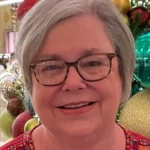


The Roadmap





















- Primary Resources by Decade1955-1960s (4)1970s-1980s (7)2000-2022 (10)
- All 21 Primary ResourcesMamie Till Mobley weeps at her son's funeral (1955)Mamie Till Mobley weeps at her son's funeral on Sept. 6, 1955, in Chicago. Mobley insisted that her son's body be displayed in an open casket forcing the nation to see the brutality directed at Blacks in the South. AP, FILE
Following the lynching murder of her fifteen-year-old son, Emmett Till,, Mamie TIll Mobley insisted on an open casket at his funeral; according to Time magazine, “When Till’s mother Mamie came to identify her son, she told the funeral director, ‘Let the people see what I’ve seen.’” The graphic images of his beaten body captured the attention of people across the United States, and the photo’s publication in Jet magazine is widely considered a galvanizing moment for the Civil Rights Era.
CitePrintShareShapiro, Emily. “Emmett Till's childhood home is named a Chicago landmark.” ABC News, 28 January 2021, https://abcnews.go.com/US/emmett-tills-childhood-home-named-chicago-landmark/story?id=75536520.
“The Photo That Changed the Civil Rights Movement.” TIME, 10 July 2016, https://time.com/4399793/emmett-till-civil-rights-photography/.
The March on Washington (1963)The March on Washington, 1963The March on Washington, 1963 By 1963 the Civil Rights Movement had grown substantially. They had support for both the black and white communities, as well as many celebrities. The purpose of this march was to gain national support for legislation in Congress. One of the most famous moments of the march was Dr. Martin Luther King Jr.'s “I Have a Dream” speech. Originally proposed in 1941 as the “March for Jobs and Freedom” by A. Philip Randolph, photographs of the March became – and remain – some of the most iconic images of the Civil Rights Movement.
CitePrintShareLeffler, W. K., photographer. (1963) Civil rights march on Washington, D.C. / WKL. Washington D.C, 1963. [Photograph] Retrieved from the Library of Congress, https://www.loc.gov/item/2003654393/.
Memphis Sanitation Workers’ Strike (1968)US National Guard troops block off Beale Street in Memphis, Tennessee, as civil rights protesters march for the third day in a row. Bettmann/Getty Images (March 29, 1968)Any number of images from the Civil Rights era would benefit a unit on freedom of speech, but this particular image does a few things: (1) it marks the occasion immediately before Martin Luther King’s assassination; (2) it provides an image of a single text used over and over, in contrast to the image above with multiple demands; and (3) it juxtaposes protesters exercising their first amendment rights with National Guard troops wielding weapons.
CitePrintShare“1968: The year in pictures.” CNN, https://www.cnn.com/interactive/2018/05/world/1968-cnnphotos/. Accessed 26 February 2023.
John Carlos and Tommie Smith raise fists in protest as they receive their Olympic medals (1968)John Carlos and Tommie Smith raise fists in protest as they receive their Olympic medals (1968)Aware of the platform provided by international television coverage of the Olympics, medal-winning U.S. track athletes John Carlos and Tommie Smith chose to raise a fist during their medal ceremony to protest racial inequality in the country they were representing, at the very moment the Star Spangled Banner was playing.
CitePrintShareLayden, Tim. “John Carlos, Tommie Smith: 1968 Olympics black power salute.” Sports Illustrated, 3 October 2018, https://www.si.com/olympics/2018/10/03/john-carlos-tommie-smith-1968-olympics-black-power-salute.
Women's Strike for Peace and Equality (1970)Women's Strike for Peace and Equality, New York City, Aug. 26, 1970. Eugene Gordon—The New York Historical Society / Getty ImagesThe 1970s Women’s Strike was organized by feminist author Betty Friedan, to commemorate the fiftieth anniversary of the 19th Amendment, which prevented women from being denied the vote “on the basis of sex.” As reported by Time, “Friedan’s original idea for Aug. 26 was a national work stoppage, in which women would cease cooking and cleaning in order to draw attention to the unequal distribution of domestic labor, an issue she discussed in her 1963 bestseller The Feminine Mystique. It isn’t clear how many women truly went on ‘strike’ that day, but the march served as a powerful symbolic gesture. Participants held signs with slogans like ‘Don’t Iron While the Strike is Hot’ and ‘Don’t Cook Dinner – Starve a Rat Today.’”
CitePrintShareCohen, Sascha. “Women's Equality Day: The History of When Women Went on Strike.” Time, 26 August 2015, https://time.com/4008060/women-strike-equality-1970/.
Poster image from “Women's Strike for Equality.” Wikipedia, https://en.wikipedia.org/wiki/Women%27s_Strike_for_Equality.
Protests against the Vietnam War (1969-70)Protest against the Vietnam War, Texas, December, 1969. Credit: Jimmy Cochran.Antiwar march October 31, 1970, Seattle, two months after the death of Reuben Salazar in the Los Angeles Chicano Moratorium protestVietnam War Protests The Vietnam protest movement represented a growing anti-war movement in the United States in the late 1960s to early 1970s. Protestors spanned the racial spectrum and employed varying methods to end the war in Vietnam, started by the United States.
In many cases, anti-war protests combined with efforts to turn attention to domestic issues. As described in the Mapping American Social Movements Project of the University of Washington, “Chicanos in Los Angeles formed alliances with other oppressed people who identified with the Third World Left and were committed to toppling U.S. imperialism and fighting racism…. The Chicano Moratorium antiwar protests of 1970 and 1971…reflected the vibrant collaboration between African Americans, Japanese Americans, American Indians, and white antiwar activists that had developed in Southern California.”
CitePrintShareCochran, Jimmy W. “[Line of Protesters Against Vietnam War] - The Portal to Texas History.” The Portal to Texas History, https://texashistory.unt.edu/ark:/67531/metapth1276191/.
Estrada, Josue. Chicano Movement Geography - Mapping American Social Movements, https://depts.washington.edu/moves/Chicano_geography.shtml.
Disability Rights Movement Protest for the Rehabilitation Act (1973)Disability Rights Movement Protest for the Rehabilitation Act 1973, photographer Tom Olin Greyhound Bus Depot in Los Angeles, Diane Coleman, Steve Remington and Rick Wilson.The Civil Rights Movement for Black equality inspired many other movements, including a national push for disability rights. The Rehabilitation Act of 1973 prohibited discrimination on the basis of disability and protected equal access for people with disabilities in areas including public services, employment, and education.
CitePrintShare“History and Timeline | Department on Disability.” Department on Disability, https://disability.lacity.org/resources/celebrate-ada-30th-anniversary/history-and-timeline.
Protests for and against the Equal Rights Amendment (1973)Protests led by Phyllis Schlafly, center, opposed the passage of the Equal Rights Amendment, 1973.Women supporting the ERA carry a banner down Pennsylvania Avenue in Washington DC on August 26, 1977The Equal Rights Amendment (ERA) states: "Equality of rights under the law shall not be denied or abridged by the United States or by any state on account of sex." First proposed as an Amendment to the Constitution in 1923, Congress finally passed the ERA in 1972. The senate vote was overwhelming: 84 to 8. The Amendment then went to state legislatures for approval, requiring 38 for ratification. 22 states ratified in that first year, and 8 more in 1973. But then a grassroots opposition movement made significant inroads. 35 states eventually approved it by 1977, but the passage of the Amendment then stalled and the deadline expired in 1982.
In these photos, women who fought both for and against the Amendment’s passage are pictured protesting. In the top photograph, American attorney and conservative activist Phyllis Schlafly, founder of STOP-ERA, leads a protest against the Amendment. In the bottom photograph, women dressed in white – evoking suffragists of the past – protest in favor of the Amendment in Washington, DC on August 26, 1977 – the same date of the Women’s Strike seven years earlier (also included in this Spotlight Kit).
CitePrintShare“ERA wouldn't be good for women | Tuesday's letters.” Tampa Bay Times, 9 September 2019, https://www.tampabay.com/opinion/letters/2019/09/09/era-wouldnt-be-good-for-women-tuesdays-letters/.
Prasad, Ritu. “Women's Equal Rights Amendment sees first hearing in 36 years.” BBC, 30 April 2019, https://www.bbc.com/news/world-us-canada-44319712.
Boycott Lettuce & Grapes Poster (1978)Boycott Lettuce & Grapes (1978)Dolores Huerta Lettuce Boycott Poster: Dolores Huerta and Cesar Chavez fought together for the rights and protections of the workers who picked fruits and vegetables in the fields and orchards, organizing a workers’ union and boycotts to gain attention and create economic pressure for the cause. Huerta led a successful lettuce and grape boycott, first in California and later on a national scale, that paved the way for migrant labor protection laws.
CitePrintShare(1978) Boycott Lettuce & Grapes. United States, 1978. [Chicago: Women's Graphics Collective] [Photograph] Retrieved from the Library of Congress, https://www.loc.gov/item/93505187/.
Lily Chin Holds a Photograph of Her Son Vincent Chin (1983)As explained by the New York Times, “Vincent Chin, a Chinese American man who lived near Detroit, was beaten to death with a baseball bat after being pursued by two white autoworkers in 1982…Mr. Chin was killed at a time when the rise of Japanese carmakers and the collapse of Detroit’s auto industry had contributed to a rise in anti-Asian racism.” The two men who murdered Chin accepted plea deals, serving only probation and paying about $3000 each in fines. In this image, Chin’s mother, Lily Chin, holds a photograph of her son.
CitePrintShareSmith, Mitch. “Decades After Infamous Beating Death, Recent Attacks Haunt Asian Americans.” The New York Times, 17 June 2022, https://www.nytimes.com/2022/06/16/us/vincent-chin-anti-asian-attack-detroit.html.
Keith Haring, Ignorance = Fear / Silence = Death (1989)Keith Haring, Ignorance = Fear / Silence = Death (1989)In the earliest years of the emergency of AIDS as a public health crisis, the American Government’s response was limited in terms of both resources dedicated to fighting the disease and public discussion of the disease, its victims, and public health strategies for prevention. Activists coined the phrase “silence=death” in 1987 to help raise awareness and spur the government to devote greater resources and attention.
CitePrintShareSherwin, Skye. “Keith Haring’s Ignorance = Fear: political activism | Art and design.” The Guardian, 23 August 2019, https://www.theguardian.com/artanddesign/2019/aug/23/keith-haring-ignorance-equals-fear.
Tea Party Protests (2009)Tea Party protest at the Connecticut State Capitol in Hartford, Connecticut. April 15, 2009. Organizers reported that the police estimate of attendance was 5000 people.Protesters in Washington D.C. during a rally, September 2009.After the financial crisis of 2008, a CNBC commentator, Rick Santelli, argued against President Obama’s mortgage relief policies and evoked the Revolutionary War-era Tea Party in calling for a protest against them. The “Tea Party Movement” took hold among some conservative and libertarian circles, leading to rallies and political campaigns arguing against federal taxation and in favor of fiscal conservatism and a free market economy. Several rallies were held specifically on April 15th – Tax Day – 2009.
CitePrintShareRoss, Sage. “File:Tea Party Protest, Hartford, Connecticut, 15 April 2009 - 041.jpg.” Wikimedia Commons, https://commons.wikimedia.org/wiki/File:Tea_Party_Protest,_Hartford,_Connecticut,_15_April_2009_-_041.jpg.
Zeleny, Jeff. “In Washington, Thousands Stage Protest of Big Government.” The New York Times, 12 September 2009, https://www.nytimes.com/2009/09/13/us/politics/13protestweb.html.
Occupy Wall Street / Park Avenue Millionaires Protest (2011)Occupy Wall Street Protests Starting in Washington, then moving to New York, protesters camped out in Zucotti park for an extended period of time in 2011 while voicing their concern about inequality in America. The protesters had a unique style of protesting employing methods such as “the people’s mic,” organized childcare, a library, and were predominantly “leaderless.” They had regularly scheduled marches throughout New York City for a variety of issues. Some critique focused on how participants were mostly white, accused of antisemitism, and had an amorphous set of demands.
CitePrintShareWires, N. P. R. S. and. (2011, October 15). Occupy Wall Street inspires worldwide protests. NPR. Retrieved February 27, 2022, from https://www.npr.org/2011/10/15/141382468/occupy-wall-street-inspires-worldwide-protests
Kastenbaum, Steve. “Occupy Wall Street: An experiment in consensus-building.” CNN, 18 October 2011, https://www.cnn.com/2011/10/18/us/occupy-wall-street-consensus-building/index.html.
Rally in Support of DACA (2017)In September of 2017, Attorney General Jeff Sessions’ announcement that the Trump Administration planned to end DACA, or the Deferred Action for Childhood Arrivals program, was met with protests around the country. As reported by National Public Radio, “hundreds of demonstrators gathered outside the White House. They shouted ‘We are America’ and ‘We want education. Down with deportation.’ The marchers then proceeded to the Department of Justice…and to the Trump International Hotel on Pennsylvania Avenue, where they staged a sit-in.”
CitePrintShareNeuman, Scott. “Protesters In D.C., Denver, LA, Elsewhere Demonstrate Against Rescinding DACA.” NPR, 5 September 2017, https://www.npr.org/sections/thetwo-way/2017/09/05/548727220/protests-in-d-c-denver-la-elsewhere-protest-rescinding-daca.
Dakota Access Pipeline Protest (2017)Dakota Access Pipeline Protests (2017)The planned construction of The Dakota Access Pipeline and resulting protests is a recent example of Native Americans and U.S. industry clashing. One side feared for the quality of their water and lands being abused. Proponents of the pipeline included union members and business, who viewed the pipeline’s development as essential to the growth of the economy.
CitePrintShareHersher, R. (2017, February 22). Key moments in the Dakota Access Pipeline Fight. NPR. Retrieved February 27, 2022, from https://www.npr.org/sections/thetwo-way/2017/02/22/514988040/key-moments-in-the-dakota-access-pipeline-fight
Iowa Public Radio | By Amy Mayer. (2020, August 28). Public Voices Support and oppose Bakken pipeline across Iowa. Iowa Public Radio. Retrieved February 26, 2022, from https://www.iowapublicradio.org/environment/2015-11-12/public-voices-support-and-oppose-bakken-pipeline-across-iowa#stream/0
How do you sign ‘Black Lives Matter’ in ASL? (2020)How do you sign ‘Black Lives Matter’ in ASL? (2020)As reported by the Los Angeles Times, the intersection of disability rights and racial equity can be complicated for deaf members of the Black Lives Matter Movement: “The phrase begins with four fingers cut across the brow, followed by two thumbs drawn up like breath from navel to chest, ending with a fierce tug with two hands down from the chin into fists toward the heart.
Black. Life. Cherish. This is how Harold Foxx and many other black deaf Angelenos sign ‘Black Lives Matter,’ though it is by no means a universal translation. .. It is a reminder of an ongoing struggle for equity, representation and authenticity in ASL, a language deeply scarred by racism and exclusion.”
CitePrintShareSharp, Sonja. “Column One: How do you sign 'Black Lives Matter' in ASL? For black deaf Angelenos, it's complicated.” Los Angeles Times, 8 June 2020, https://www.latimes.com/california/story/2020-06-08/how-do-you-sign-black-lives-matter-in-asl-for-black-deaf-angelenos-its-complicated.
Black Lives Matter Plaza (2020)Black Lives Matter Plaza (2020)On June 5, 2020, CNN reported: “Washington, DC is painting a message in giant, yellow letters down a busy DC street ahead of a planned protest this weekend: BLACK LIVES MATTER.
The massive banner-like project spans two blocks of 16th Street, a central axis that leads southward straight to the White House. Each of the 16 bold yellow letters spans the width of the two-lane street, creating an unmistakable visual easily spotted by aerial cameras and virtually anyone within a few blocks. The painters were contacted by Mayor Muriel Bowser and began work early Friday morning, the mayor’s office told CNN. Bowser has officially deemed the section of 16th Street bearing the mural ‘Black Lives Matter Plaza,’ complete with a new street sign.”
CitePrintShareSource of text: Willingham, AJ. “Washington, DC paints a giant 'Black Lives Matter' message on the road to the White House.” CNN, 5 June 2020, https://www.cnn.com/2020/06/05/us/black-lives-matter-dc-street-white-house-trnd/index.html.
Source of photo: “DC paints huge Black Lives Matter mural near White House.” WCTV, 5 June 2020, https://www.kktv.com/content/news/DC-paints-huge-Black-Lives-Matter-mural-near-White-House-571049311.html.
Protests against Mask Mandates (2021)People demonstrate against mask mandates at a Cobb county, Georgia, school board meeting last week. Photograph: Robin Rayne/Zuma Press Wire/Rex/Shutterstock (2021)Families protest any potential mask mandates before the Hillsborough County School Board meeting last month in Tampa, Fla.During the height of the Coronavirus pandemic, all levels of government – federal, state, and local – were required to respond to information emerging daily about what policies and practices would be safest for the public. In many places, including public spaces and schools, people were required to wear masks. Some people pushed back against these requirements, arguing that mandates were a violation of their individual rights.
CitePrintShareWong, Julia Carrie. “Masks off: how US school boards became 'perfect battlegrounds' for vicious culture wars.” The Guardian, 24 August 2021, https://www.theguardian.com/us-news/2021/aug/24/mask-mandates-covid-school-boards.
Shivaram, Deepa. “'Mask Wars' Are Erupting In Schools As Students Return : Back To School: Live Updates.” NPR, 20 August 2021, https://www.npr.org/sections/back-to-school-live-updates/2021/08/20/1028841279/mask-mandates-school-protests-teachers.
Rally against CRT in Schools (2021)Capitol rally to “stop critical race theory in Pennsylvania schools.” Harrisburg, Pennsylvania, July 14, 2021. Dan GleiterWhile “Critical Race Theory” (CRT) is taught primarily in law schools, protests began in 2021 against the teaching of CRT at local school board meetings in many places across the country. Often, participants in these protests raised a range of concerns about how topics including, but not limited to, race are covered in school curricula. These protests became part of a larger “parents’ rights” movement, arguing that parents should have a greater say in determining what their children learn in school.
CitePrintShareDeJesus, Ivey. “Critical race theory: What it is, what it isn't, and what it means for education in Pennsylvania.” Penn Live, 15 July 2021, https://www.pennlive.com/news/2021/07/critical-race-theory-the-nationwide-debate-is-emerging-in-pennsylvania.html.
“I Still Believe in Our City” Public Art (2021)The “I Still Believe In Our City” public art series was created in partnership with the New York City Commission on Human Rights. Courtesy Amanda Phingbodhipakkiya"I Am Not Your Scapegoat" poster.Courtesy Amanda PhingbodhipakkiyaAs reported by NBC News, “Last winter, as violent attacks against Asian elders began to spike, vividly painted portraits of Asian, Pacific Islander and Black people — flanked by vibrant florals and messages like ‘I am not your scapegoat’ — appeared on the walls of New York City's busiest subway and bus stops. Amanda Phingbodhipakkiya’s I Still Believe In Our City public art series, created in partnership with the New York City Commission on Human Rights, reminded millions of commuters of the humanity, diversity and beauty of Asian Americans at a time when many saw them as mere carriers of a deadly virus.”
CitePrintShareWang, Claire. “'I am not your scapegoat': See the art created by Asian Americans in a year of anti-Asian hate.” NBC News, 27 December 2021, https://www.nbcnews.com/news/asian-america/-not-scapegoat-see-art-created-asian-americans-year-anti-asian-hate-rcna9058.
March against Florida House Bill 1557 (2022)Demonstrators headed toward a pier in St. Petersburg during a rally against the bill.As reported by the New York Times in March of 2022, Gov. Ron DeSantis of Florida signed House Bill 1557, “which supporters call the ‘Parental Rights in Education’ bill, but that opponents refer to as the ‘Don’t Say Gay’ bill.” Among the provisions of the bill, “Instruction on gender and sexuality would be constrained in all grades; schools would be required to notify parents when children receive mental, emotional or physical health services, unless educators believe there is a risk of ‘abuse, abandonment, or neglect’; and parents would have the right to opt their children out of counseling and health services.”
CitePrintShareGoldstein, Dana. “What’s in House Bill 1557, Which Opponents Call ‘Don’t Say Gay.’” The New York Times, 18 March 2022, https://www.nytimes.com/2022/03/18/us/dont-say-gay-bill-florida.html.
Education for American Democracy


This deliberative discussion guide engages students in a conversation about the difficult choices citizens had to weigh during the Civil Rights movement. By examining multiple approaches from the movement, students will better understand the diversity of views within the Civil Rights Movement and understand the challenges of civic engagement.

The Roadmap


David Mathews Center for Civic Life


Students will examine the significance of constitutional principles during the colonial period, investigating how they emerged and the influence they had on colonial society.

The Roadmap


Bill of Rights Institute

Throughout United States history, women have consistently fought for better working conditions, fair labor laws, fair wages, and fair practices for themselves and for all workers. Their battle for safety and equality started before women in most states had the right to vote, before they served in elected office, and before any women led in the industries that hired them. It is these women-led labor movements and labor reforms that are the topics of this Spotlight Kit, from the late 1800s to the modern era, focusing on this specific time period as a time of major change in labor reforms and labor movements. Despite the changes, these issues remain salient. Women in the United States still have not achieved equal pay for equal work, or equal opportunity in hiring and promotion, and the disparities are even more significant for women of color.
The resources in this spotlight kit are intended for classroom use, and are shared here under a CC-BY-SA license. Teachers, please review the copyright and fair use guidelines.



The Roadmap














- Primary Resources by Era/Date1900 - 1957 (6)1959 (1)1963 (2)1966 (1)1982 (1)1997 (1)
- All 12 Primary ResourcesJane Addams, Address to Deering Company Strikers (1903)
In the late 19th and early 20th centuries, Chicago-based reformer Jane Addams worked to bring fair labor conditions to those who were struggling. Through social and economic reform movements, Addams sought to help those in need of fair working conditions. This article contains Addams’s comments and arguments on the labor issue, especially as it relates to women. Notice the headline that read “Hours Too Long For Girls” and the arguments that follow.
CitePrintShareAddams, Jane, “Address to Deering Company Strikers, April 29, 1903 (excerpt),” Jane Addams Digital Edition. From "Strike Closes Deering Plant," The Inter Ocean (Chicago), Apr. 30, 1903, p. 3. Accessed March 9, 2022 at https://digital.janeaddams.ramapo.edu/items/show/6703
Note: ramapo.edu in the web address refers to Ramapo College of New Jersey’s digital holdings.
The Battling Workingwoman (1909)This is a 1909 letter to the editor of the New York Times. This letter has a working female asking why she cannot have the ballot, as she wants to vote to give herself and other women better working conditions.
CitePrintShareThe Battling Workingwoman. New York Times, New York City, New York. Manuscript/Mixed Material. Retrieved from the Library of Congress, Access March 7, 2022, from www.loc.gov/item/rbcmiller002025/
What is to be Done? in Life and Labor (1911)In 1909, the workers in the Triangle Shirtwaist Factory in Manhattan, primarily Jewish and Italian immigrant women, went on strike to protest dangerous working conditions and unreasonable hours and expectations. The strike was settled in 1910, but in 1911, a fire in the factory took the lives of 146 workers. The fire was particularly fatal because exits had been blocked to prevent workers from taking breaks without permission.
What is to be Done?
Martha Bensley Bruere in Life and Labor (1911)
Well, the fire is over, the girls are dead, and as I write, the procession in honor of the unidentified dead is moving by under my windows. Now what is going to be done about it?Harris and Blanck, the Triangle Company, have offered to pay one week's wages to the families of the dead girls--as though it were summer and they are giving them a vacation!
Three days after the fire they inserted in the trade papers this notice: “NOTICE, THE TRIANGLE WAIST CO. beg to notify their customers that they are in good working order. HEADQUARTERS now at 9-11 University Place.”
The day after they were installed in their new quarters, the Building Department of New York City discovered that 9-11 University Place was not even fireproof, and that the firm had already blocked the exit to the one fire escape by two rows of sewing machines.
And still as I write the mourning procession moves past in the rain. For two hours they have been going steadily by and the end is not yet in sight. There have been no carriages, no imposing marshals on horseback; just thousands and thousands of working men and women carrying the banners of their trades through the long three-mile tramp in the rain. Never have I seen a military pageant or triumphant ovation so impressive; for it is not because 146 workers were killed in the Triangle shop-not altogether. It is because every year there are 50,000 working men and women killed in the United States-136 a day; almost as many as happened to be killed together on the 25th of March; and because slowly, very slowly, it is dawning on these thousands on thousands that such things do not have to be!
CitePrintShareBruere, Martha Bensley. “Cornell University - ILR School.” Cornell University - ILR School - The Triangle Factory Fire, 1911, https://trianglefire.ilr.cornell.edu/primary/testimonials/ootss_MarthaBensleyBruere.html.
Labor Outrages Due To Old Laws (1912)This newspaper article outlines Addams’s efforts to get rid of outdated and unfair labor practices. The argument, as seen in the headline, is that unfair labor practices need to be changed because they are outdated and unfair.
LABOR OUTRAGES DUE TO OLD LAWS (1912)
Such Is the Opinion of Jane Addams, Famous Sociological StudentCHICAGO, Jan. 2. -- Application of old laws to new conditions has a tendency to develop men of the McNamara type in the opinion of Miss Jane Addams, who returned to the city after presenting a petition to President Taft asking for the appointment of a commission to study the relations between employers and employees.
"It seems to me that all our laws dealing with labor unions are in need of [revision]," said Miss Addams. "The trusts are being prosecuted for violating laws, which they assert are not applicable to modern industrial conditions. So with the labor unions. Like the trusts, the labor unions are of recent origin, and laws enacted at a time when conditions were entirely different are being applied to them. The result is a growing distrust in the judiciary among large groups of labor, as they see employers appeal to the courts to thwart every movement made to improve the status of the worker. There is no denying the fact that the courts have shown a willingness to serve the interests of the employers and have placed property rights higher than human rights. The courts are following traditions and precedents that do not fit into the modern scheme of things.
…I have, of course, no idea what President Taft will do about a commission, but he received us very cordially and appeared to be much interested in the question. I am hopeful that such a commission will be created and I feel confident that it would accomplish good results."
"Solving the Colored Woman's Problem" (1933)Mary Church Terrell was a college-educated African American activist who fought for racial equality and women’s suffrage. In this speech, Terrell – the daughter of formerly enslaved parents – details how African American working women, whom she calls “colored,” using the term preferred at the time, have opened everything from nursing facilities to kindergartens with success, and that these workers should be given the same rights and respect as everyone else.
Mary Church Terrell, "Solving the Colored Woman's Problem" (1933)
Address Delivered by Mary Church Terrell at the World Fellowship of Faiths, Chicago, Ill., Wed. Aug. 30, 1933.Solving the Colored Woman's Problem.
Colored Women in the United States have more, larger and harder problems to solve than do those of any other racial group. One had only to know the conditions under which they lived for 250 years during slavery and those which obtain today to understand why this is so.
When a small but noble band of women began an agitation in Seneca Falls, New York in 1848, by which colleges were opened to women and numerous reforms inaugurated for the improvement of their condition along all lines, their sisters who groaned in bondage had little reason to hope that these blessings would ever brighten their crushed and blighted lives.
For in those days of oppression and despair colored women were not only refused admission to schools, as a rule, but the law of the States in which the majority lived made it a crime to teach them to read. Not only could they possess no property, but they did not even own themselves. So pernicious were the customs, so gloomy were their prospects, so fatal the laws only seventy years ago.
But, from the day their fetters were broken and their minds were released from the darkness of ignorance in which they had been held nearly three hundred years; from the day they could stand in the dignity of womanhood, no longer bond but free till this minute, colored women have forged steadily ahead in the acquisition of knowledge and in the cultivation of these graces of character which make for good. To use a thought of the illustrious Frederick Douglass, if judged by the depths from which they have come, rather than by the heights to which their more favored sisters have attained, colored women need not hang their heads in shame. The work they have accomplished and the progress they have made will bear favorable comparison, at least with that of more fortunate women from whom the opportunity of acquiring knowledge and the means of self culture have never been entirely held.
CitePrintShareTerrell, Mary Church. Mary Church Terrell Papers: Speeches and Writings, -1953; 1933, Aug. 30 , "Solving the Colored Woman's Problem". 1933. Manuscript/Mixed Material. Accessed March 7, 2022 from the Library of Congress at www.loc.gov/item/mss425490458/
“Comparisons” (1935)The ILGWU is the International Ladies Garments Workers Union, which organized women who worked in the clothing trades. This video contains primary source footage of women’s working conditions in the 20th century.
CitePrintShareKheel ILGWU Archives Film/Video. "Comparisons". Retrieved March 7, 2022, from https://ilgwu.ilr.cornell.edu/archives/filmVideo/
Note: The Kheel ILGWU Archives has several films and videos over labor topics. For this video, play the first one on the primary source playlist and is labeled as “Comparisons”.
“Mother is on Strike” (1959)Primary source footage showing women in Texas involved in a strike and labor movement. This labor movement lasted from 1959-1963 and involved Tex-Son workers in San Antonio. According to the Texas State Historical Association Handbook of Texas, all of the Tex-Son workers were female, and 90% were Mexican-Americans. This primary source brings further study of women working towards better labor conditions.
CitePrintShareKheel ILGWU Archives Film/Video. "Mother is On Strike". Retrieved March 7, 2022, from https://ilgwu.ilr.cornell.edu/archives/filmVideo/
Note: The Kheel ILGWU Archives has several films and videos over labor topics. For this video, play the first one on the primary source playlist and is labeled as “Mother is On Strike”.
Two Women on Strike for Tex-Son Local 180 (1963)This image of Tex-Son workers on strike shows what the women were striking for; notice the signs that ask for a “decent contract”.
CitePrintShareUniversity of Texas Arlington Digital Library. “Two Women on Strike for Tex-Son Local 180, San Antonio, Texas, International Ladies Garment Workers Union (I.L.G.W.U.)”. Retrieved March 7, 2022, from https://library.uta.edu/digitalgallery/img/10007779
The Equal Pay Act of 1963 Declaration of Purpose (1963)According to the U.S. Department of Labor, “The Equal Pay Act of 1963, amending the Fair Labor Standards Act, protects against wage discrimination based on sex. The Equal Pay Act (EPA) protects individuals of all sexes.
All forms of compensation are covered…If there is an inequality in wages between people of different sexes who perform substantially equal jobs, employers must raise wages to equalize pay but may not reduce the wages of other individuals.” Prior to the passage of this law and its signing by President Kennedy, it was legal for employers to pay different wages to men and women in the same job. Despite this law, a gender pay gap still exists.
THE EQUAL PAY ACT OF 1963 DECLARATION OF PURPOSE:
- (a) The Congress hereby finds that the existence in industries engaged in commerce or in the production of goods for commerce of wage differentials based on sex-
- (1) depresses wages and living standards for employees necessary for their health and efficiency;
- (2) prevents the maximum utilization of the available labor resources;
- (3) tends to cause labor disputes, thereby burdening, affecting, and obstructing commerce;
- (4) burdens commerce and the free flow of goods in commerce; and
- (5) constitutes an unfair method of competition.
- (b) It is hereby declared to be the policy of this Act, through exercise by Congress of its power to regulate commerce among the several States and with foreign nations, to correct the conditions above referred to in such industries.
CitePrintShare“The Equal Pay Act of 1963 | U.S.” Equal Employment Opportunity Commission, 1963, https://www.eeoc.gov/statutes/equal-pay-act-1963.
NFWA March and Rally (1966)Dolores Huerta’s work as a farm labor organizer was critical to workers’ rights. According to the National Women’s History Museum, “In 1955 Huerta began her career as an activist when she co-founded the Stockton chapter of the Community Service Organization (CSO), which led voter registration drives and fought for economic improvements for Hispanics… Through a CSO associate, Huerta met activist César Chávez, with whom she shared an interest in organizing farm workers. In 1962, Huerta and Chávez founded the National Farm Workers Association (NFWA), the predecessor of the United Farm Workers’ Union (UFW), which formed three year later. Huerta served as UFW vice president until 1999.”
Dolores Huerta, NFWA march and rally (1966)“..Today our farm workers have come to Sacramento. To the governor and the legislature of California we say you cannot close your eyes and your ears to us any longer. You cannot pretend that we do not exist. You cannot plead ignorance to our problems because we are here and we embody our needs for you. And we are not alone. We are accompanied by many friends. The religious leaders of the state, spear-headed by the migrant ministry, the student groups, the civil rights groups that make up the movement that has been successful in securing civil rights for Negroes in this country, right-thinking citizens and our staunchest ally, organized labor, are all in the revolution of the farm worker.
...The day has ended when the farm worker will let himself be used as a pawn by employers, government, and others who would exploit them for their own ends. La huelga and la causa is our cry, and everyone must listen. Viva la huelga! Viva Cesar Chavez!”
CitePrintShare“NFWA march and rally – April 10, 1966 | Archives of Women's Political Communication.” Archives of Women's Political Communication, 9 March 2017, https://awpc.cattcenter.iastate.edu/2017/03/09/nfwa-march-and-rally-april-10-1966/.
Michals, Debra. “Dolores Huerta Biography.” National Women's History Museum, https://www.womenshistory.org/education-resources/biographies/dolores-huerta.
“ILGWU Local 23-25 members at the Chinatown Rally” (1982)To give a later 20th century (1982) example of women continuing to be involved in the labor movement; specifically, in New York City’s Chinatown with females who worked in garment industries. This example also involved unions and can be used to bring women and labor unions into the discussion.
CitePrintShareThe Kheel Center ILGWU Collection. “Highlights”. The Chinatown Struggle of 1982. Accessed March 7, 2022, from https://ilgwu.ilr.cornell.edu/announcements/5.html
The Kheel Center ILGWU Collection. “ILGWU Local 23-25 members at the Chinatown Rally. Accessed March 7, 2022, from http://ilgwu.ilr.cornell.edu/photos/84.html.
This is labeled on the website as “ILGWU Local 23-25 members and supporters listening to speakers during the Chinatown Rally to support the new union contract in Columbus Park, New York. Rallies took place on June 24, 1982 and July 15, 1982. Kheel Center call number: 6000/024 P, box 10, folder 32”
Las Vegas's Service Industry Workers Hit The Jackpot With Union Contract (1997)According to the Online Nevada Encyclopedia from the Nevada Humanities Project, Hattie Canty is an African American labor unionist who worked to bring better pay and working conditions to women in the hotel and casino industry in the 1990s. This article provides primary source information directly from Canty’s time working with a union to secure better working conditions for women.
LAS VEGAS'S SERVICE INDUSTRY WORKERS HIT THE JACKPOT WITH UNION CONTRACTS By Lou Cannon The Washington PostNovember 30, 1997
A decisive union victory in the nation's longest strike and the signing of a visionary contract at the world's largest hotel-casino have boosted the fortunes of service workers on the lower rungs of the work force in this gambling mecca.
"Las Vegas, whatever else anybody says about it, has become a city where maids can own their homes and raise their families," said Hattie Canty, president of Culinary Workers Union Local 226, a former maid and widowed mother of 10 who has done just that. Her union has claimed victory in a bitter labor dispute at the Frontier Hotel-Casino, where workers have been on strike since Sept. 21, 1991.
….Today, Local 226 has a squeaky-clean reputation and an image of diversity reflective of the industry. It maintains two training centers for workers, originally opposed and now financially supported by the hotels. More than half of the union's members are women. Slightly more than a third of members are Latino, 30 percent are white, 12 percent black, 11 percent Asian and the others of mixed race.
Canty, an African American who raised her large family after her husband died of cancer 24 years ago, says the union has demonstrated that service workers can live in dignity.
CitePrintShareCannon, Lou. “LAS VEGAS'S SERVICE INDUSTRY WORKERS HIT THE JACKPOT WITH UNION CONTRACTS.” The Washington Post, 30 November 1997, https://www.washingtonpost.com/archive/politics/1997/11/30/las-vegass-service-industry-workers-hit-the-jackpot-with-union-contracts/00d63d0d-acf2-42d6-bc9e-41e415f4905b/.
- (a) The Congress hereby finds that the existence in industries engaged in commerce or in the production of goods for commerce of wage differentials based on sex-
Education for American Democracy


With and without the vote and throughout American history, young people have been a force to be reckoned with as they take action and stand in support of the issues that matter most. This video series shares 10 stories of young people shaping and changing elections throughout American history.

The Roadmap



Smithsonian National Museum of American History


Download the Roadmap and Report

Download the Educating for American Democracy Roadmap and Report Documents
Get the Roadmap and Report to unlock the work of over 300 leading scholars, educators, practitioners, and others who spent thousands of hours preparing this robust framework and guiding principles. The time is now to prioritize history and civics.
Your contact information will not be shared, and only used to send additional updates and materials from Educating for American Democracy, from which you can unsubscribe.
We the People
This theme explores the idea of “the people” as a political concept–not just a group of people who share a landscape but a group of people who share political ideals and institutions.
Institutional & Social Transformation
This theme explores how social arrangements and conflicts have combined with political institutions to shape American life from the earliest colonial period to the present, investigates which moments of change have most defined the country, and builds understanding of how American political institutions and society changes.
Contemporary Debates & Possibilities
This theme explores the contemporary terrain of civic participation and civic agency, investigating how historical narratives shape current political arguments, how values and information shape policy arguments, and how the American people continues to renew or remake itself in pursuit of fulfillment of the promise of constitutional democracy.
Civic Participation
This theme explores the relationship between self-government and civic participation, drawing on the discipline of history to explore how citizens’ active engagement has mattered for American society and on the discipline of civics to explore the principles, values, habits, and skills that support productive engagement in a healthy, resilient constitutional democracy. This theme focuses attention on the overarching goal of engaging young people as civic participants and preparing them to assume that role successfully.
Our Changing landscapes
This theme begins from the recognition that American civic experience is tied to a particular place, and explores the history of how the United States has come to develop the physical and geographical shape it has, the complex experiences of harm and benefit which that history has delivered to different portions of the American population, and the civics questions of how political communities form in the first place, become connected to specific places, and develop membership rules. The theme also takes up the question of our contemporary responsibility to the natural world.
A New Government & Constitution
This theme explores the institutional history of the United States as well as the theoretical underpinnings of constitutional design.
A People in the World
This theme explores the place of the U.S. and the American people in a global context, investigating key historical events in international affairs,and building understanding of the principles, values, and laws at stake in debates about America’s role in the world.
The Seven Themes
The Seven Themes provide the organizational framework for the Roadmap. They map out the knowledge, skills, and dispositions that students should be able to explore in order to be engaged in informed, authentic, and healthy civic participation. Importantly, they are neither standards nor curriculum, but rather a starting point for the design of standards, curricula, resources, and lessons.
Driving questions provide a glimpse into the types of inquiries that teachers can write and develop in support of in-depth civic learning. Think of them as a starting point in your curricular design.
Learn more about inquiry-based learning in the Pedagogy Companion.
Sample guiding questions are designed to foster classroom discussion, and can be starting points for one or multiple lessons. It is important to note that the sample guiding questions provided in the Roadmap are NOT an exhaustive list of questions. There are many other great topics and questions that can be explored.
Learn more about inquiry-based learning in the Pedagogy Companion.
The Seven Themes
The Seven Themes provide the organizational framework for the Roadmap. They map out the knowledge, skills, and dispositions that students should be able to explore in order to be engaged in informed, authentic, and healthy civic participation. Importantly, they are neither standards nor curriculum, but rather a starting point for the design of standards, curricula, resources, and lessons.
The Five Design Challenges
America’s constitutional politics are rife with tensions and complexities. Our Design Challenges, which are arranged alongside our Themes, identify and clarify the most significant tensions that writers of standards, curricula, texts, lessons, and assessments will grapple with. In proactively recognizing and acknowledging these challenges, educators will help students better understand the complicated issues that arise in American history and civics.
Motivating Agency, Sustaining the Republic
- How can we help students understand the full context for their roles as civic participants without creating paralysis or a sense of the insignificance of their own agency in relation to the magnitude of our society, the globe, and shared challenges?
- How can we help students become engaged citizens who also sustain civil disagreement, civic friendship, and thus American constitutional democracy?
- How can we help students pursue civic action that is authentic, responsible, and informed?
America’s Plural Yet Shared Story
- How can we integrate the perspectives of Americans from all different backgrounds when narrating a history of the U.S. and explicating the content of the philosophical foundations of American constitutional democracy?
- How can we do so consistently across all historical periods and conceptual content?
- How can this more plural and more complete story of our history and foundations also be a common story, the shared inheritance of all Americans?
Simultaneously Celebrating & Critiquing Compromise
- How do we simultaneously teach the value and the danger of compromise for a free, diverse, and self-governing people?
- How do we help students make sense of the paradox that Americans continuously disagree about the ideal shape of self-government but also agree to preserve shared institutions?
Civic Honesty, Reflective Patriotism
- How can we offer an account of U.S. constitutional democracy that is simultaneously honest about the wrongs of the past without falling into cynicism, and appreciative of the founding of the United States without tipping into adulation?
Balancing the Concrete & the Abstract
- How can we support instructors in helping students move between concrete, narrative, and chronological learning and thematic and abstract or conceptual learning?
Each theme is supported by key concepts that map out the knowledge, skills, and dispositions students should be able to explore in order to be engaged in informed, authentic, and healthy civic participation. They are vertically spiraled and developed to apply to K—5 and 6—12. Importantly, they are not standards, but rather offer a vision for the integration of history and civics throughout grades K—12.
Helping Students Participate
- How can I learn to understand my role as a citizen even if I’m not old enough to take part in government? How can I get excited to solve challenges that seem too big to fix?
- How can I learn how to work together with people whose opinions are different from my own?
- How can I be inspired to want to take civic actions on my own?
America’s Shared Story
- How can I learn about the role of my culture and other cultures in American history?
- How can I see that America’s story is shared by all?
Thinking About Compromise
- How can teachers teach the good and bad sides of compromise?
- How can I make sense of Americans who believe in one government but disagree about what it should do?
Honest Patriotism
- How can I learn an honest story about America that admits failure and celebrates praise?
Balancing Time & Theme
- How can teachers help me connect historical events over time and themes?
The Six Pedagogical Principles
EAD teacher draws on six pedagogical principles that are connected sequentially.
Six Core Pedagogical Principles are part of our Pedagogy Companion. The Pedagogical Principles are designed to focus educators’ effort on techniques that best support the learning and development of student agency required of history and civic education.
EAD teachers commit to learn about and teach full and multifaceted historical and civic narratives. They appreciate student diversity and assume all students’ capacity for learning complex and rigorous content. EAD teachers focus on inclusion and equity in both content and approach as they spiral instruction across grade bands, increasing complexity and depth about relevant history and contemporary issues.
Growth Mindset and Capacity Building
EAD teachers have a growth mindset for themselves and their students, meaning that they engage in continuous self-reflection and cultivate self-knowledge. They learn and adopt content as well as practices that help all learners of diverse backgrounds reach excellence. EAD teachers need continuous and rigorous professional development (PD) and access to professional learning communities (PLCs) that offer peer support and mentoring opportunities, especially about content, pedagogical approaches, and instruction-embedded assessments.
Building an EAD-Ready Classroom and School
EAD teachers cultivate and sustain a learning environment by partnering with administrators, students, and families to conduct deep inquiry about the multifaceted stories of American constitutional democracy. They set expectations that all students know they belong and contribute to the classroom community. Students establish ownership and responsibility for their learning through mutual respect and an inclusive culture that enables students to engage courageously in rigorous discussion.
Inquiry as the Primary Mode for Learning
EAD teachers not only use the EAD Roadmap inquiry prompts as entry points to teaching full and complex content, but also cultivate students’ capacity to develop their own deep and critical inquiries about American history, civic life, and their identities and communities. They embrace these rigorous inquiries as a way to advance students’ historical and civic knowledge, and to connect that knowledge to themselves and their communities. They also help students cultivate empathy across differences and inquisitiveness to ask difficult questions, which are core to historical understanding and constructive civic participation.
Practice of Constitutional Democracy and Student Agency
EAD teachers use their content knowledge and classroom leadership to model our constitutional principle of “We the People” through democratic practices and promoting civic responsibilities, civil rights, and civic friendship in their classrooms. EAD teachers deepen students’ grasp of content and concepts by creating student opportunities to engage with real-world events and problem-solving about issues in their communities by taking informed action to create a more perfect union.
Assess, Reflect, and Improve
EAD teachers use assessments as a tool to ensure all students understand civics content and concepts and apply civics skills and agency. Students have the opportunity to reflect on their learning and give feedback to their teachers in higher-order thinking exercises that enhance as well as measure learning. EAD teachers analyze and utilize feedback and assessment for self-reflection and improving instruction.
EAD teachers commit to learn about and teach full and multifaceted historical and civic narratives. They appreciate student diversity and assume all students’ capacity for learning complex and rigorous content. EAD teachers focus on inclusion and equity in both content and approach as they spiral instruction across grade bands, increasing complexity and depth about relevant history and contemporary issues.
Growth Mindset and Capacity Building
EAD teachers have a growth mindset for themselves and their students, meaning that they engage in continuous self-reflection and cultivate self-knowledge. They learn and adopt content as well as practices that help all learners of diverse backgrounds reach excellence. EAD teachers need continuous and rigorous professional development (PD) and access to professional learning communities (PLCs) that offer peer support and mentoring opportunities, especially about content, pedagogical approaches, and instruction-embedded assessments.
Building an EAD-Ready Classroom and School
EAD teachers cultivate and sustain a learning environment by partnering with administrators, students, and families to conduct deep inquiry about the multifaceted stories of American constitutional democracy. They set expectations that all students know they belong and contribute to the classroom community. Students establish ownership and responsibility for their learning through mutual respect and an inclusive culture that enables students to engage courageously in rigorous discussion.
Inquiry as the Primary Mode for Learning
EAD teachers not only use the EAD Roadmap inquiry prompts as entry points to teaching full and complex content, but also cultivate students’ capacity to develop their own deep and critical inquiries about American history, civic life, and their identities and communities. They embrace these rigorous inquiries as a way to advance students’ historical and civic knowledge, and to connect that knowledge to themselves and their communities. They also help students cultivate empathy across differences and inquisitiveness to ask difficult questions, which are core to historical understanding and constructive civic participation.
Practice of Constitutional Democracy and Student Agency
EAD teachers use their content knowledge and classroom leadership to model our constitutional principle of “We the People” through democratic practices and promoting civic responsibilities, civil rights, and civic friendship in their classrooms. EAD teachers deepen students’ grasp of content and concepts by creating student opportunities to engage with real-world events and problem-solving about issues in their communities by taking informed action to create a more perfect union.
Assess, Reflect, and Improve
EAD teachers use assessments as a tool to ensure all students understand civics content and concepts and apply civics skills and agency. Students have the opportunity to reflect on their learning and give feedback to their teachers in higher-order thinking exercises that enhance as well as measure learning. EAD teachers analyze and utilize feedback and assessment for self-reflection and improving instruction.





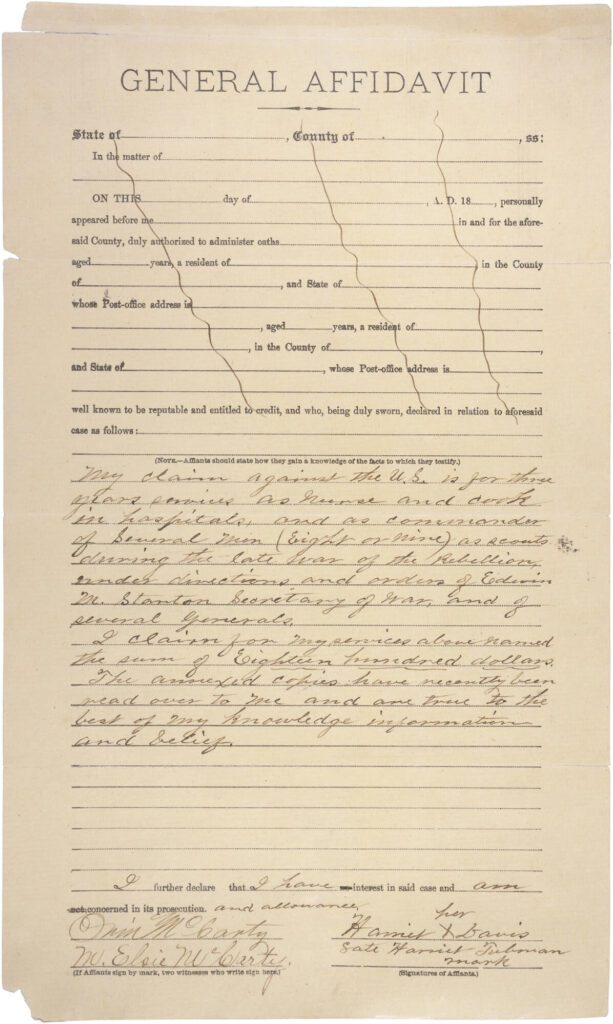
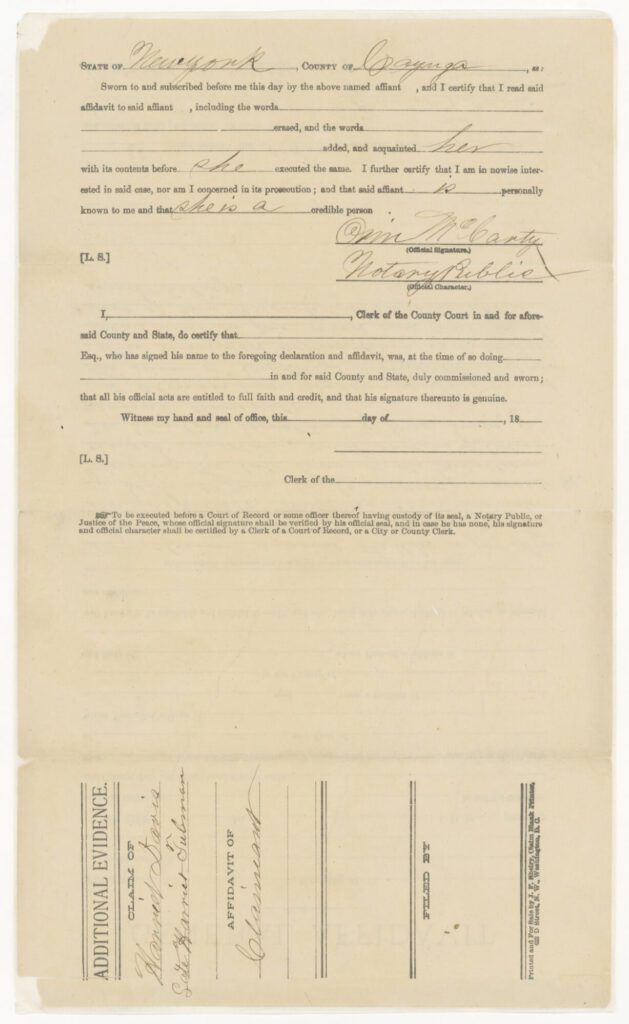
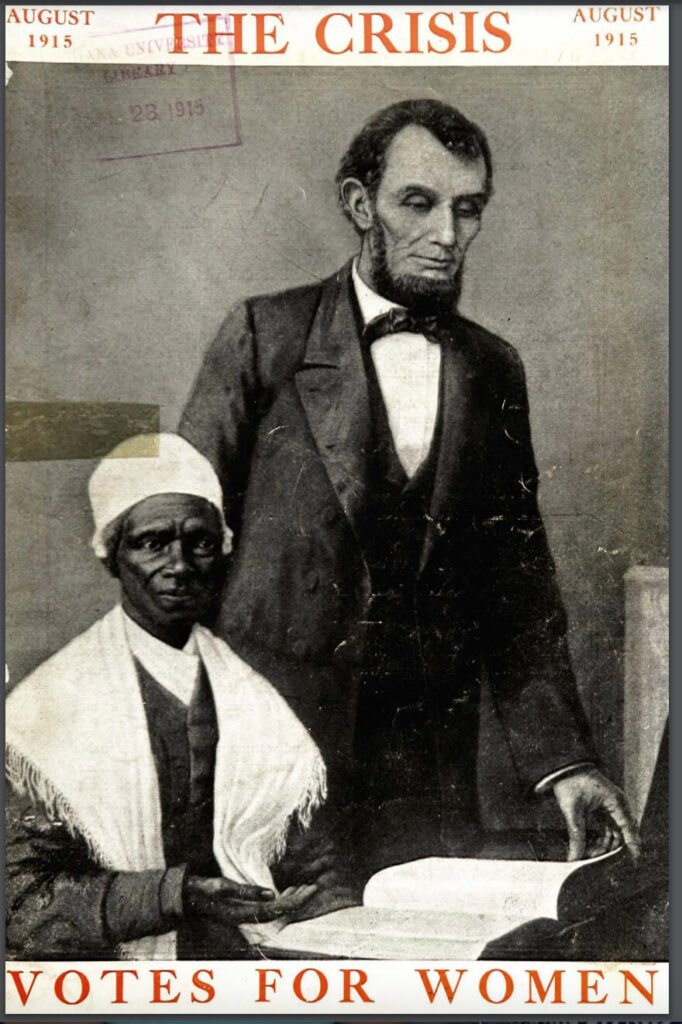
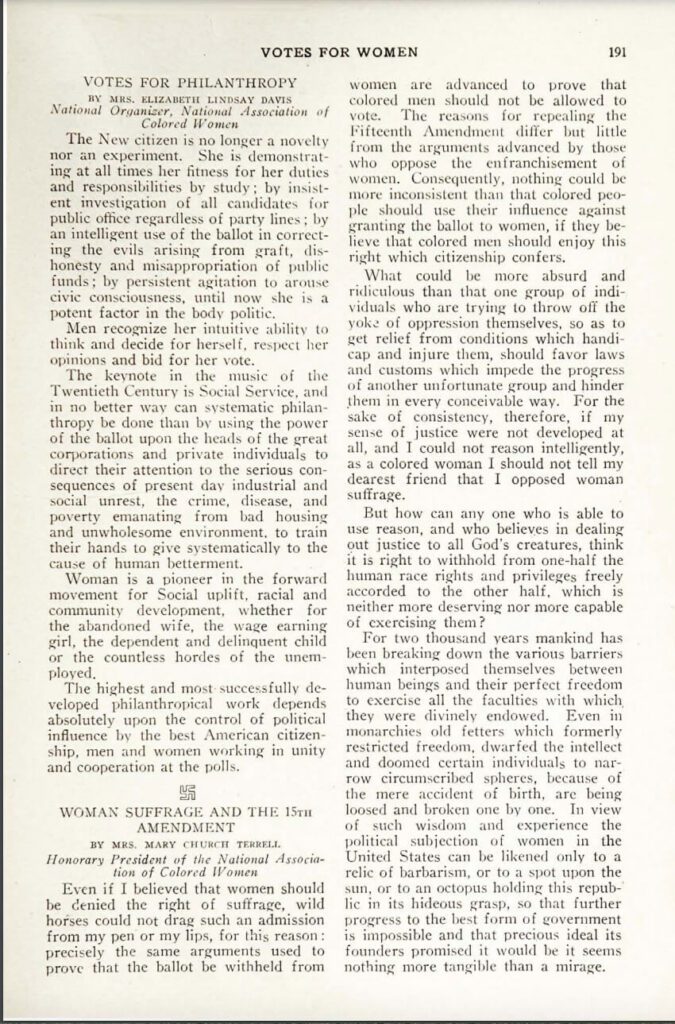
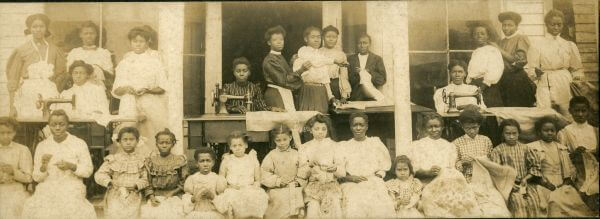
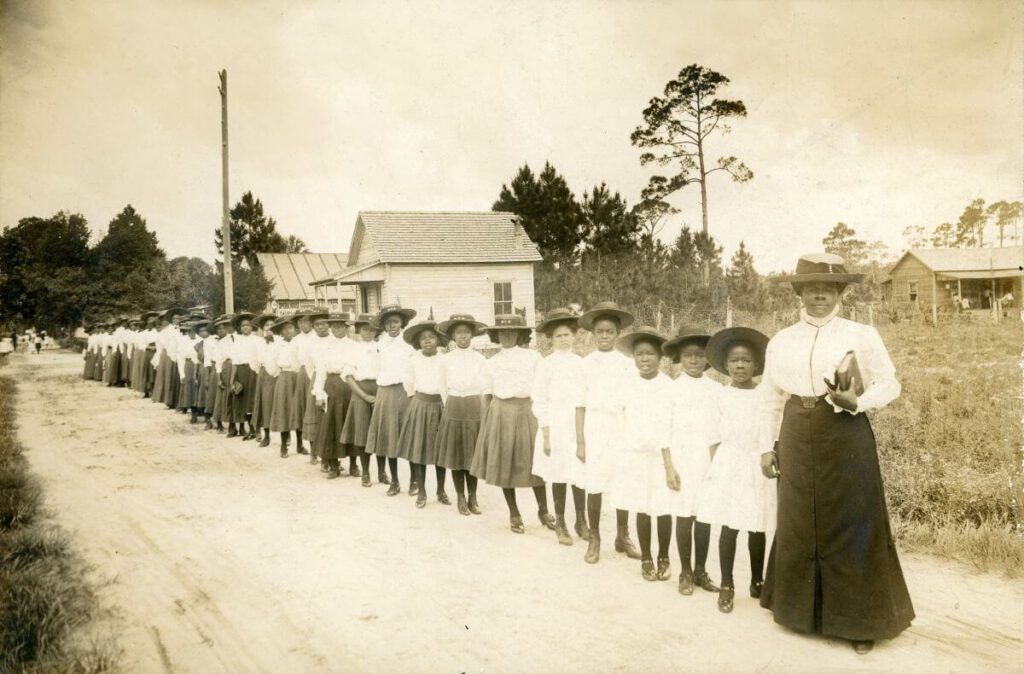

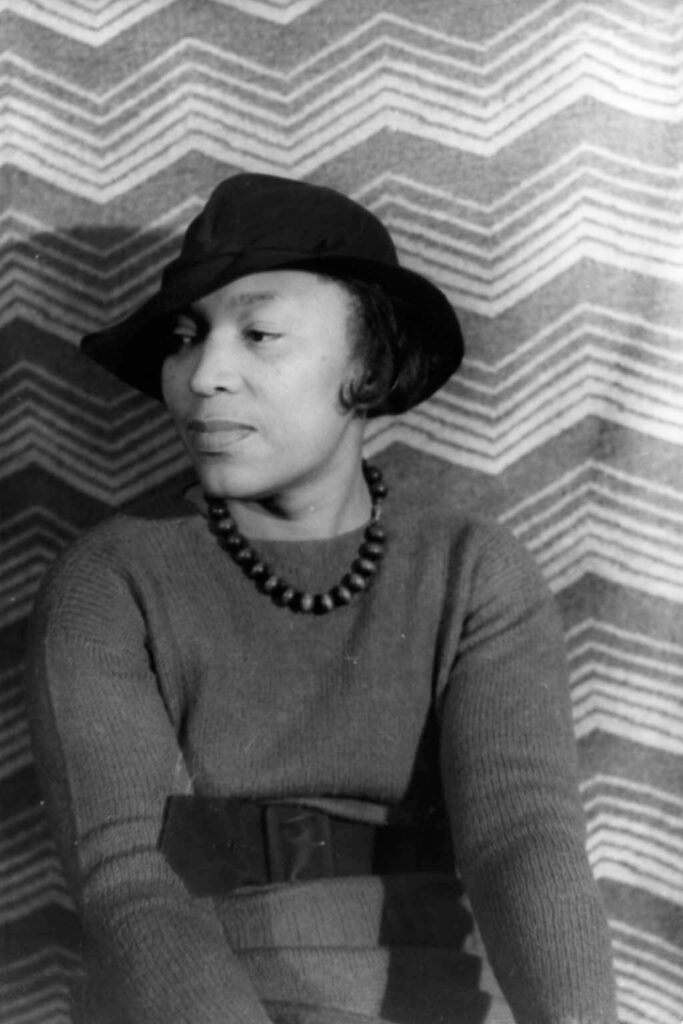
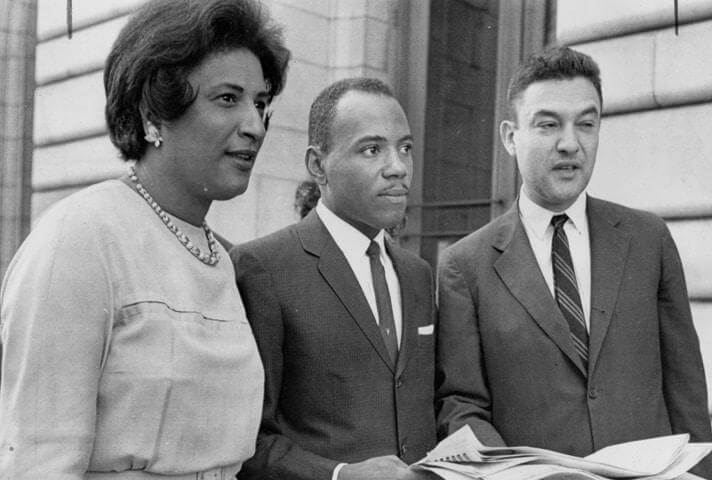


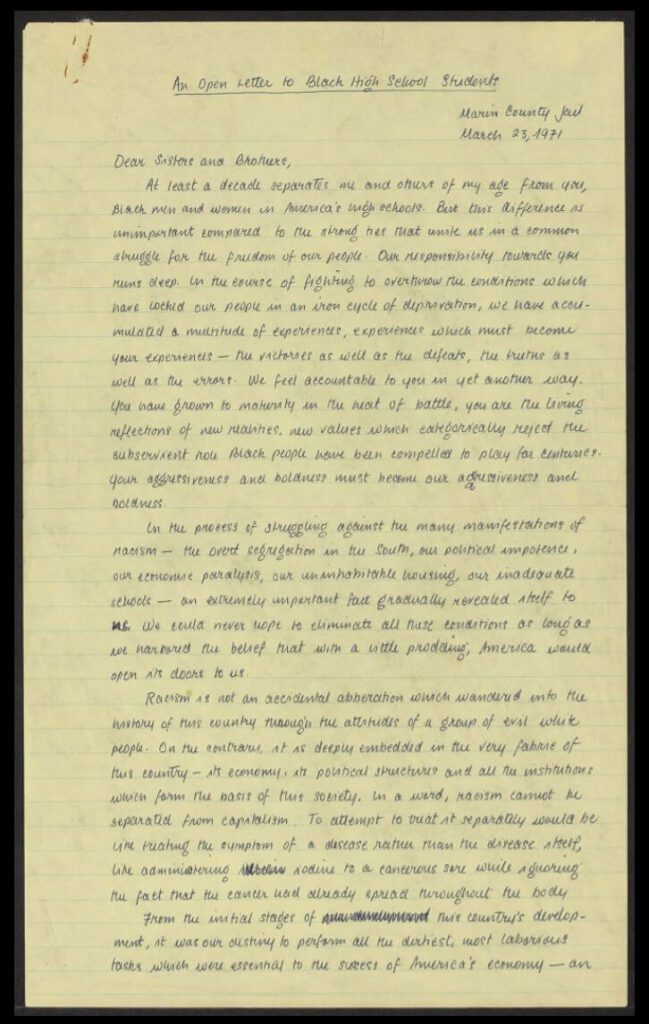
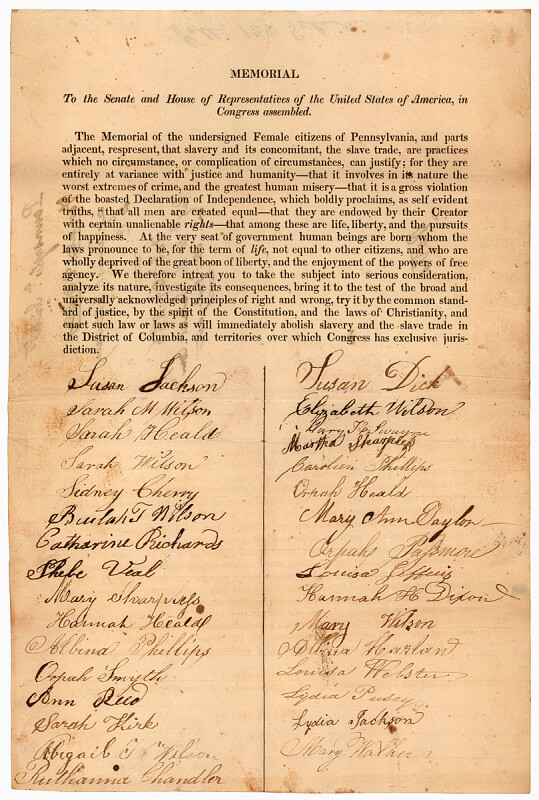
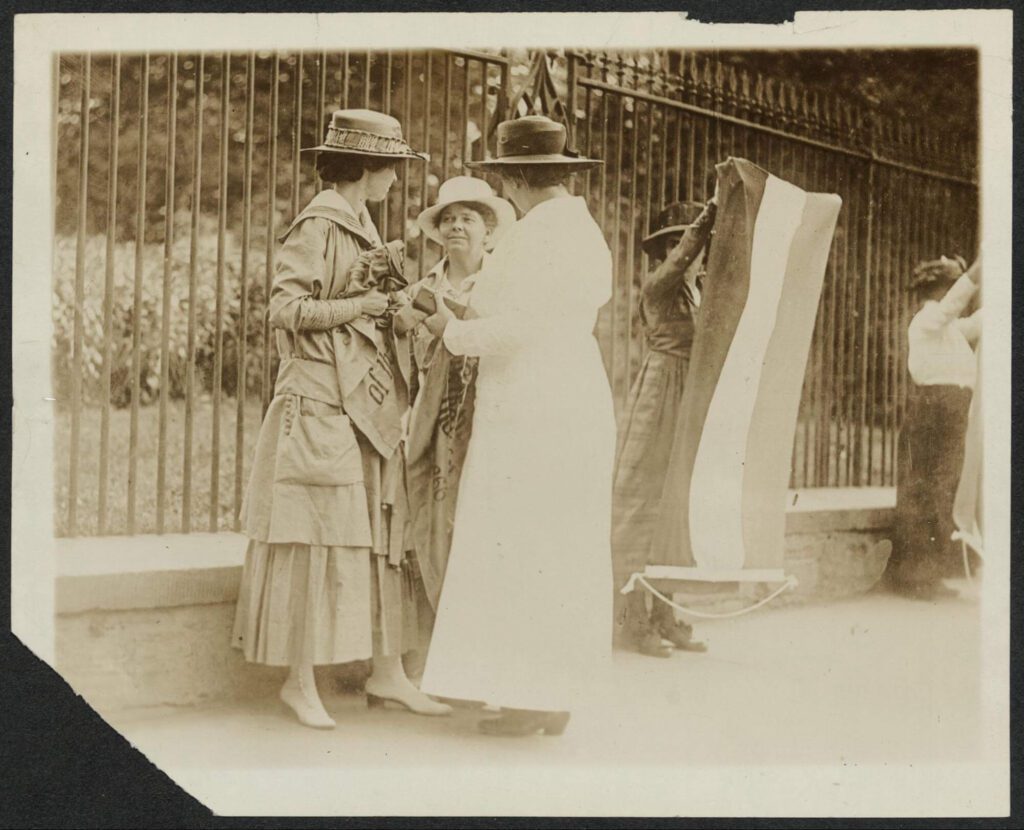



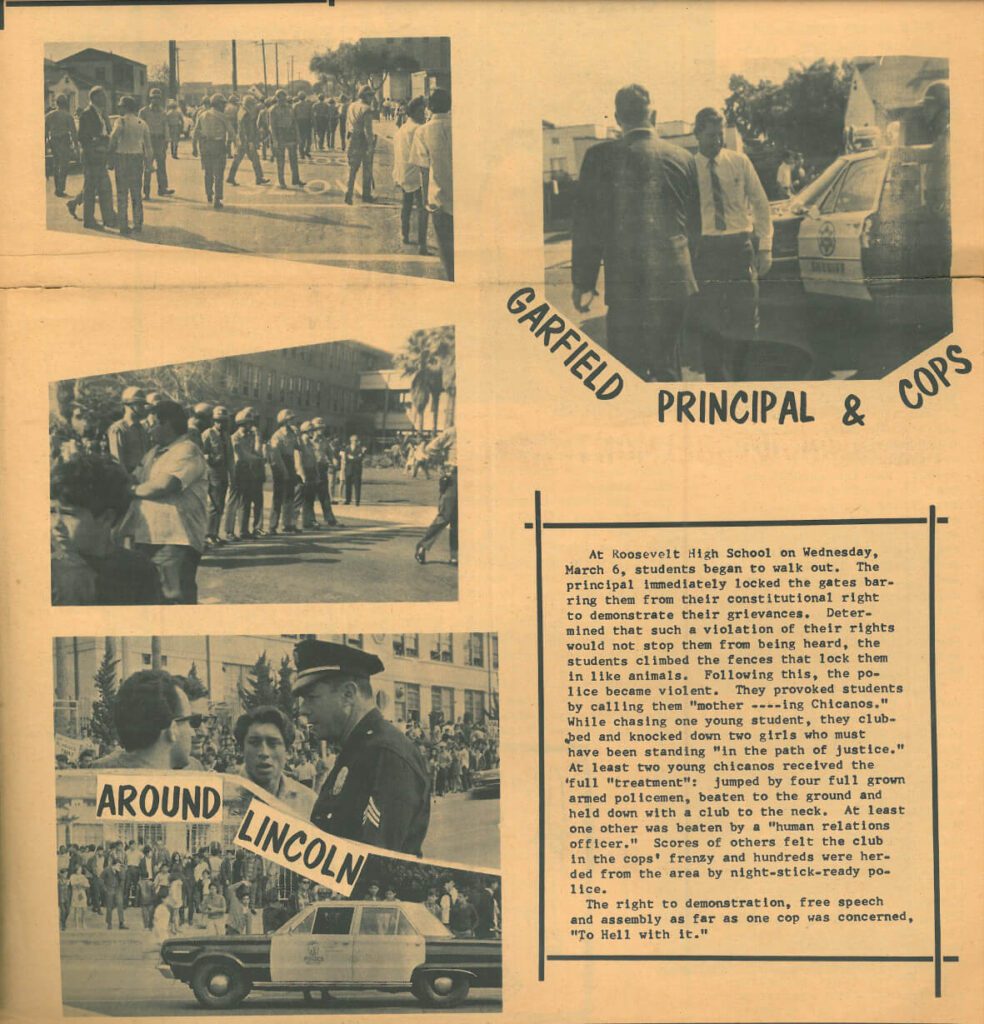
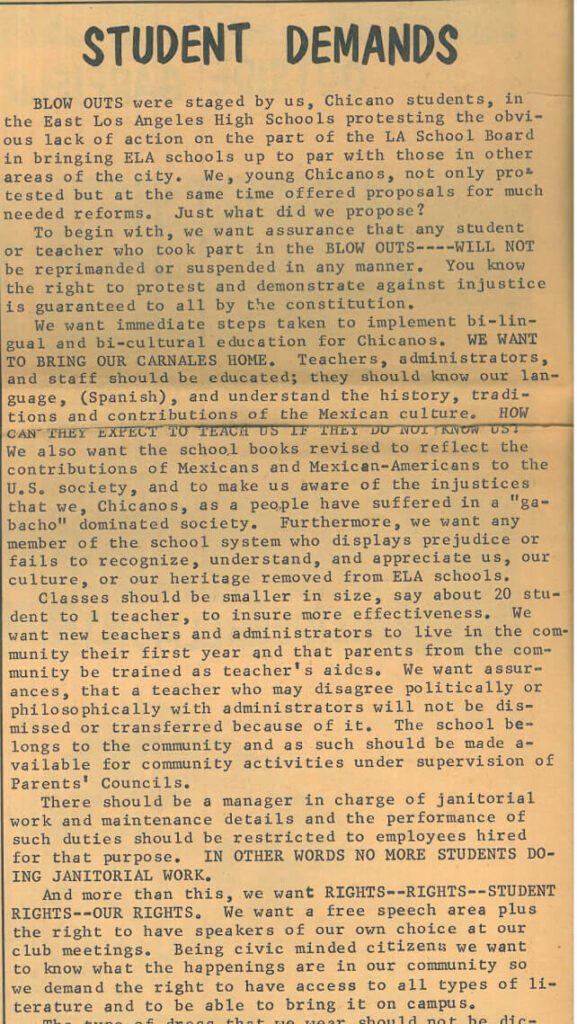
![Village of Skokie v. National Socialist Party of America [photographs,1978]](/wp-content/uploads/2023/09/In-Village-of-Skokie-v.-National-Socialist-Party-1024x682.jpg)
![Village of Skokie v. National Socialist Party of America [photographs,1978]](/wp-content/uploads/2023/09/In-Village-of-Skokie-v.-National-Socialist-Party-2-1024x678.jpg)
![Village of Skokie v. National Socialist Party of America [photographs,1978]](/wp-content/uploads/2023/09/In-Village-of-Skokie-v.-National-Socialist-Party-3.jpg)

